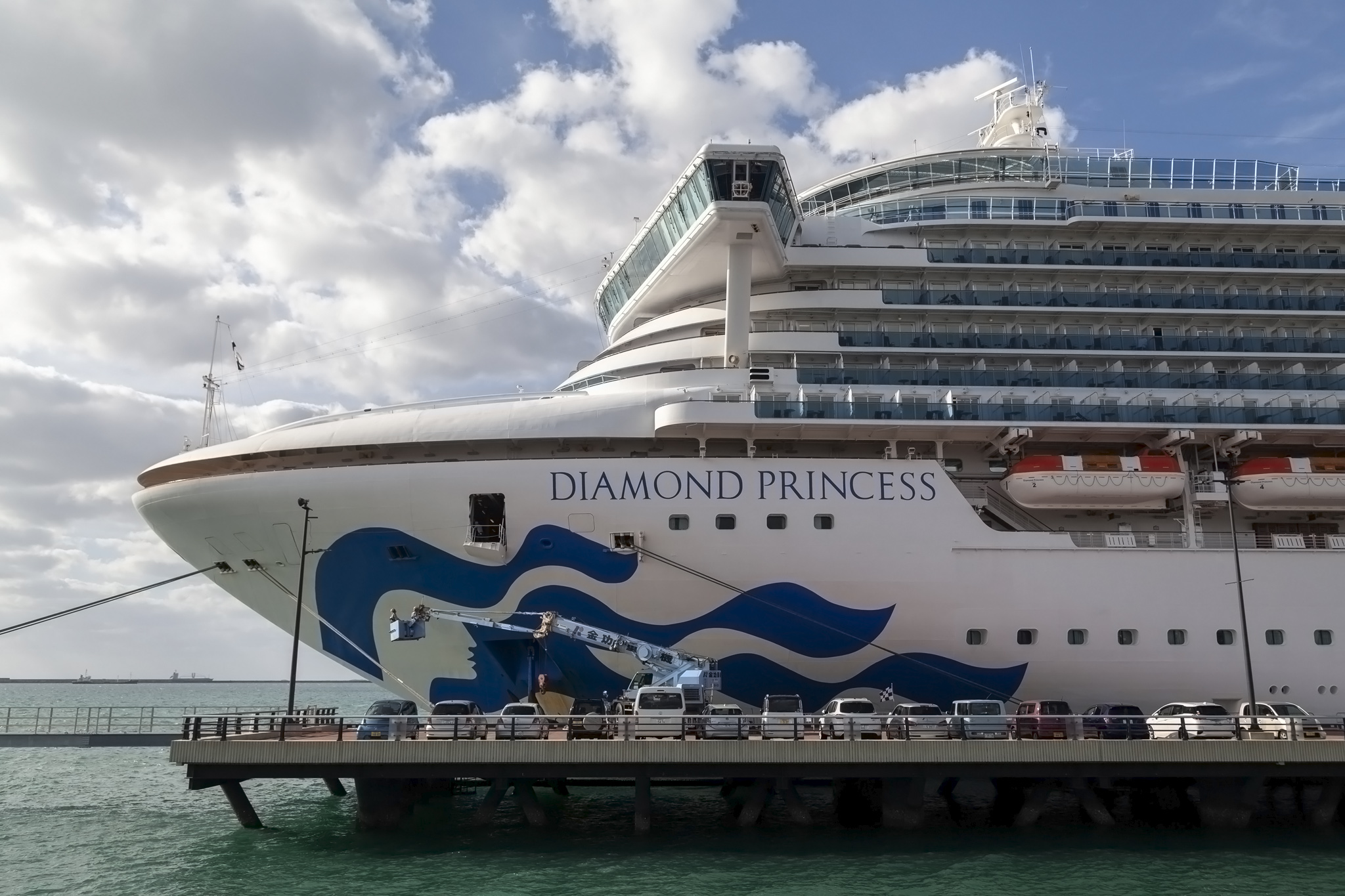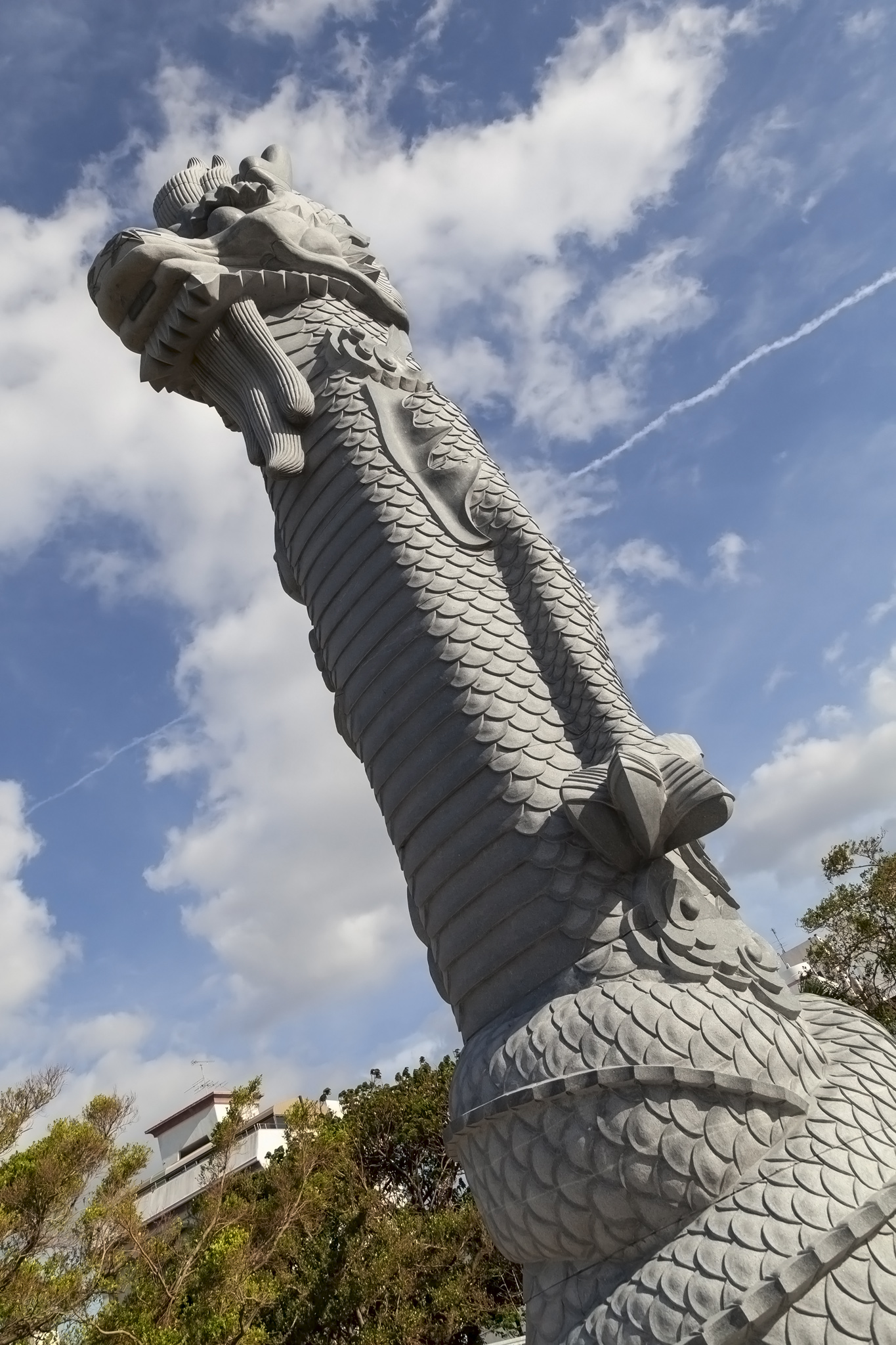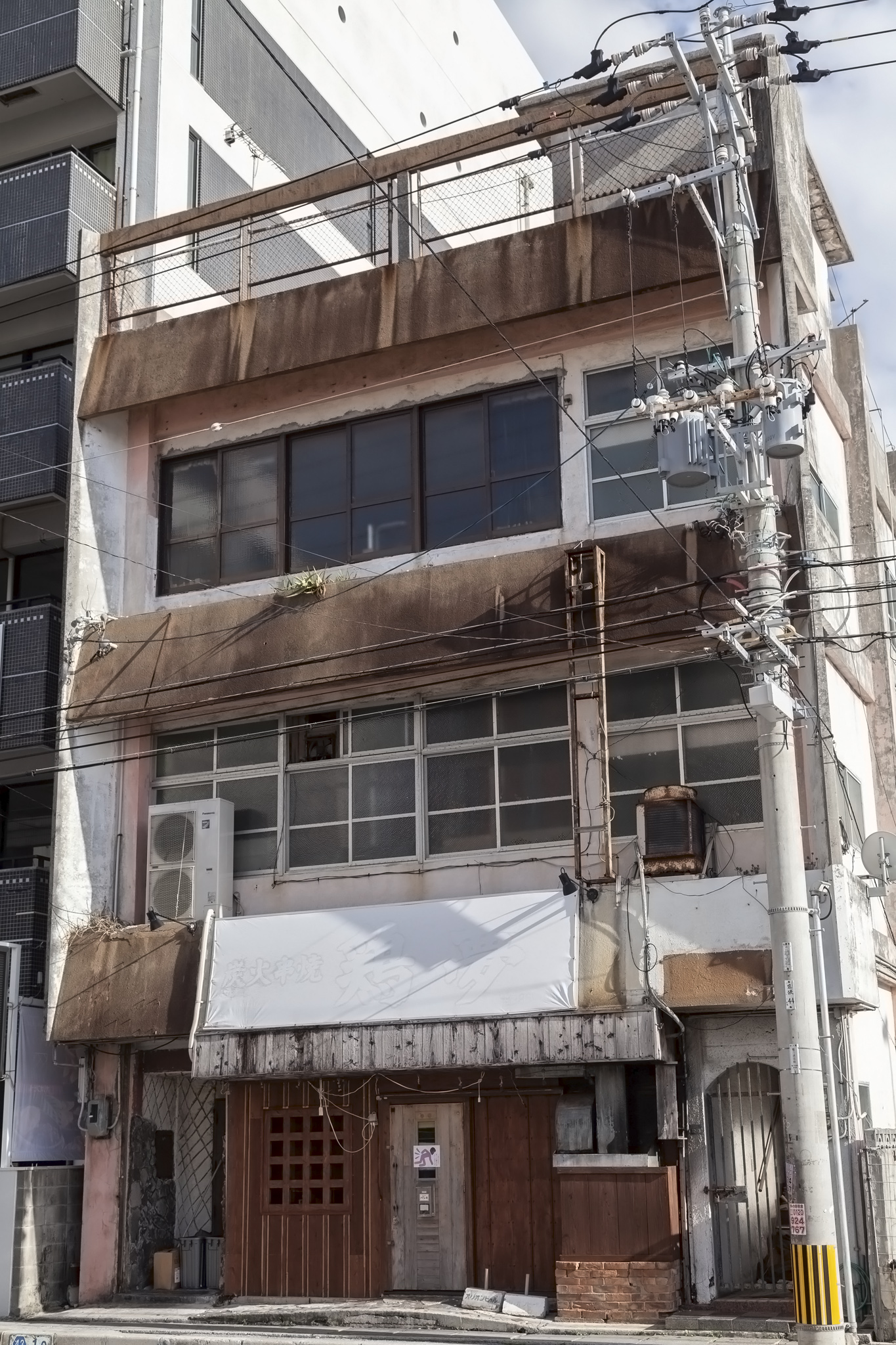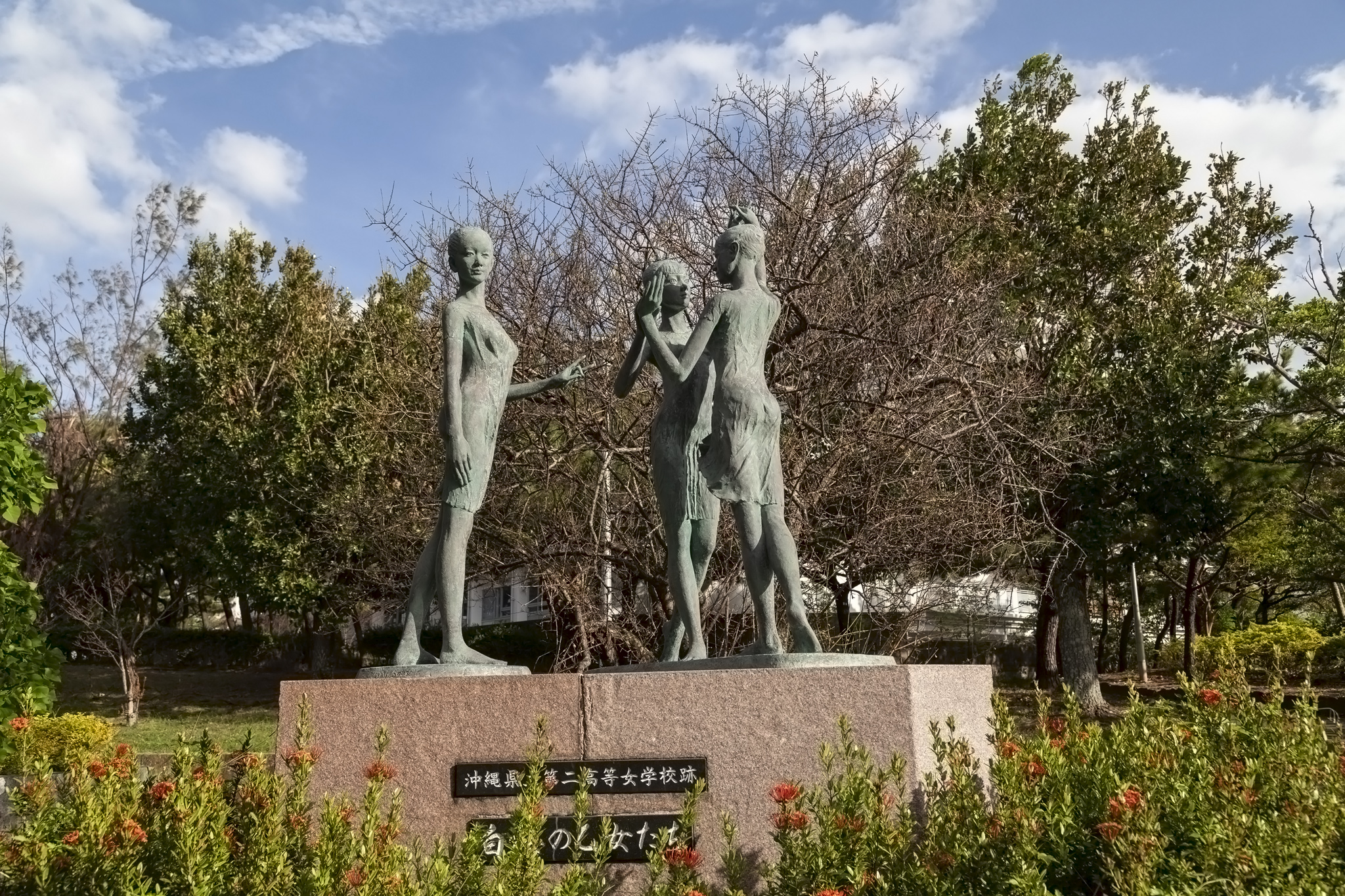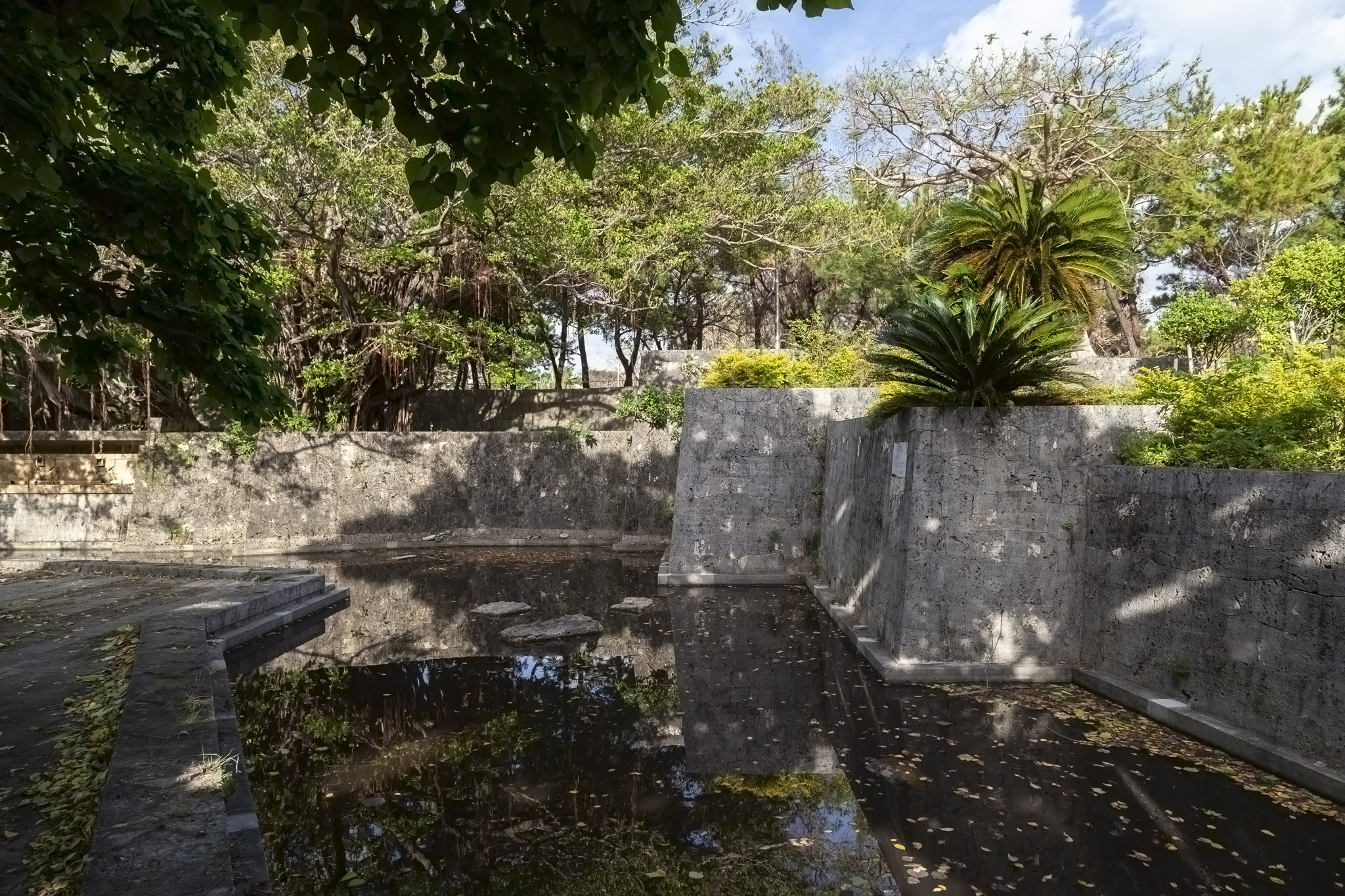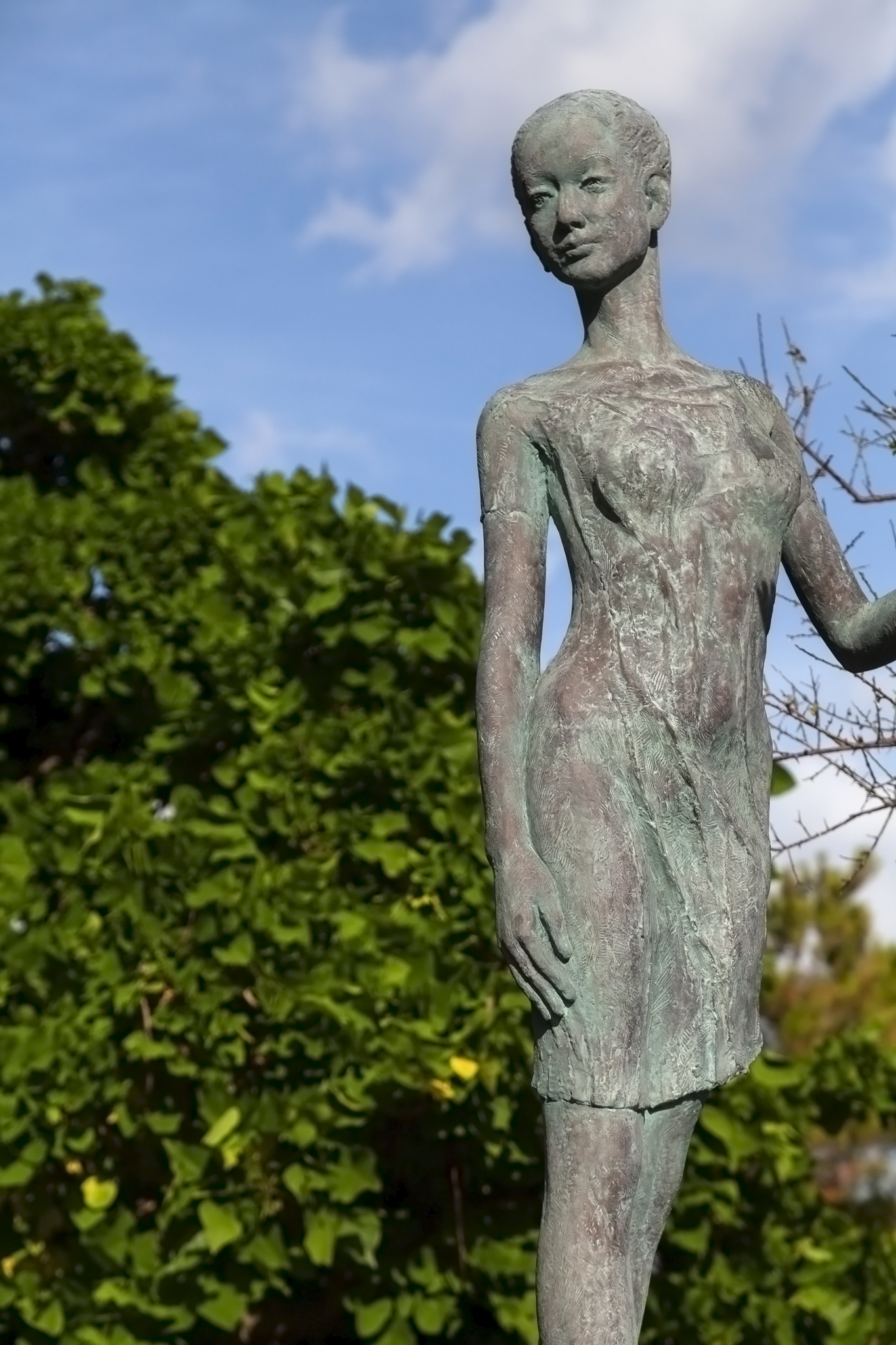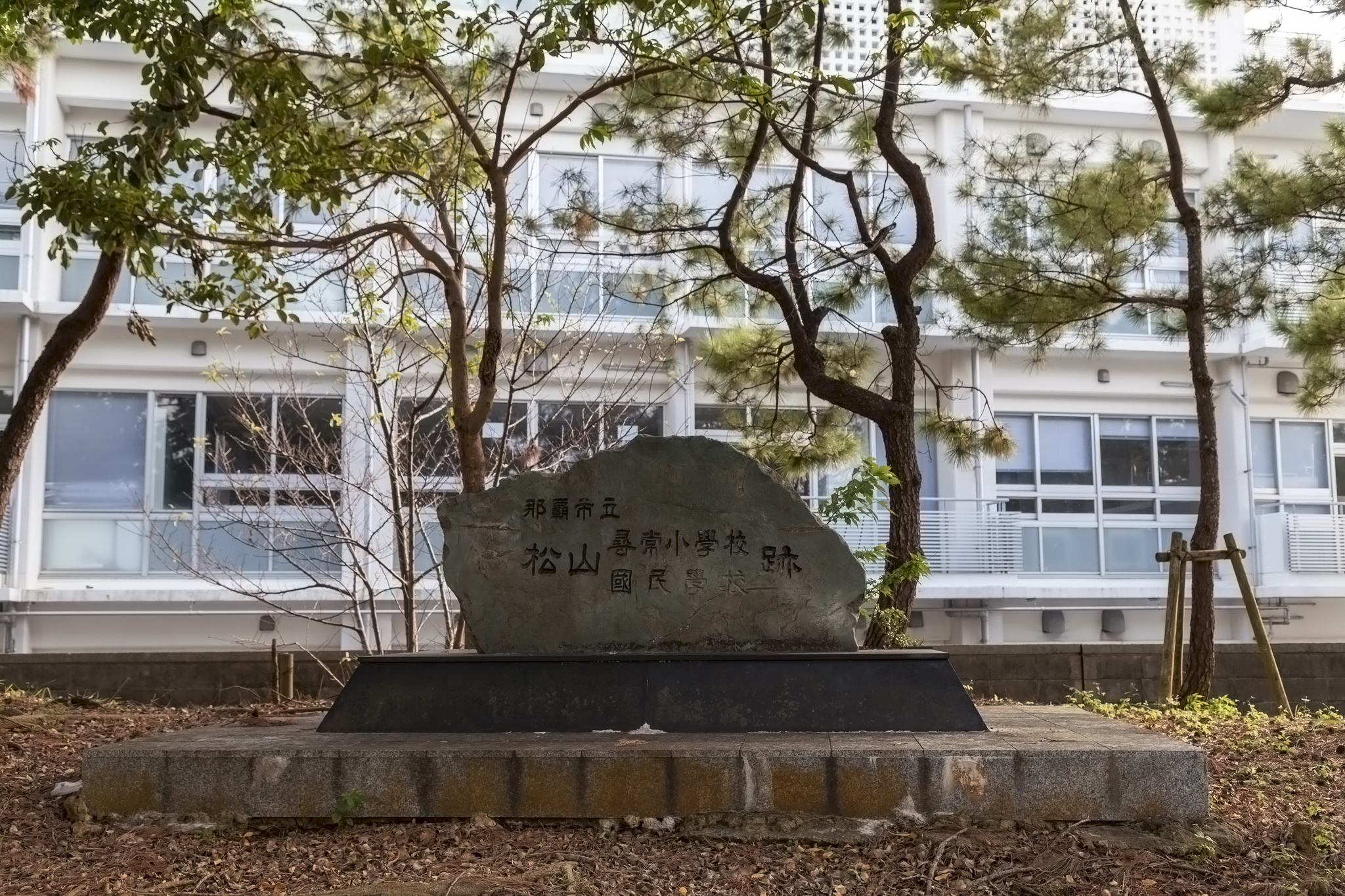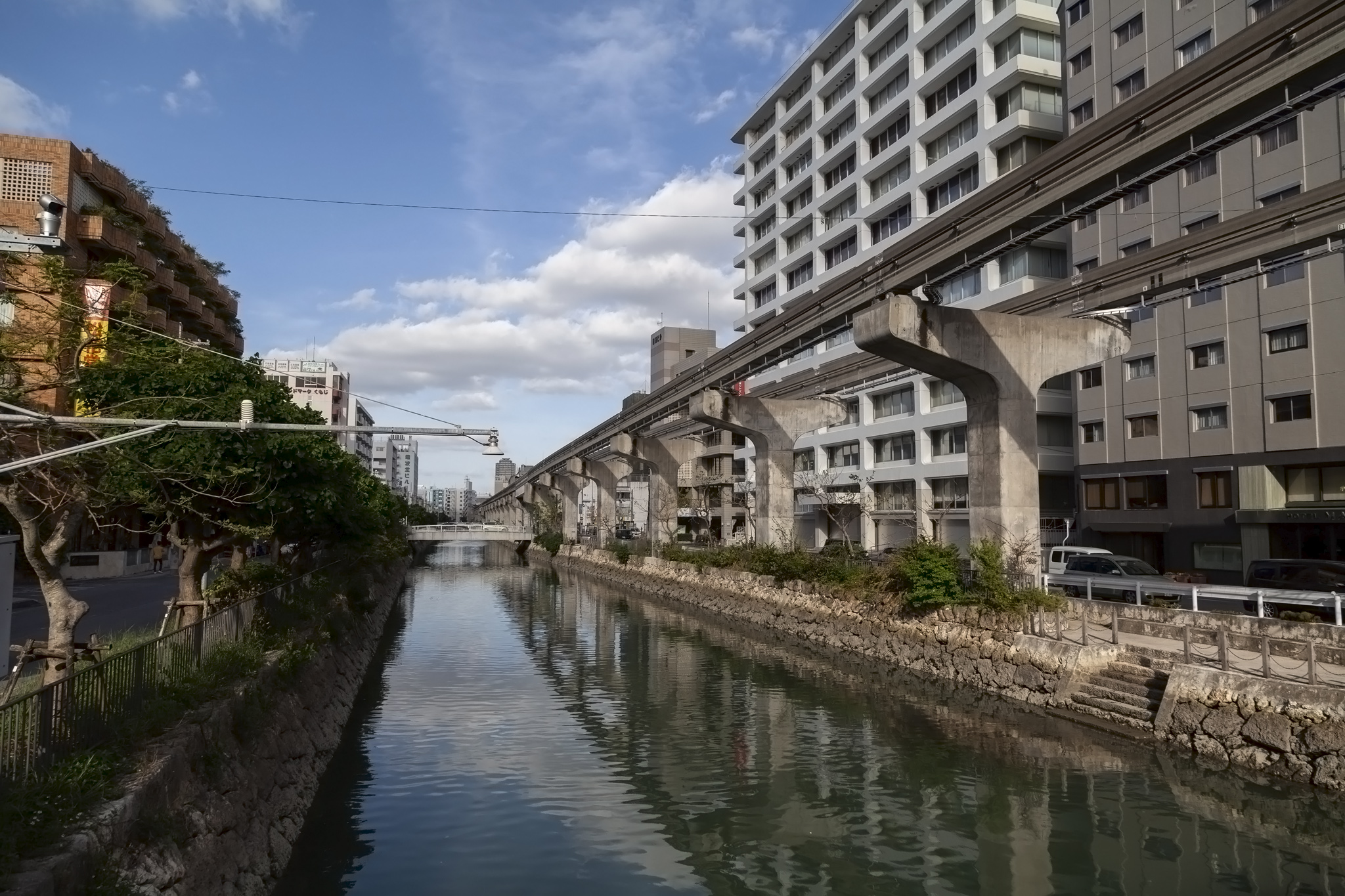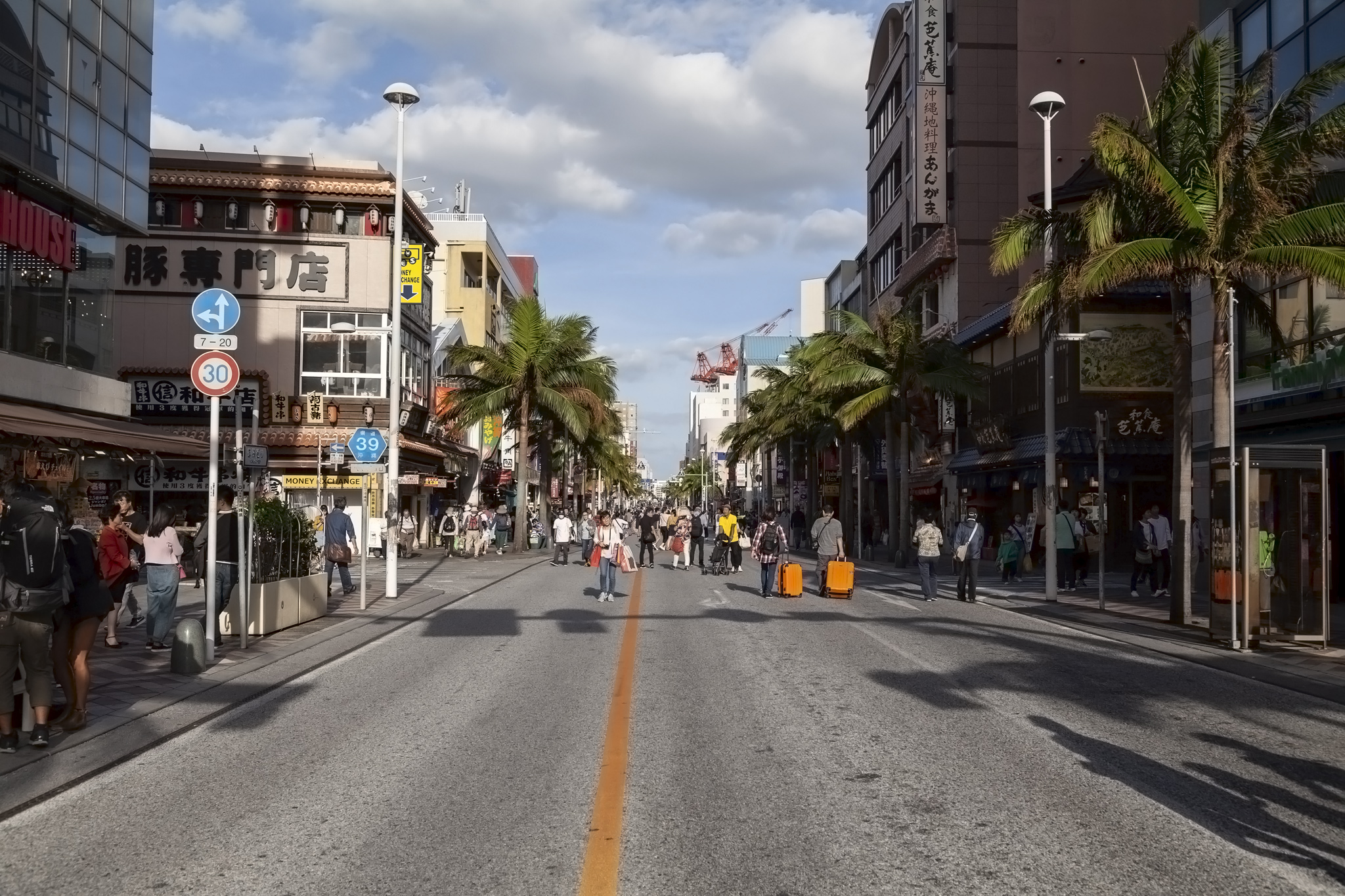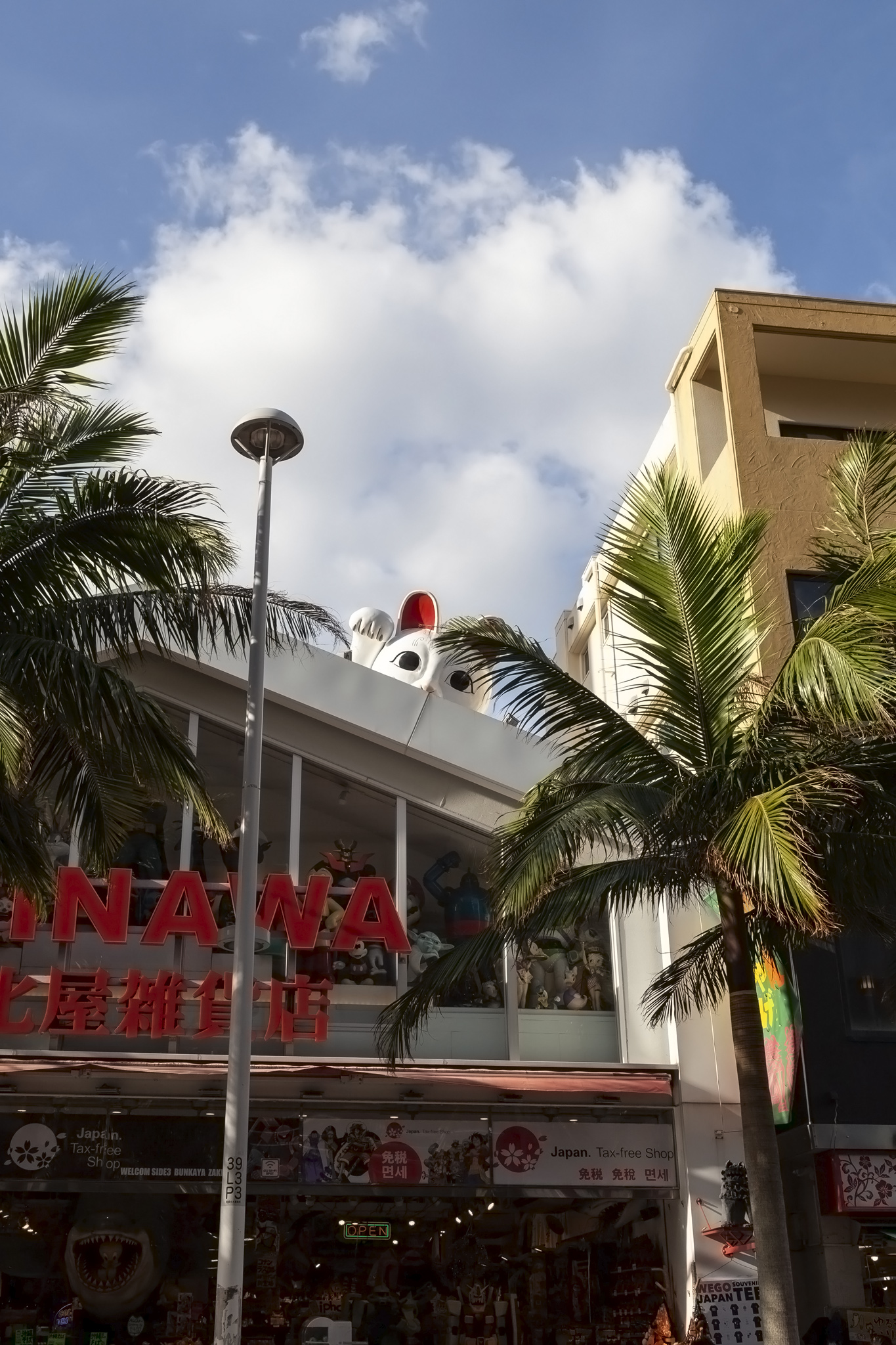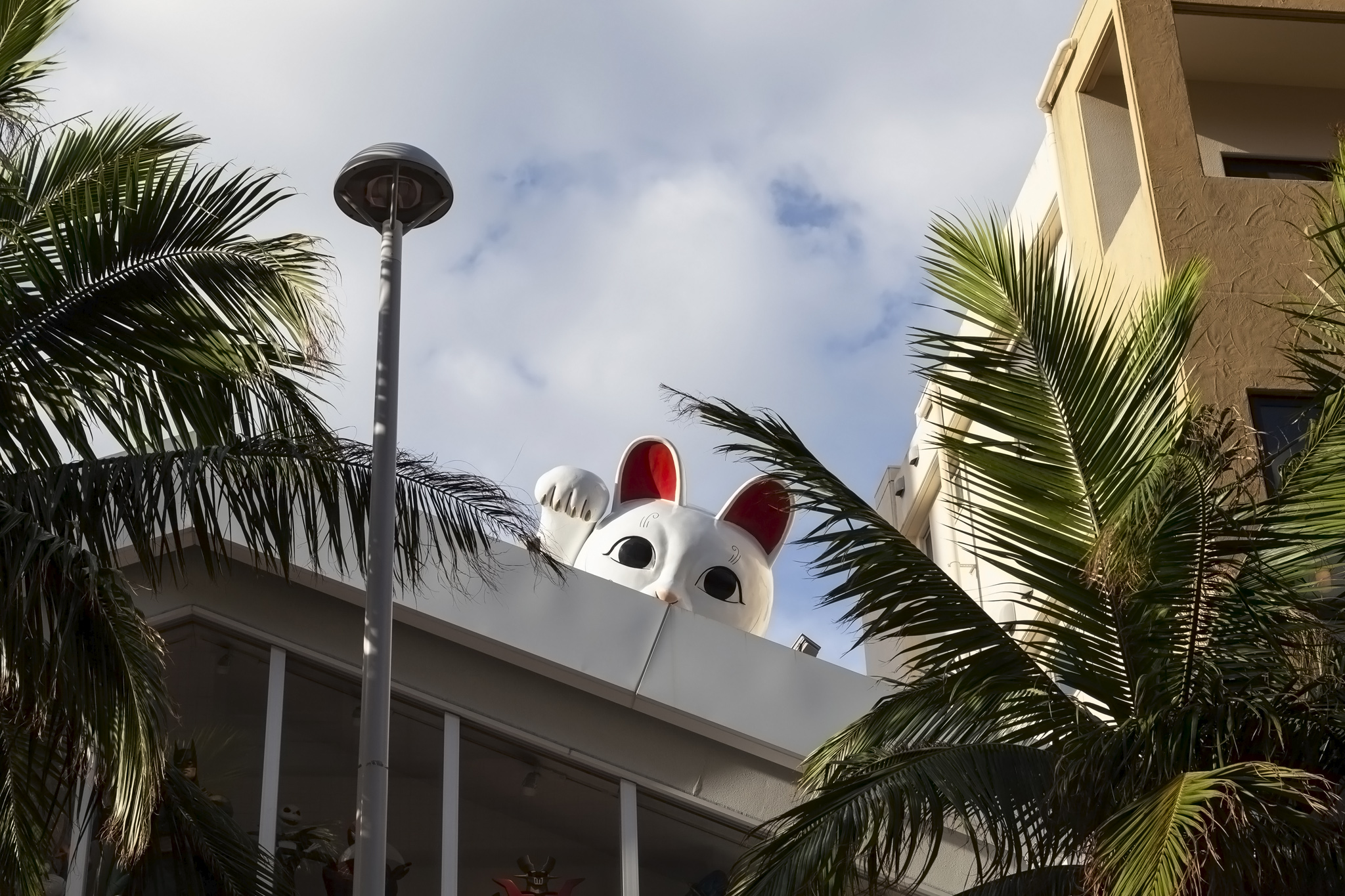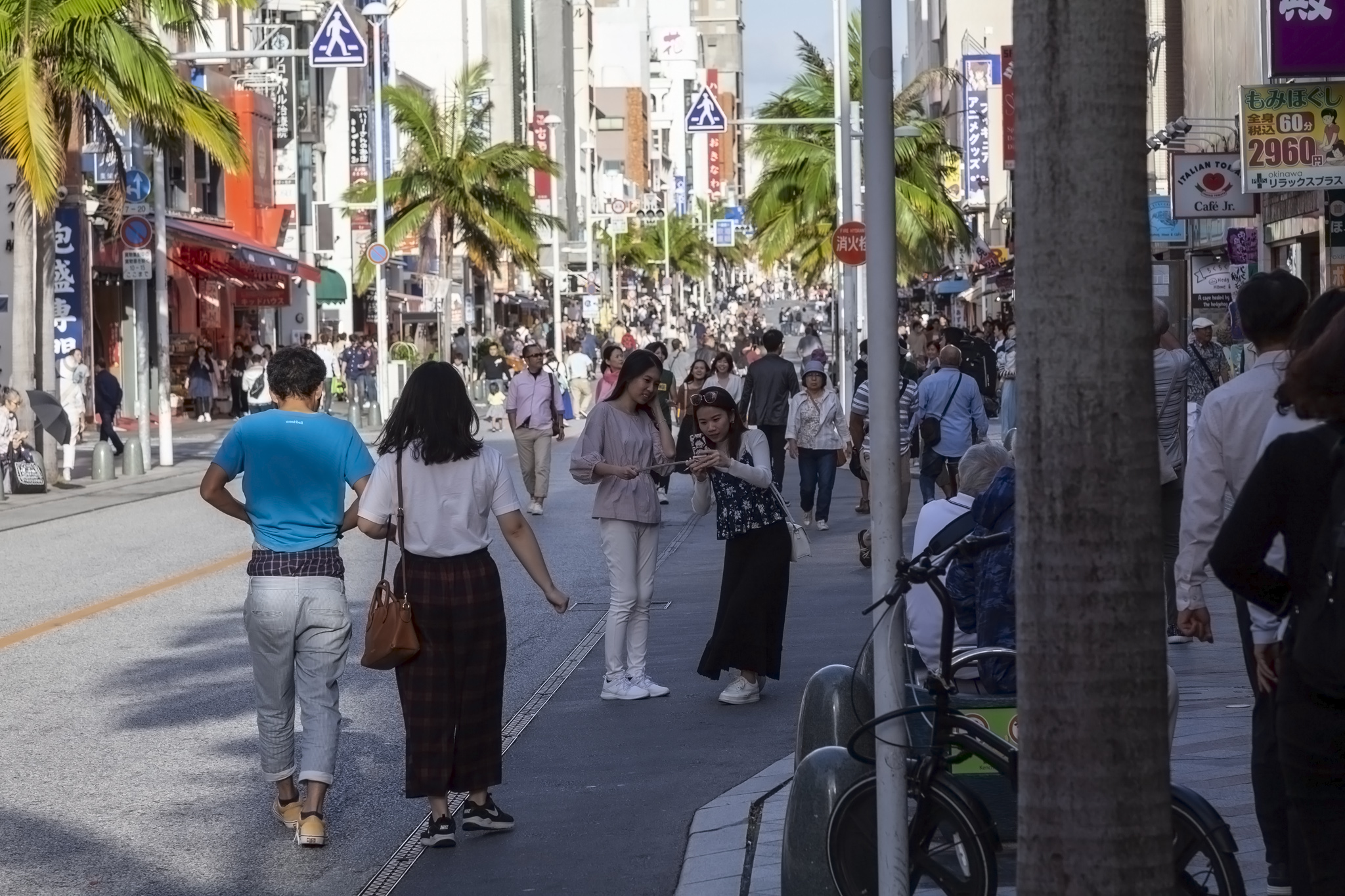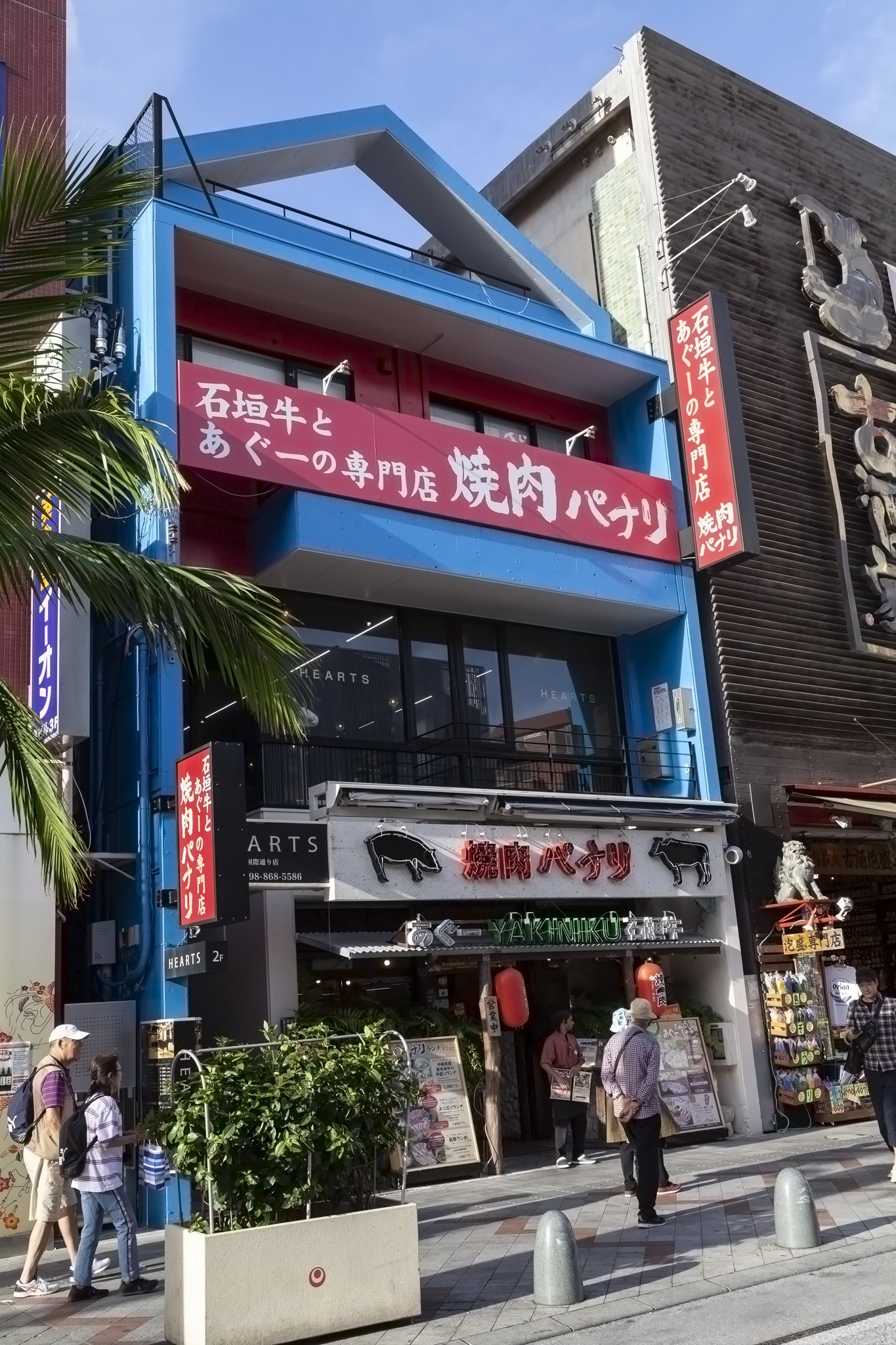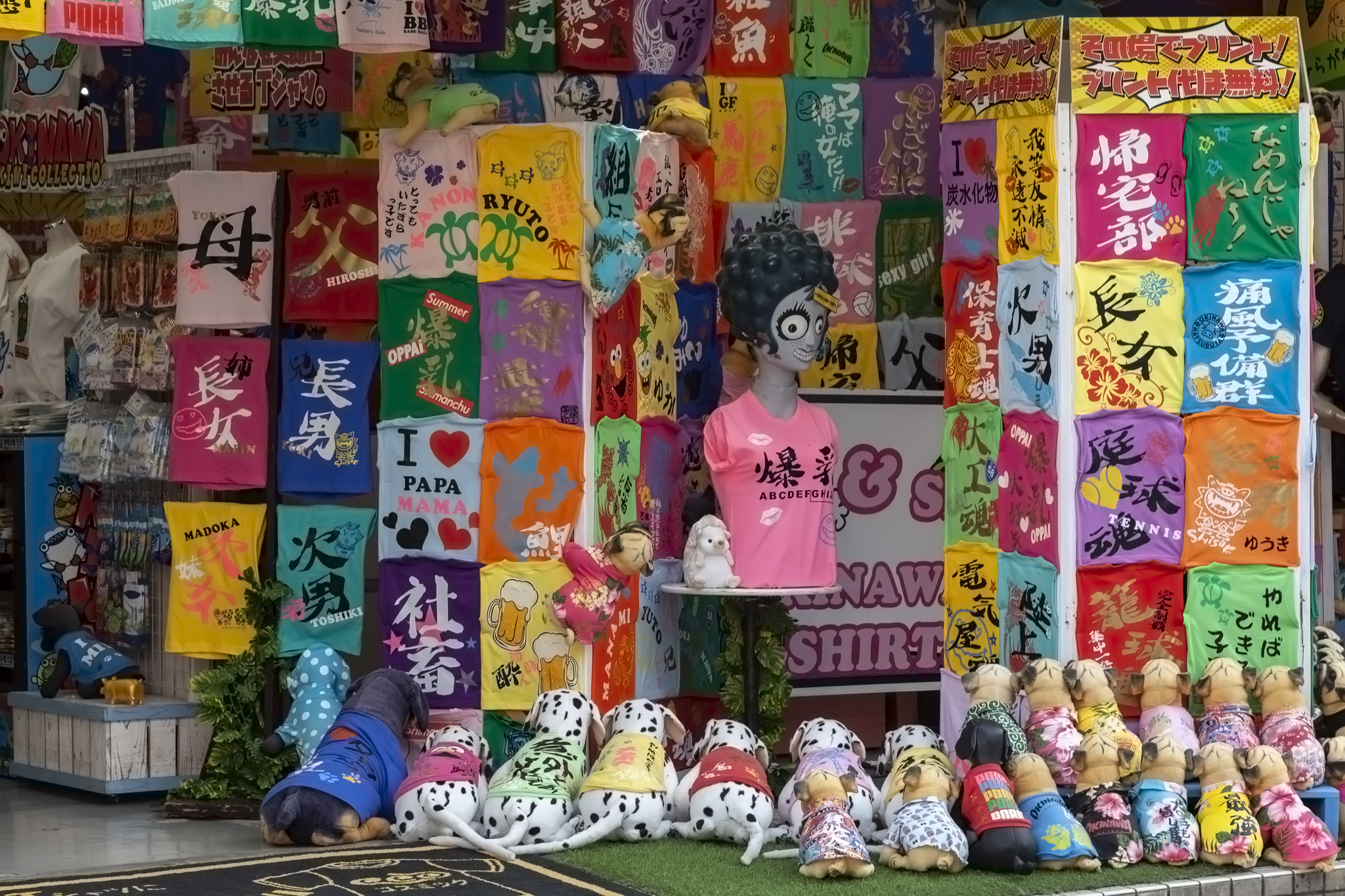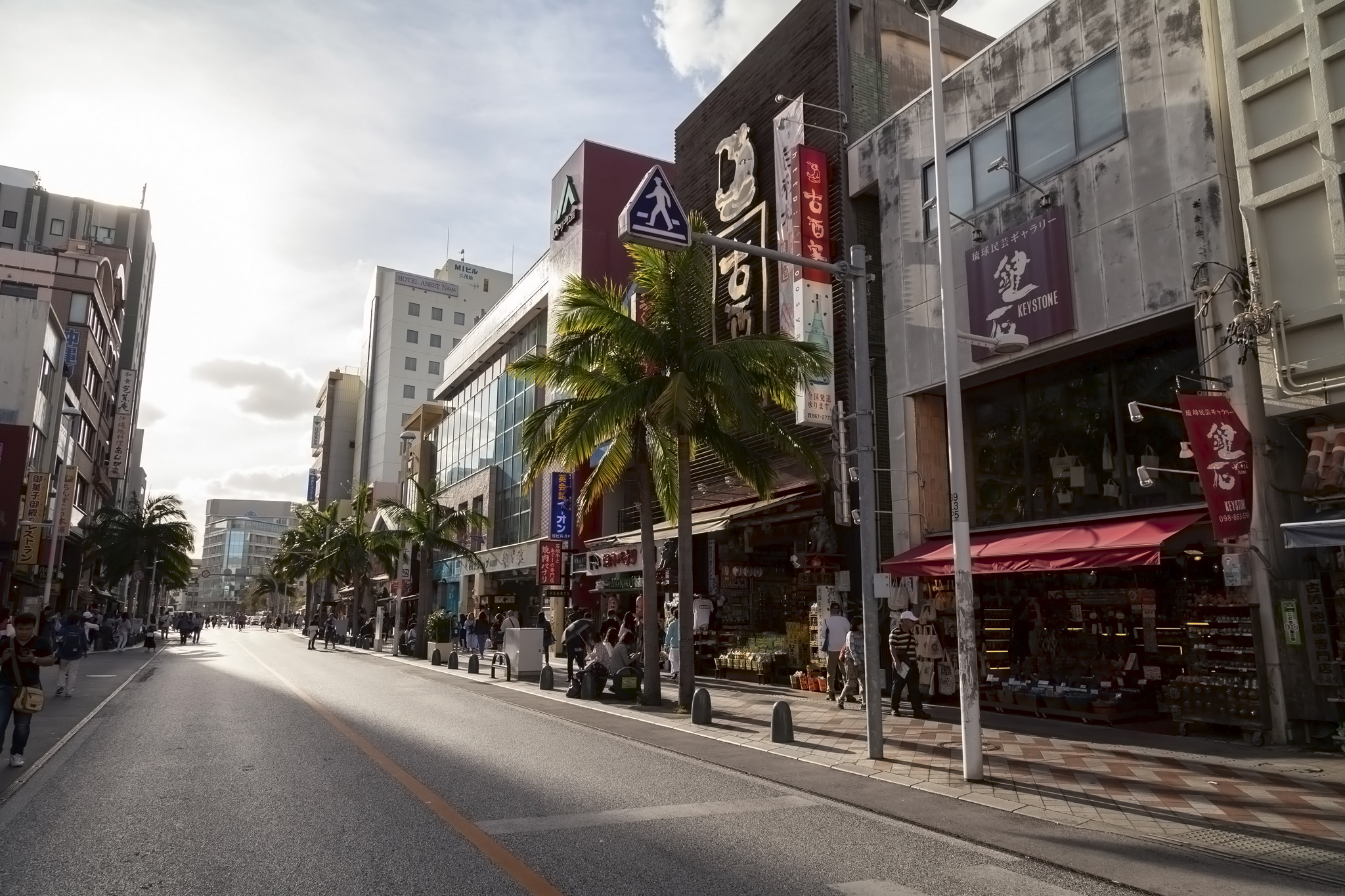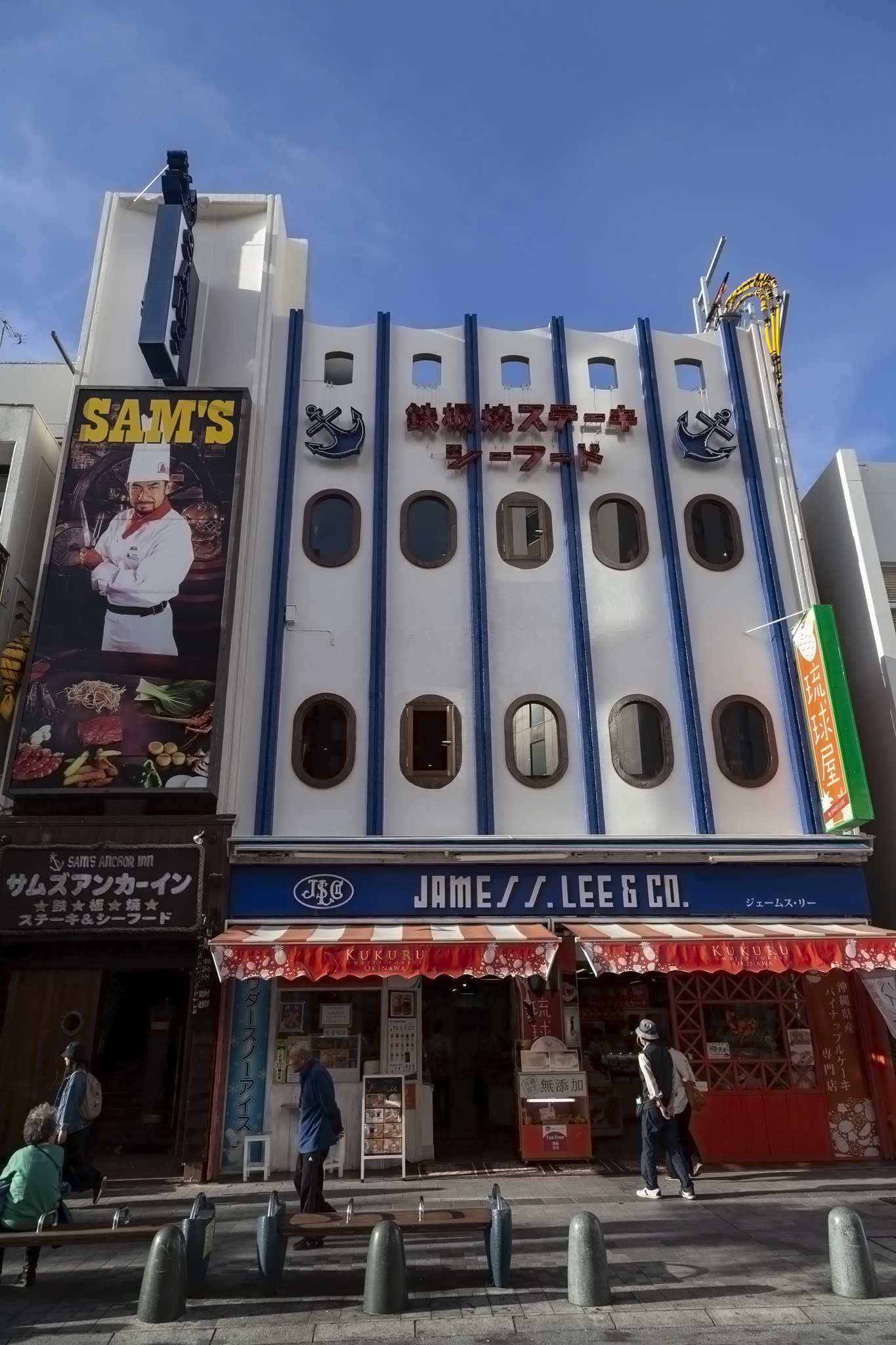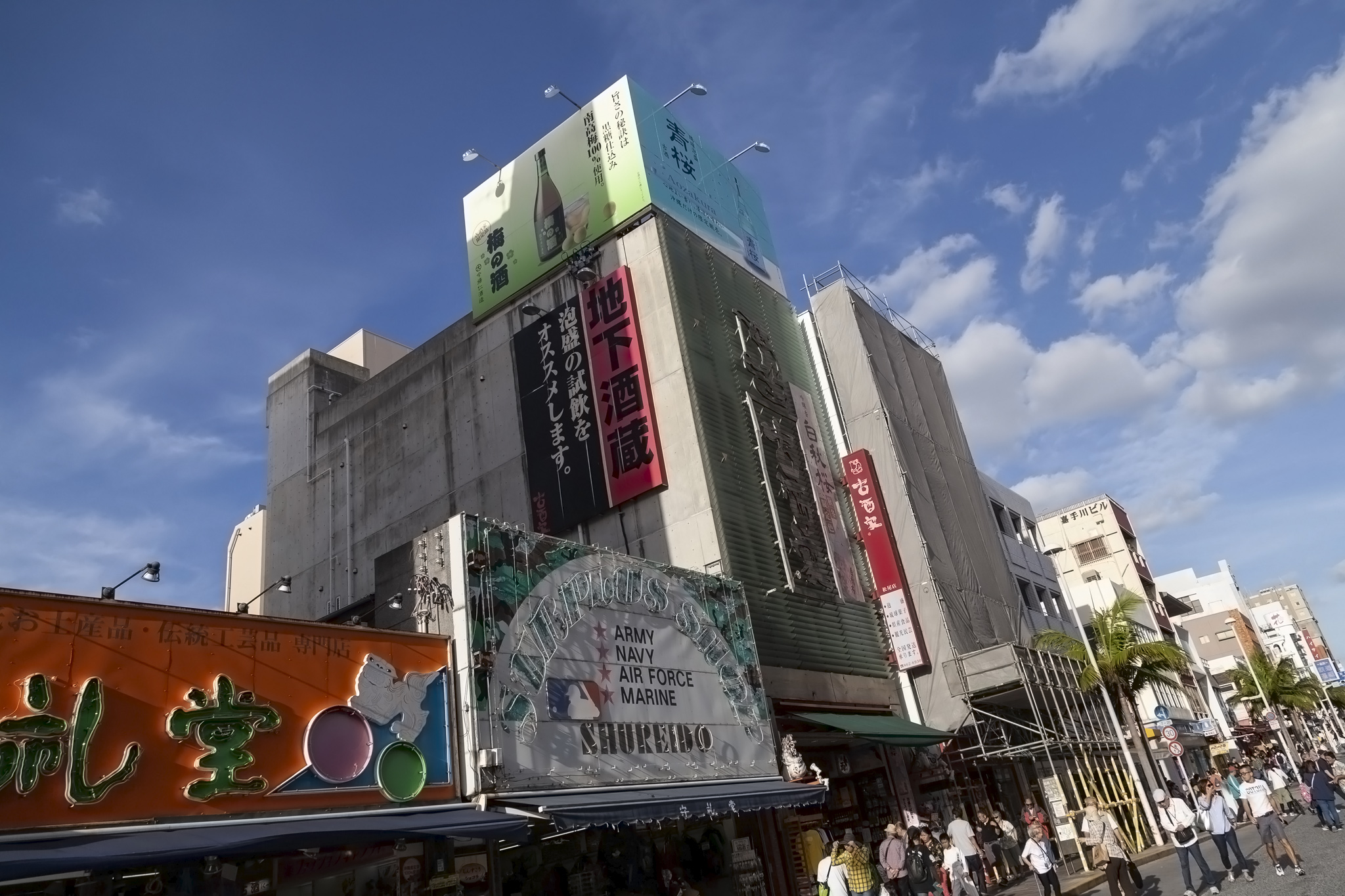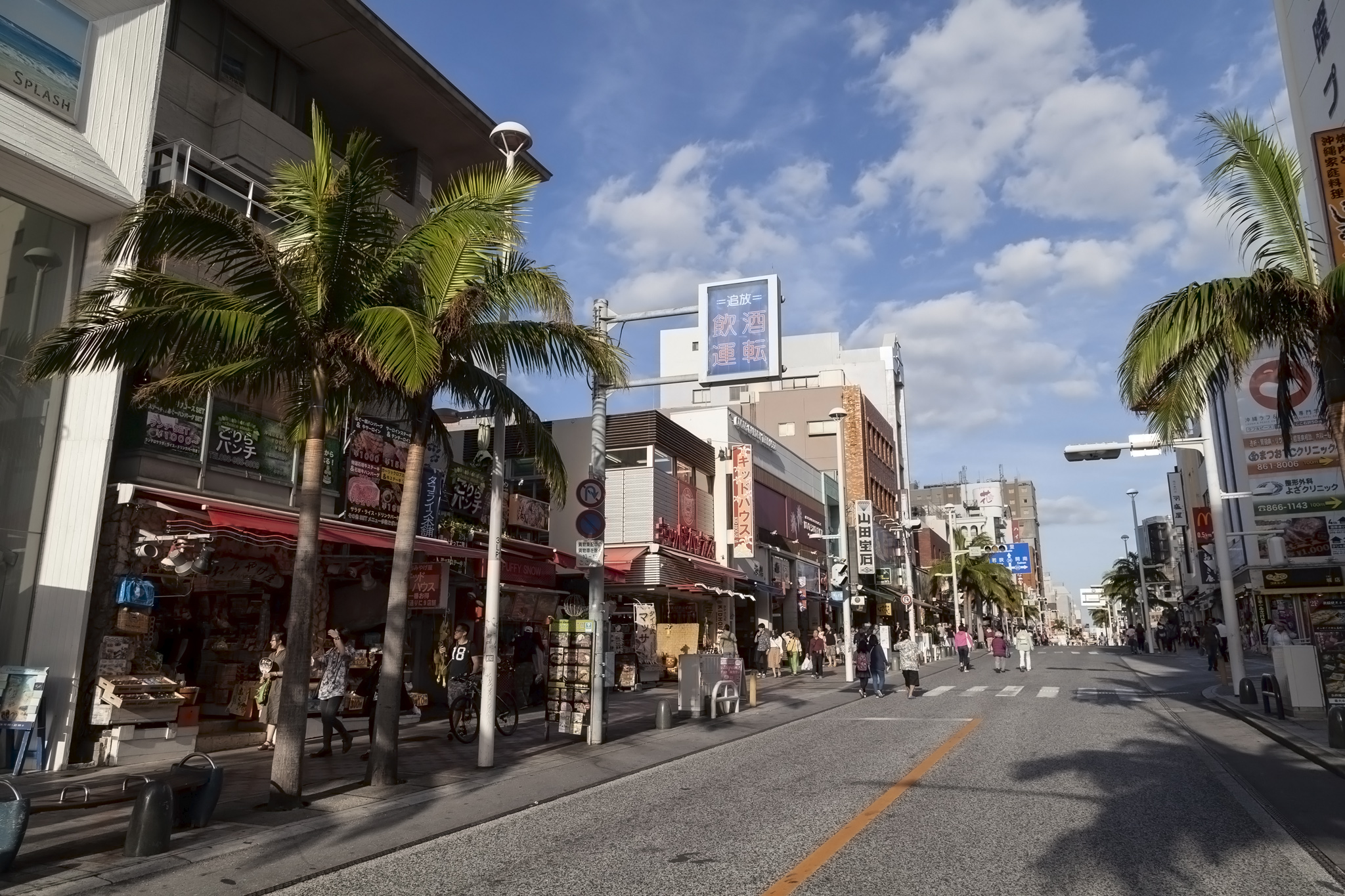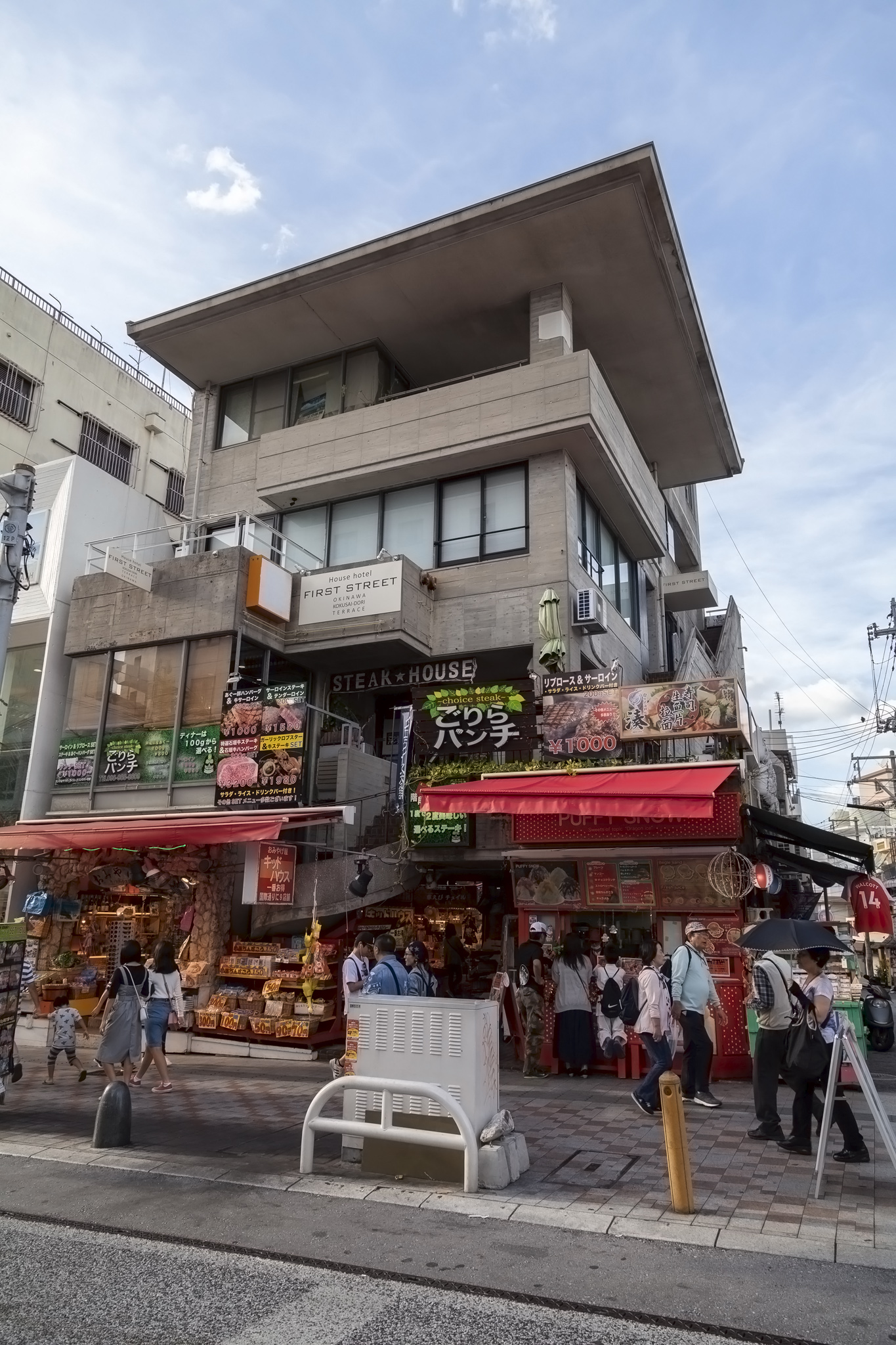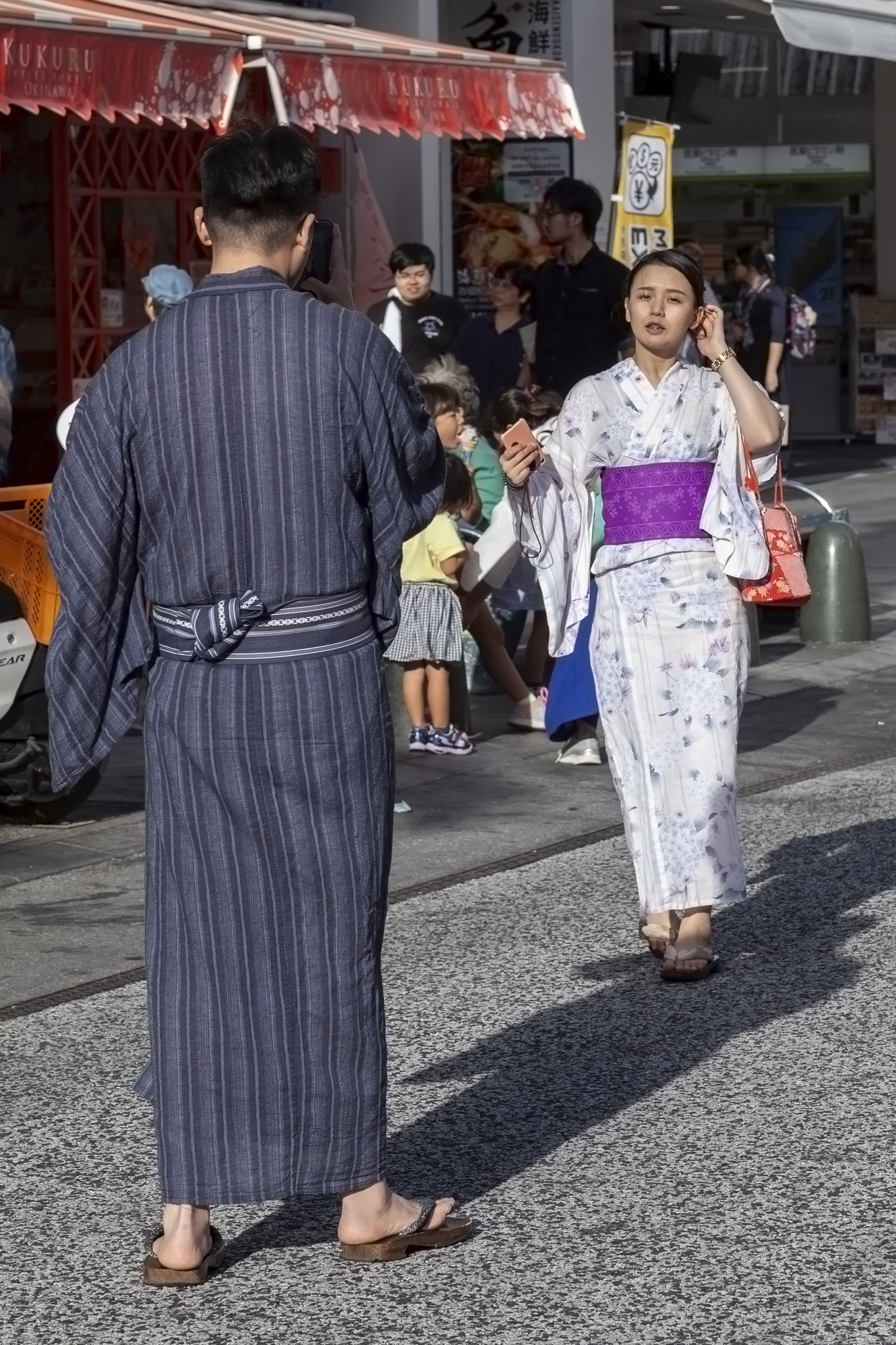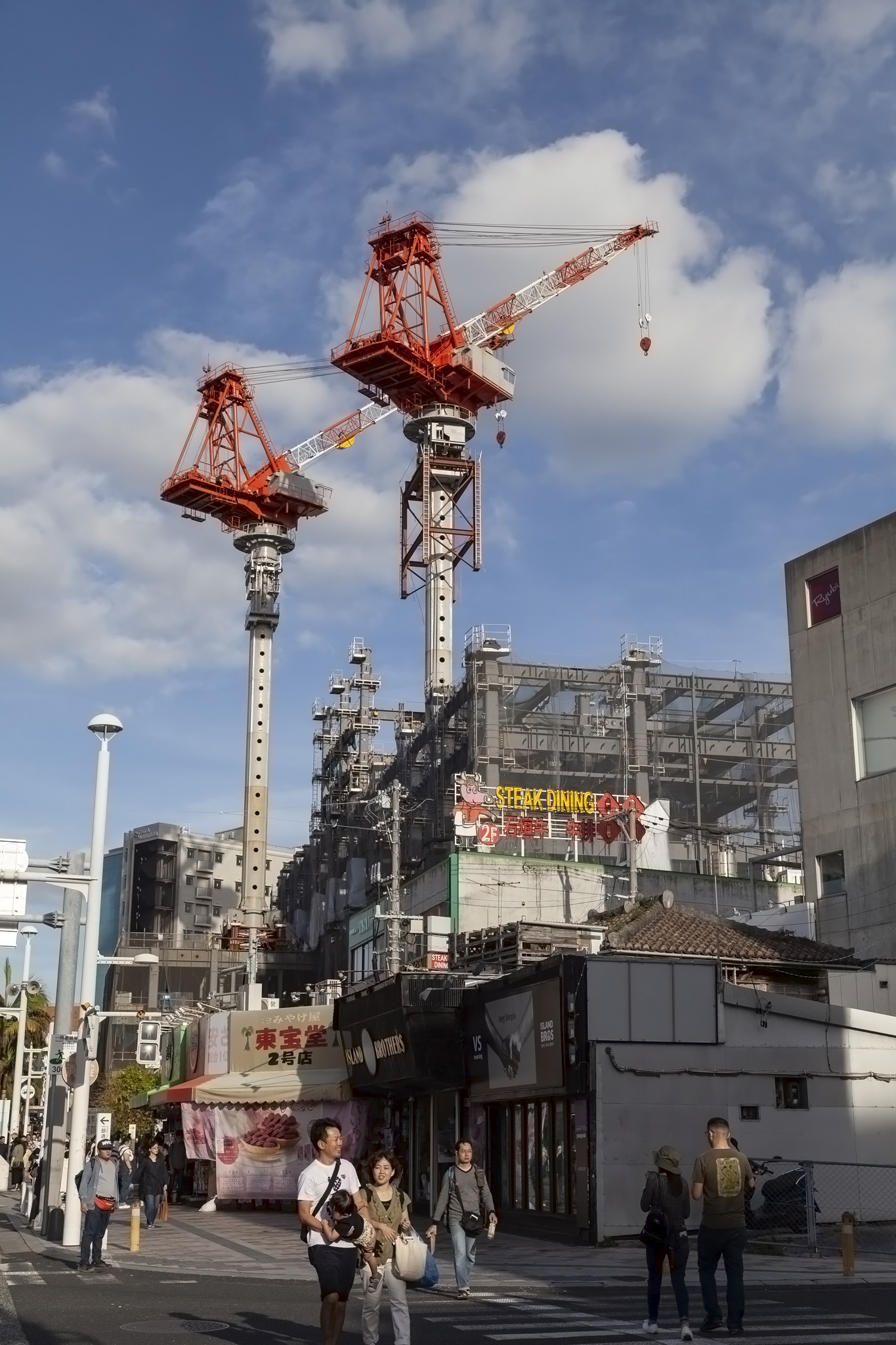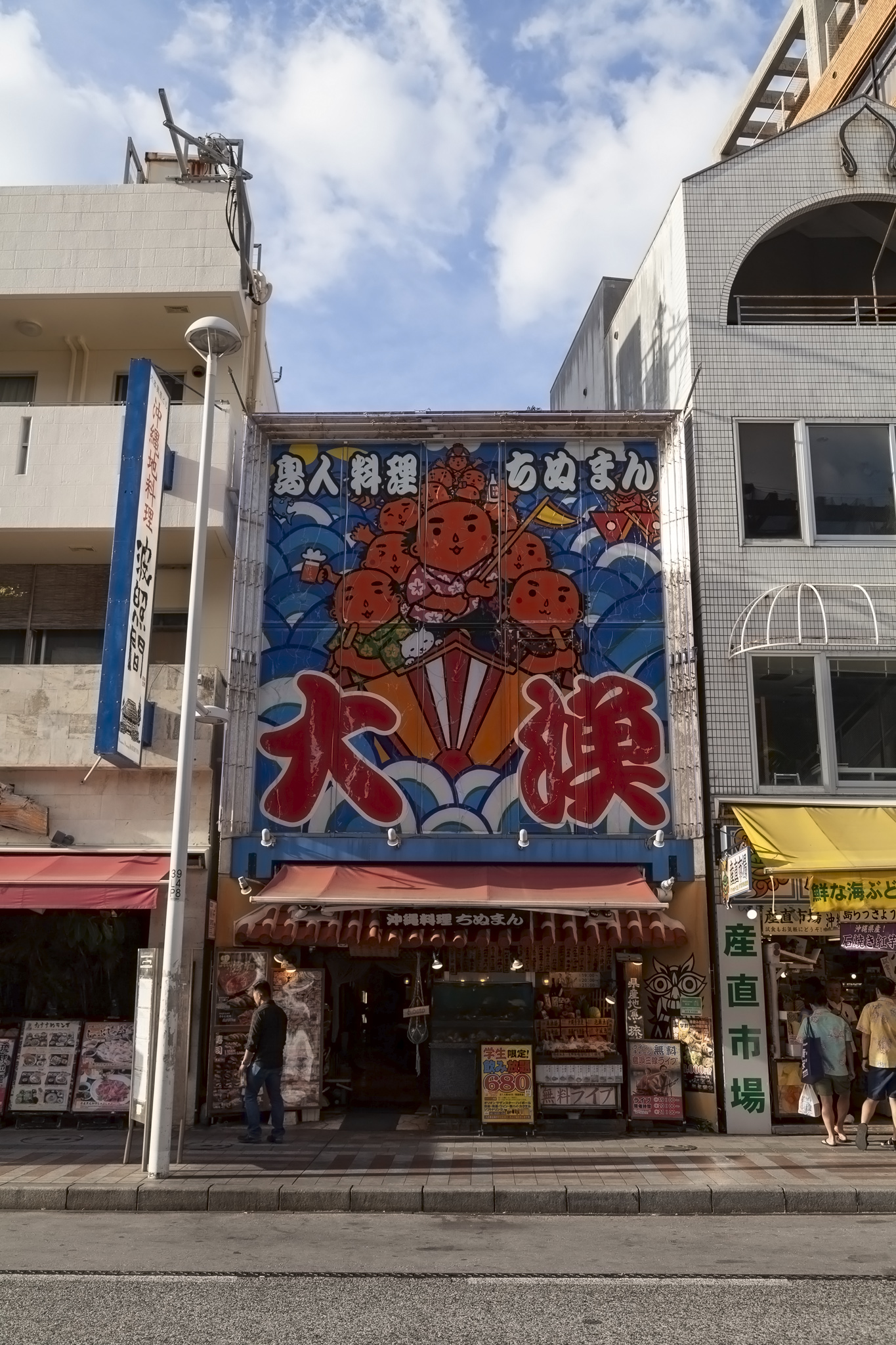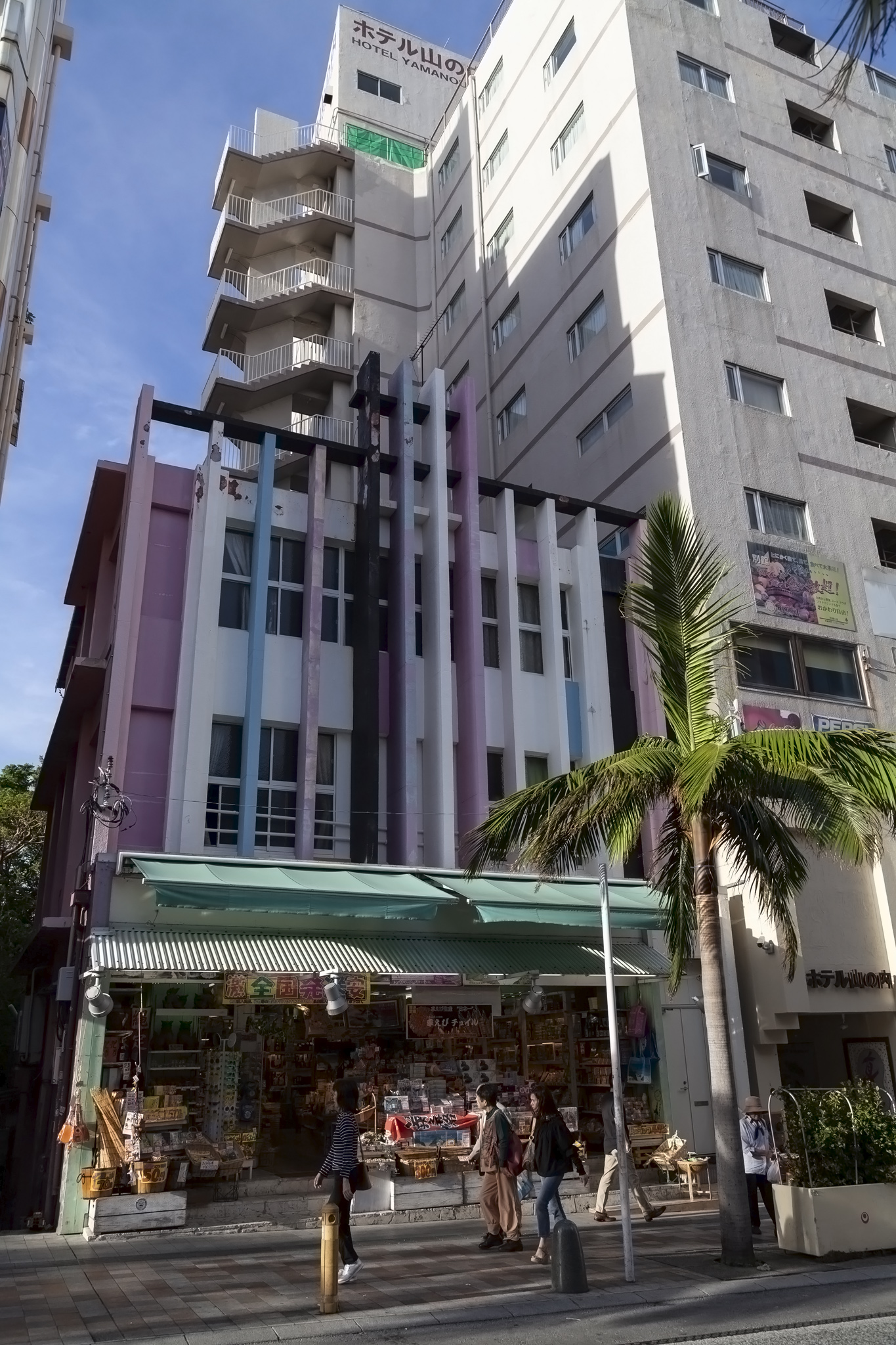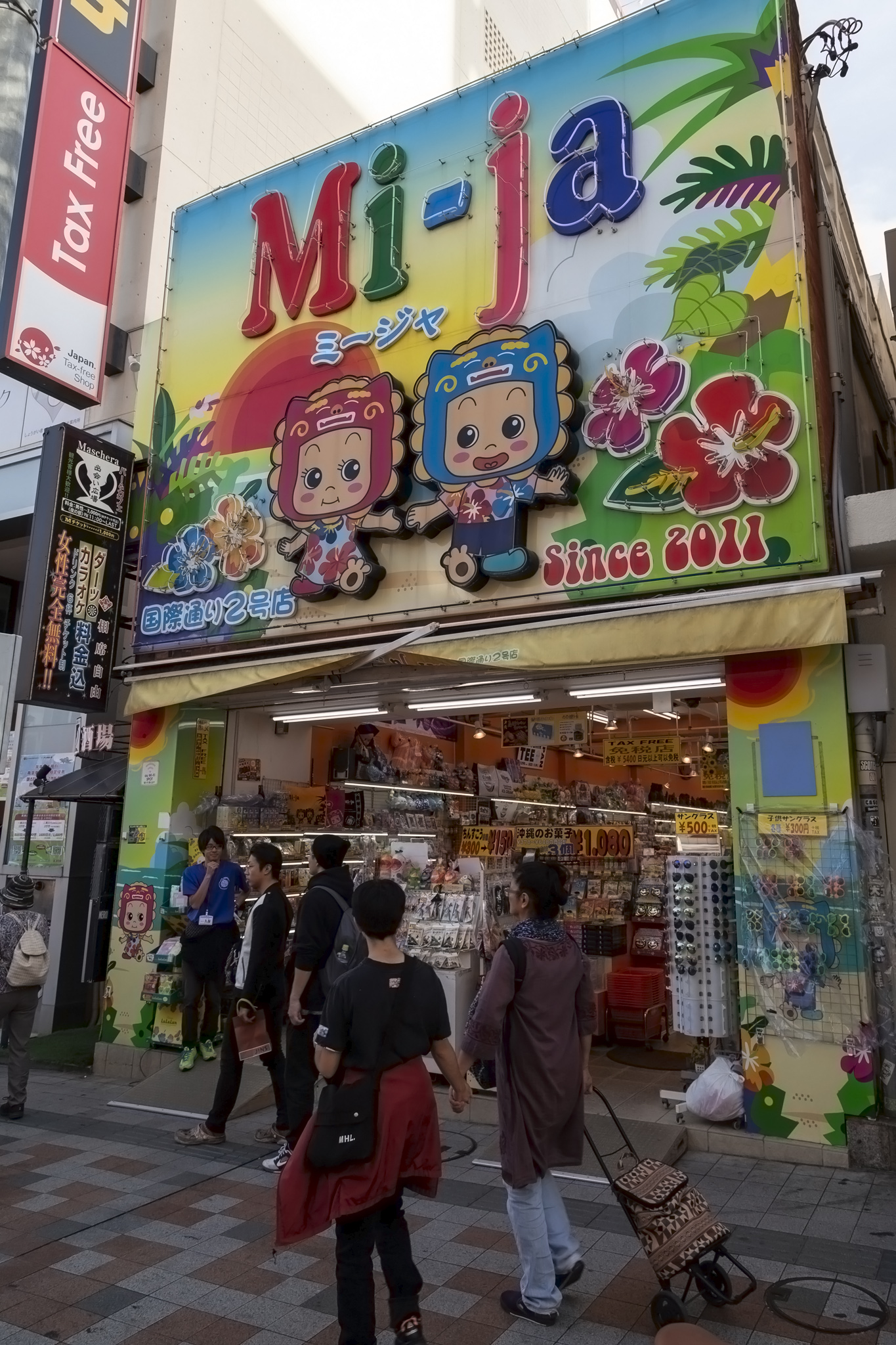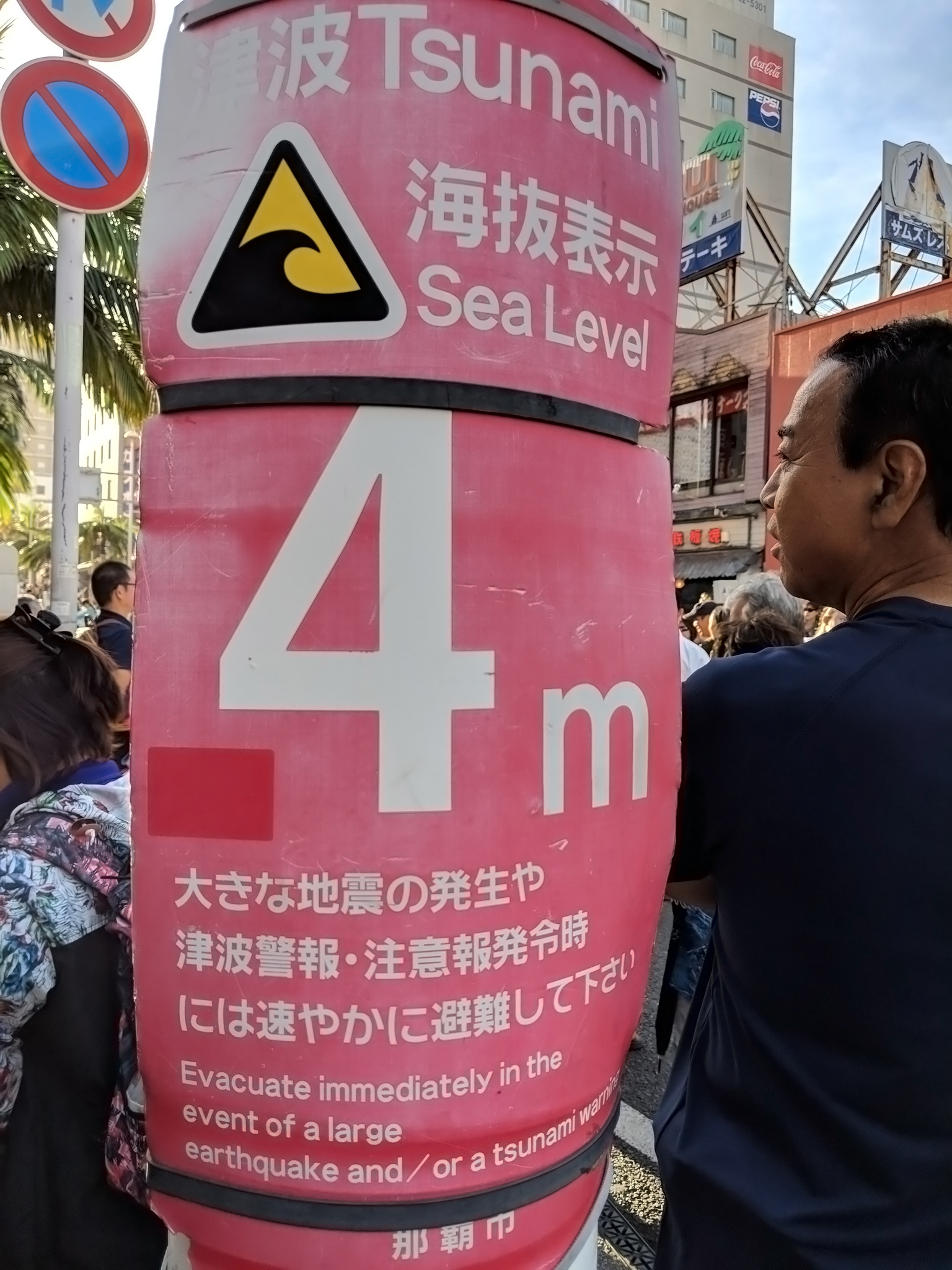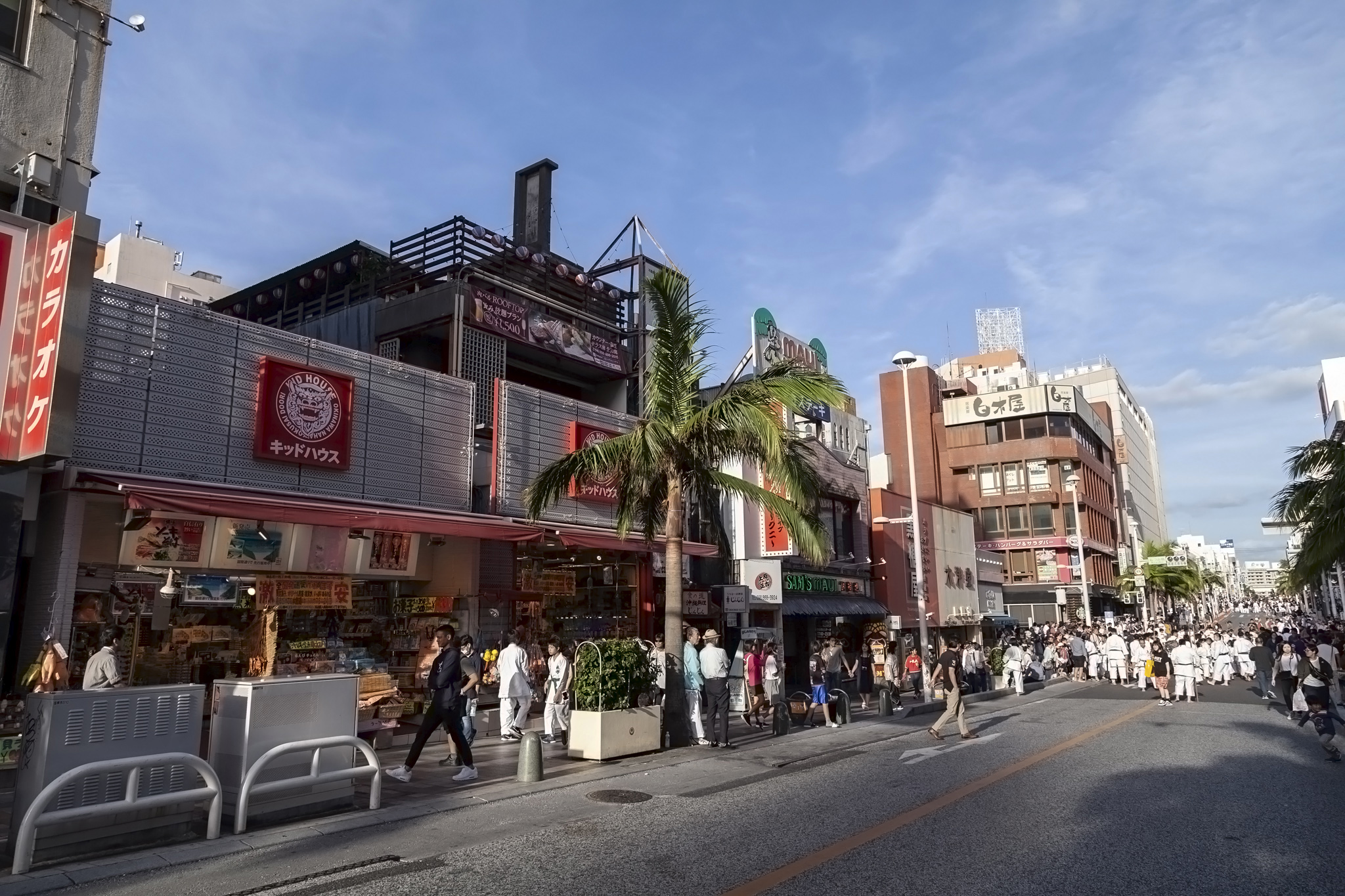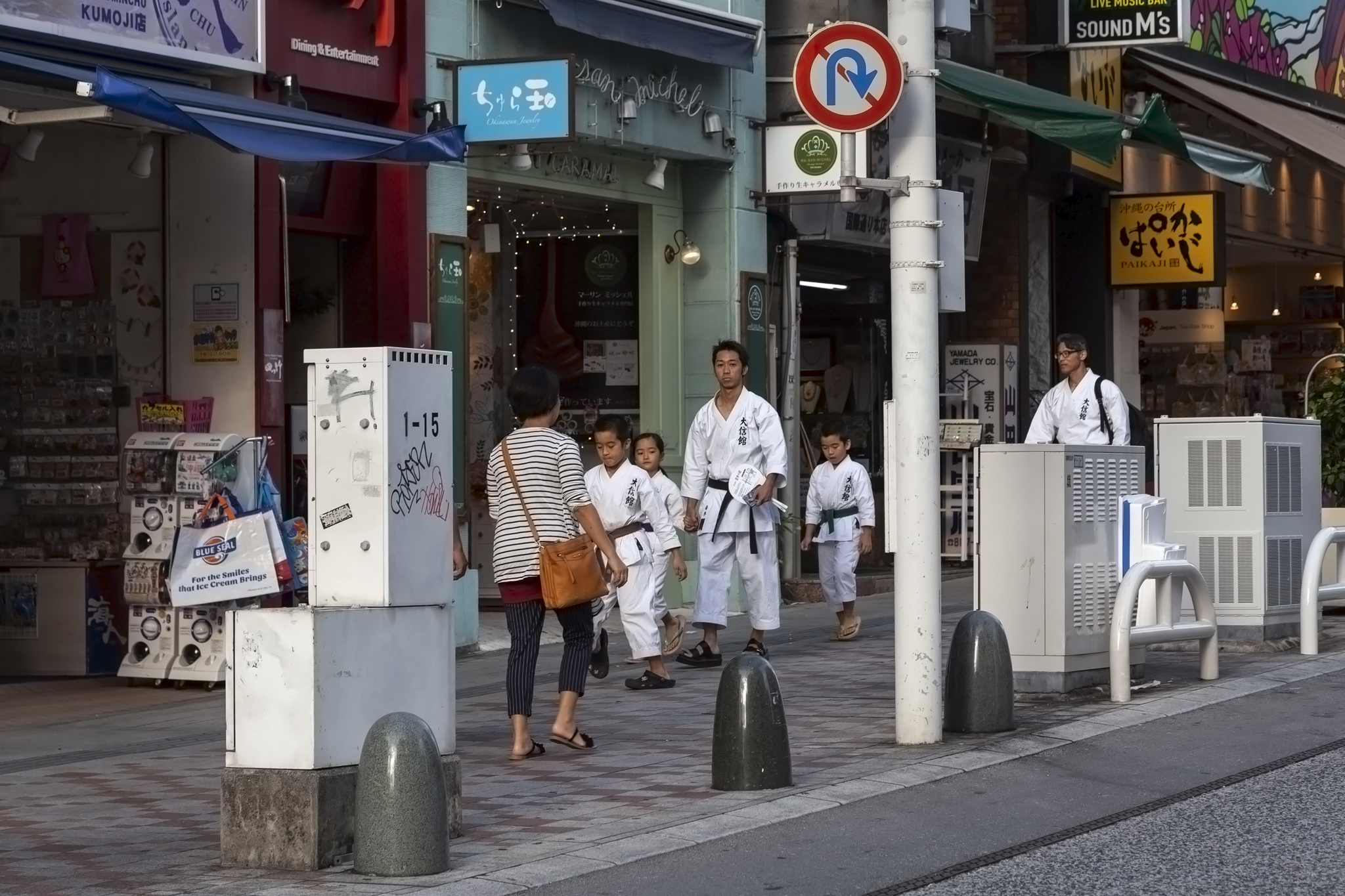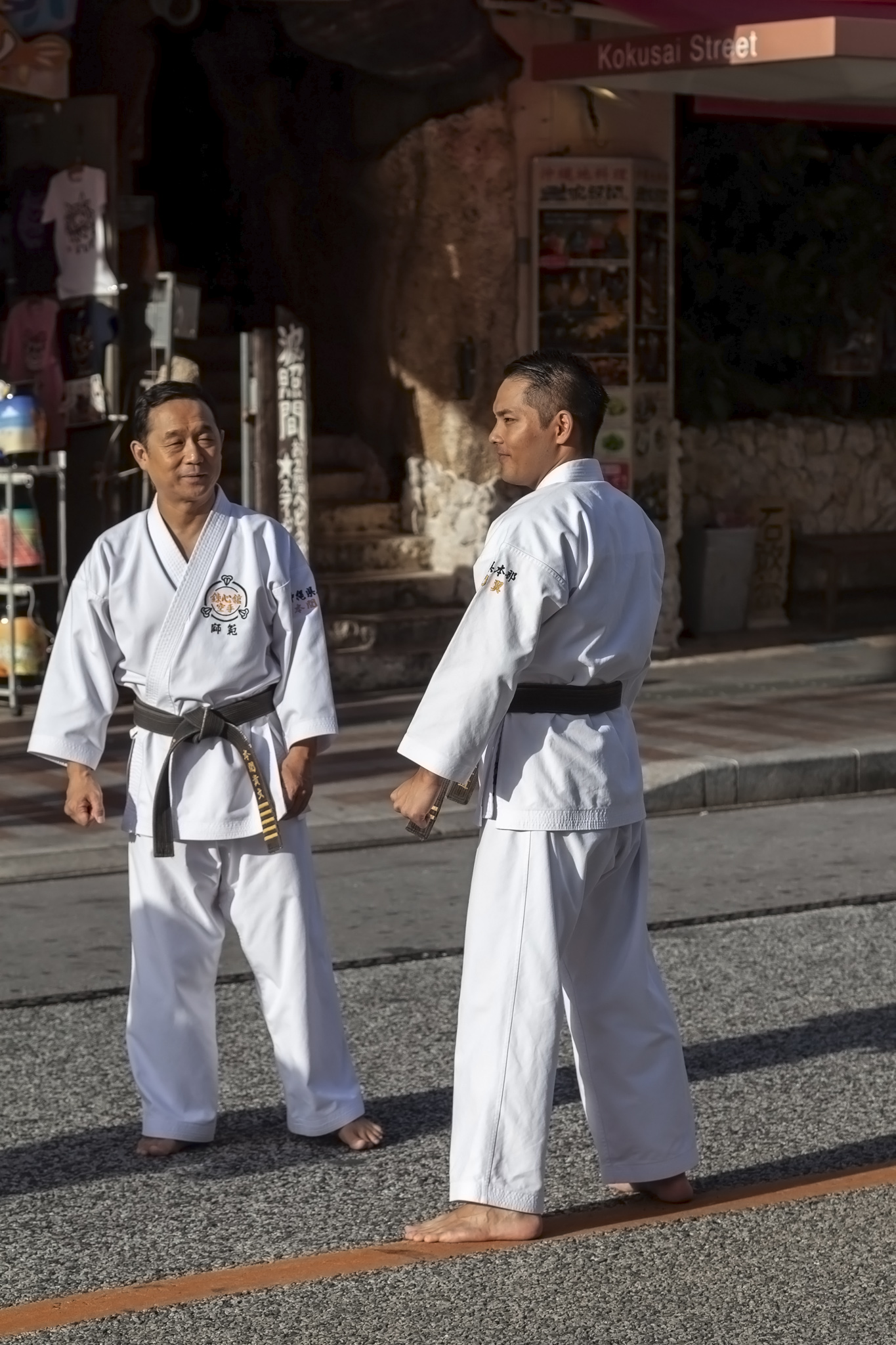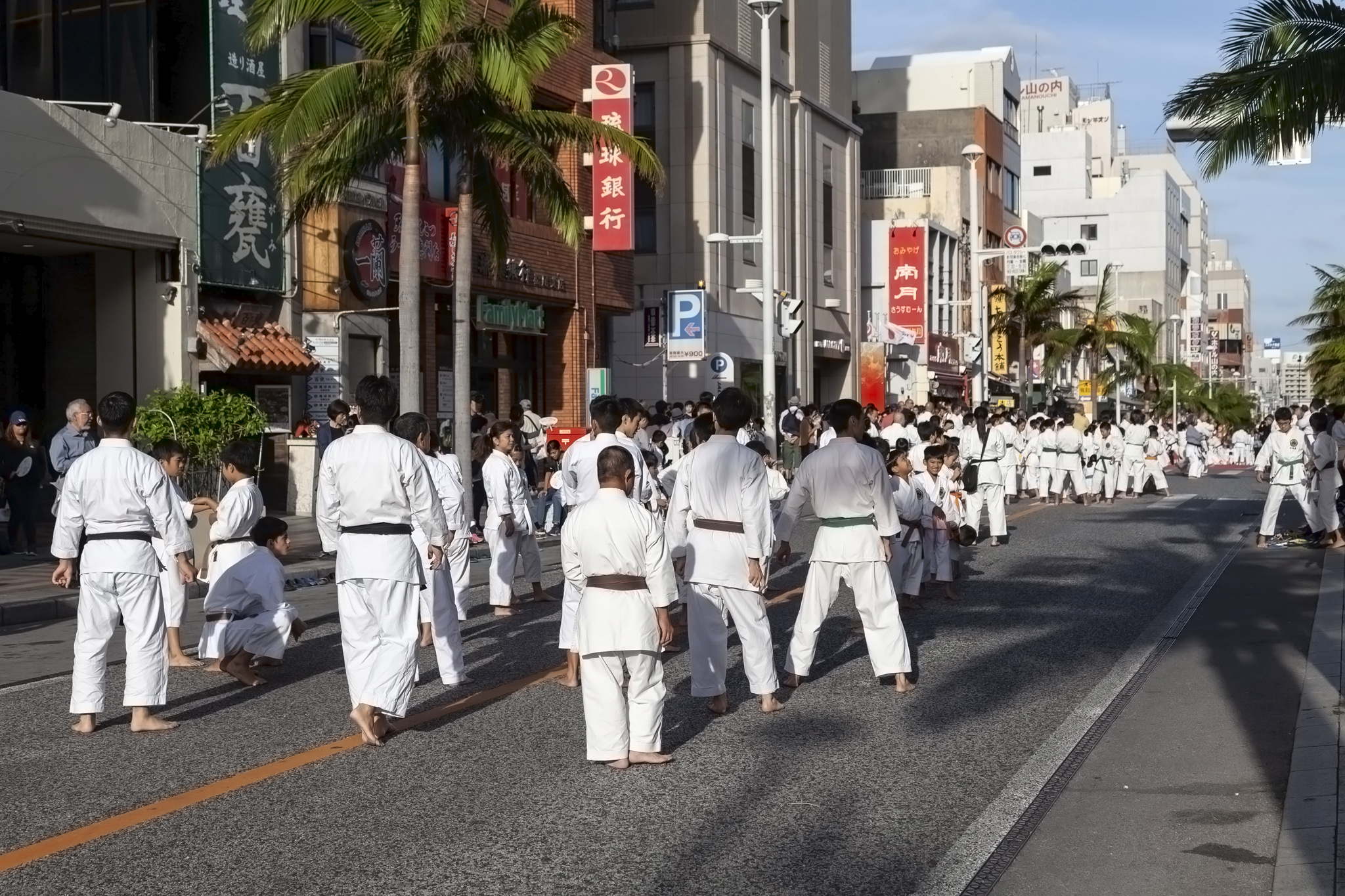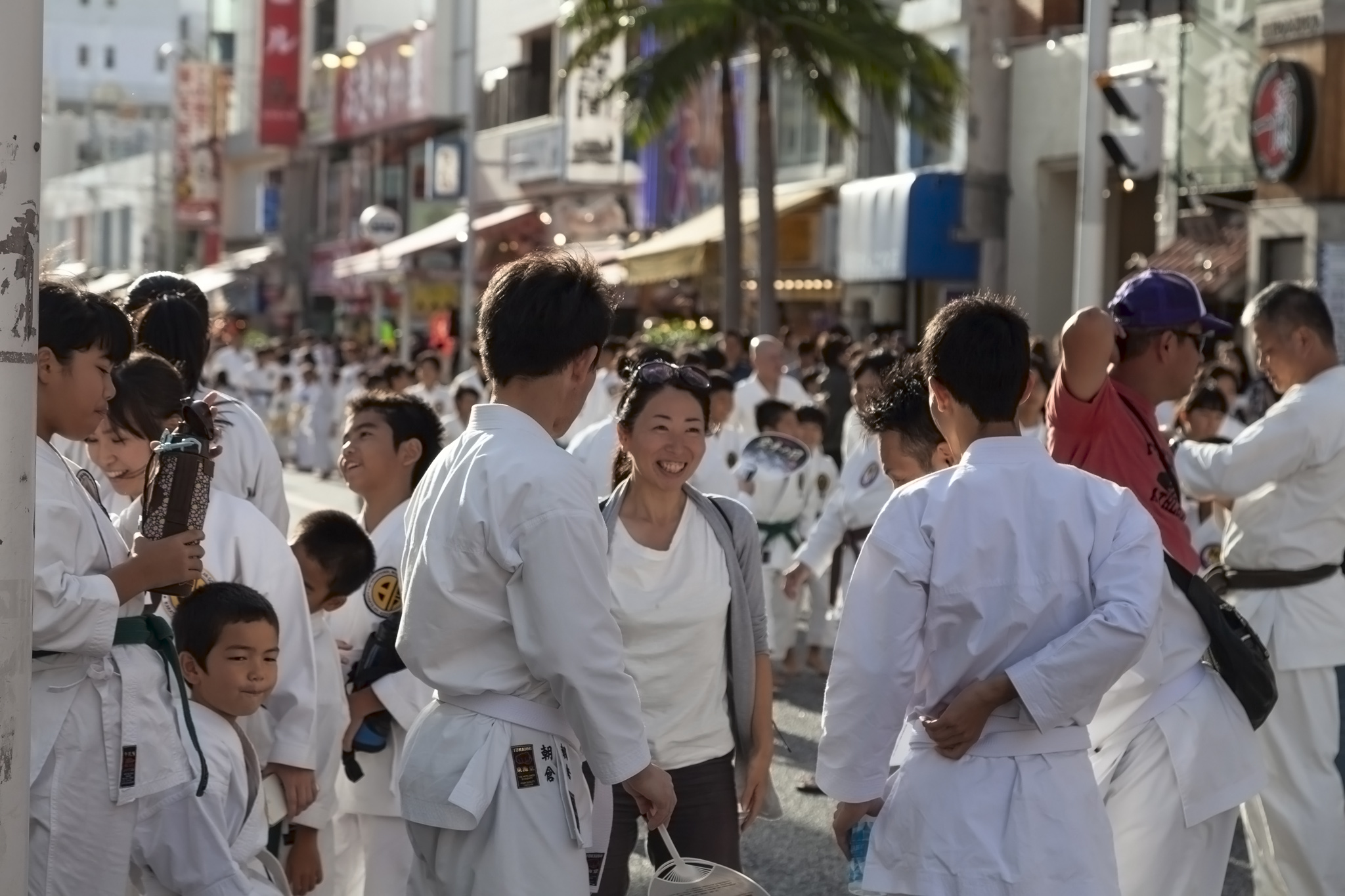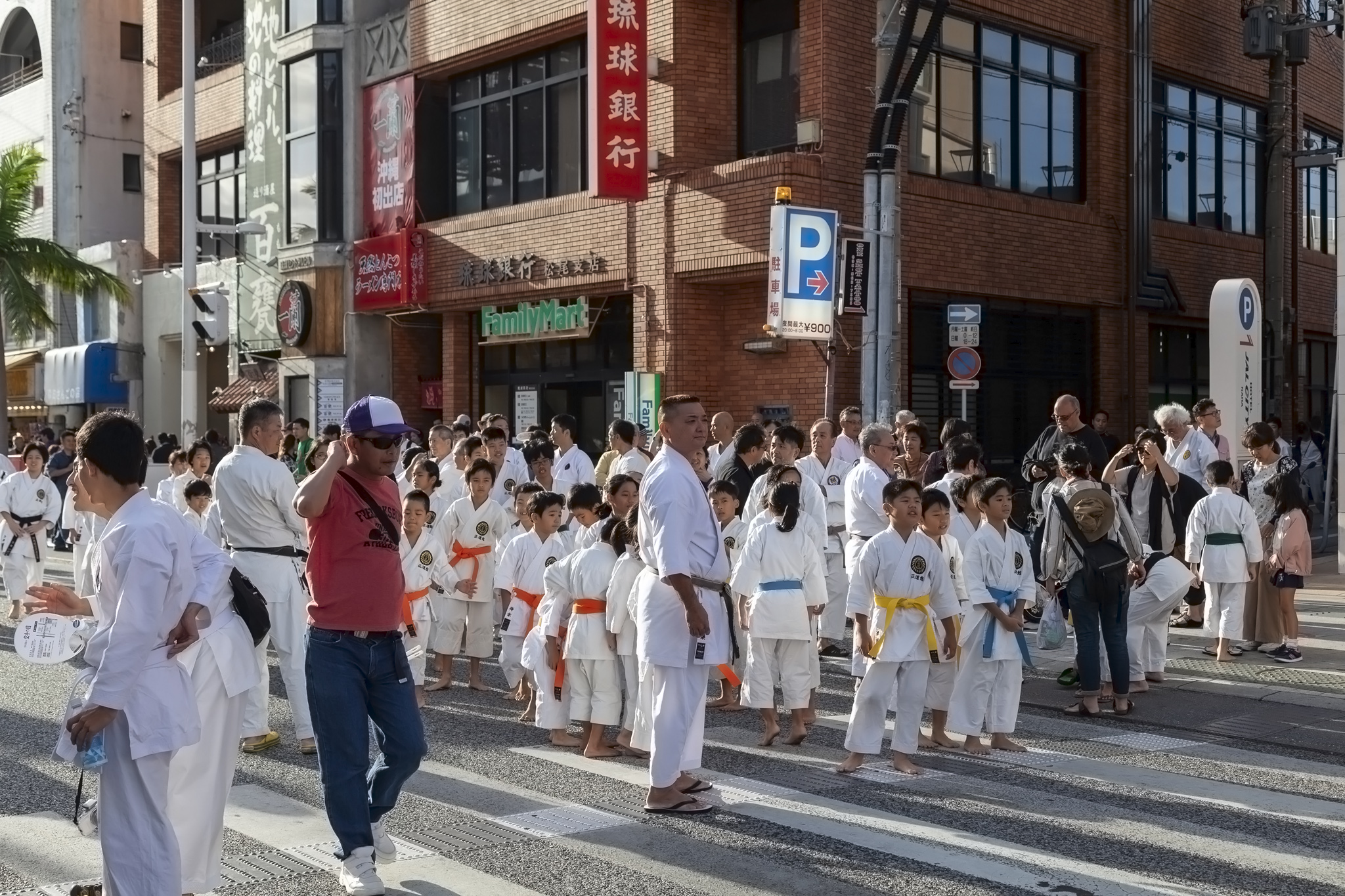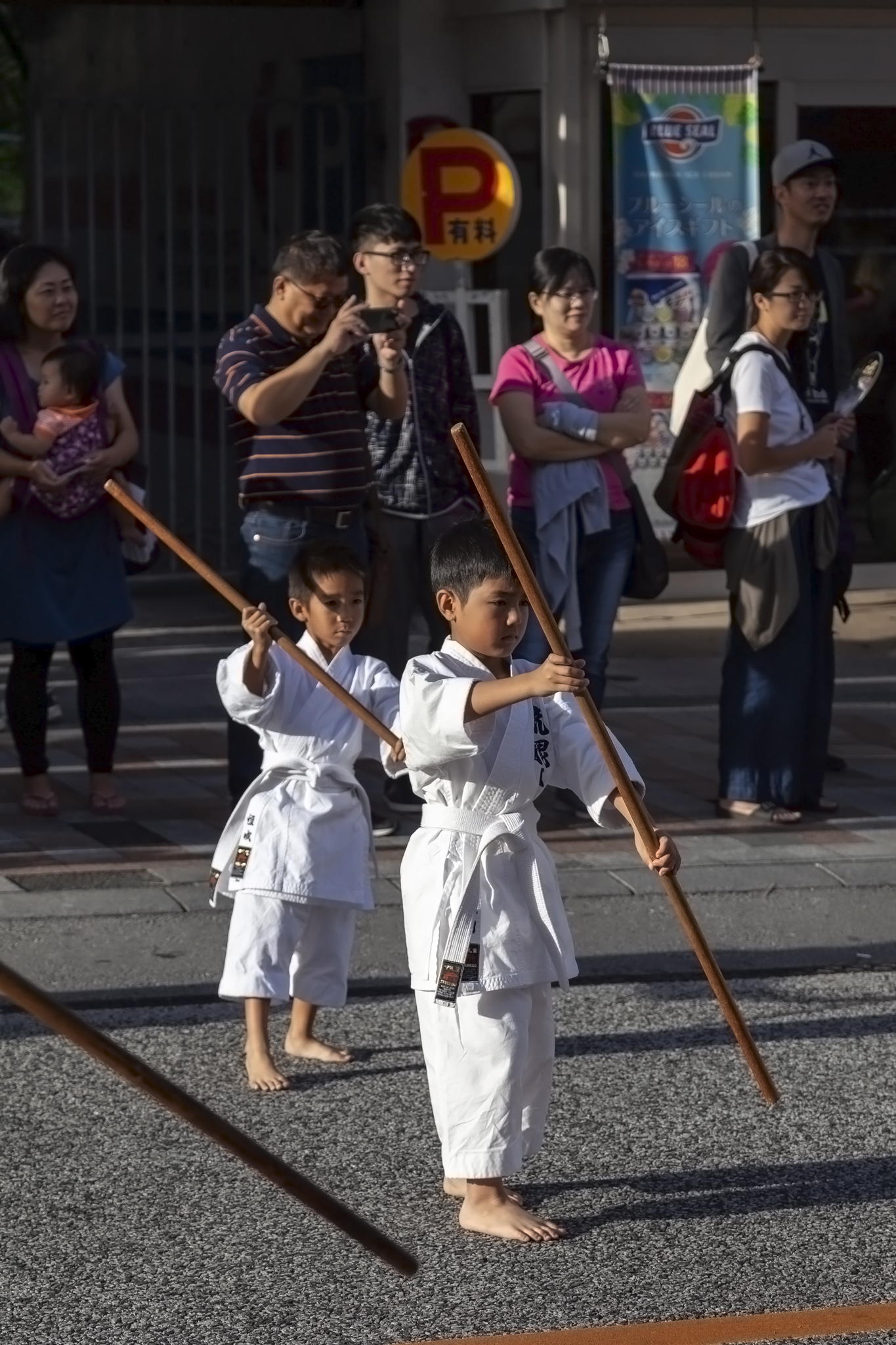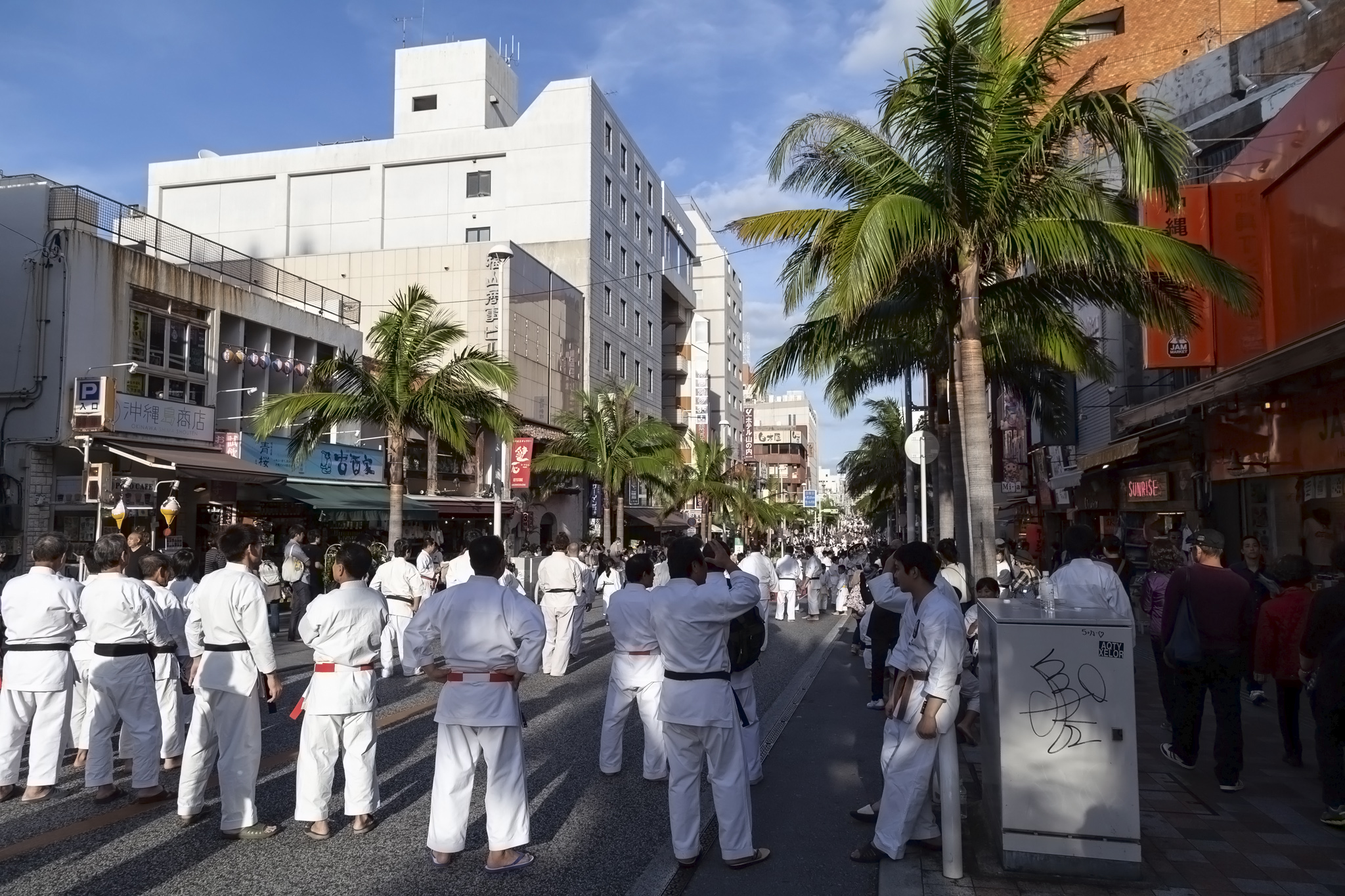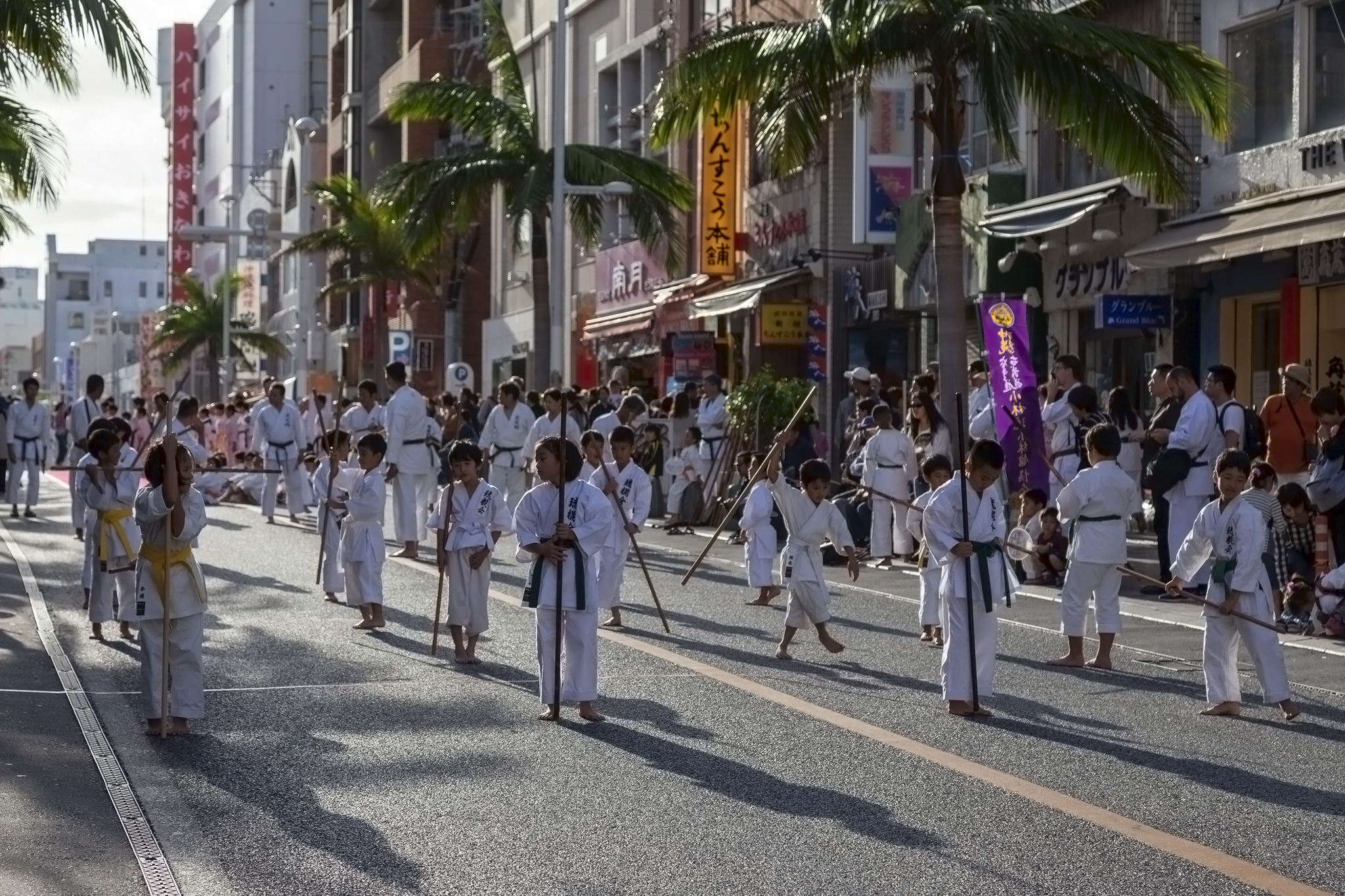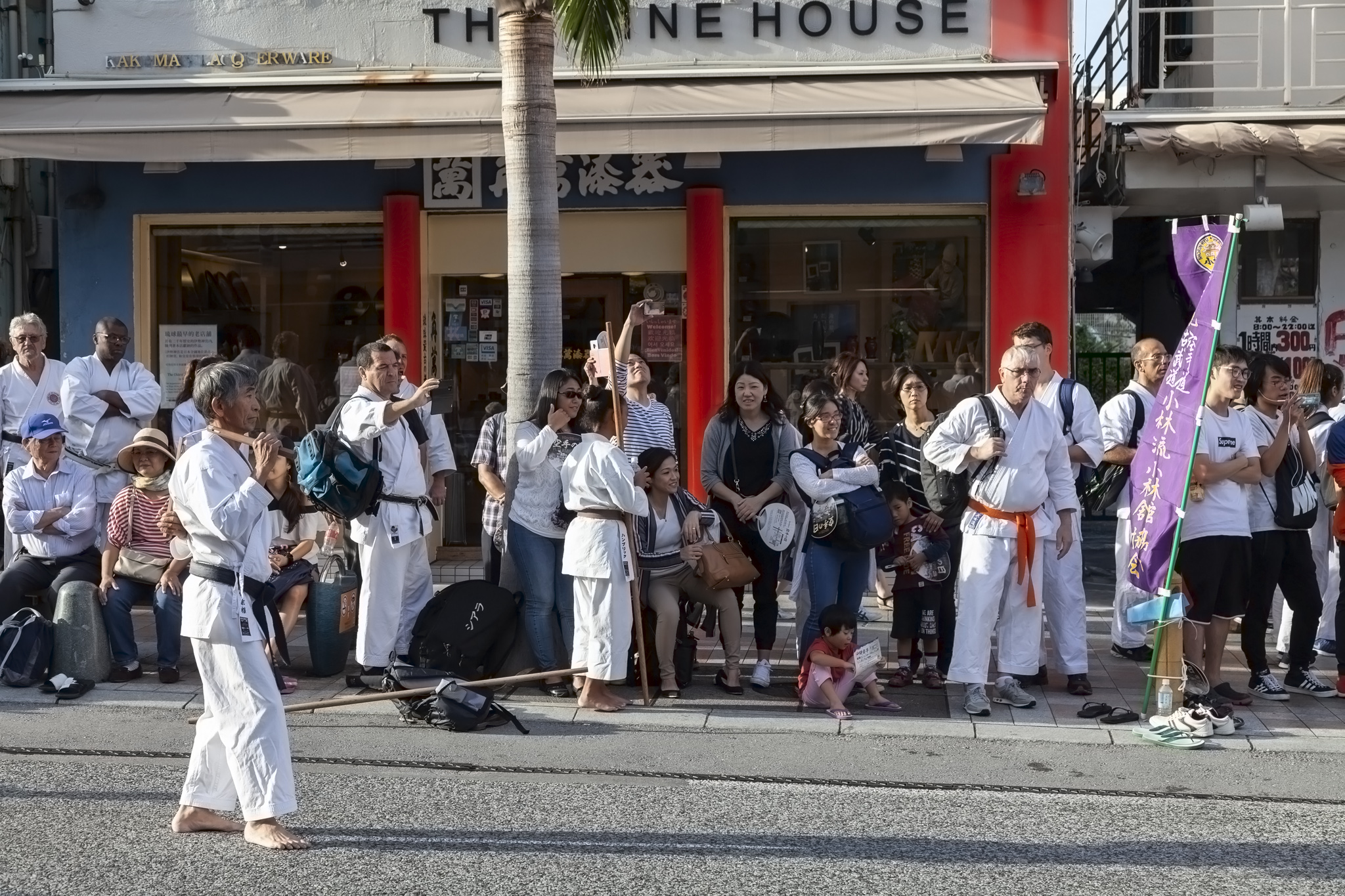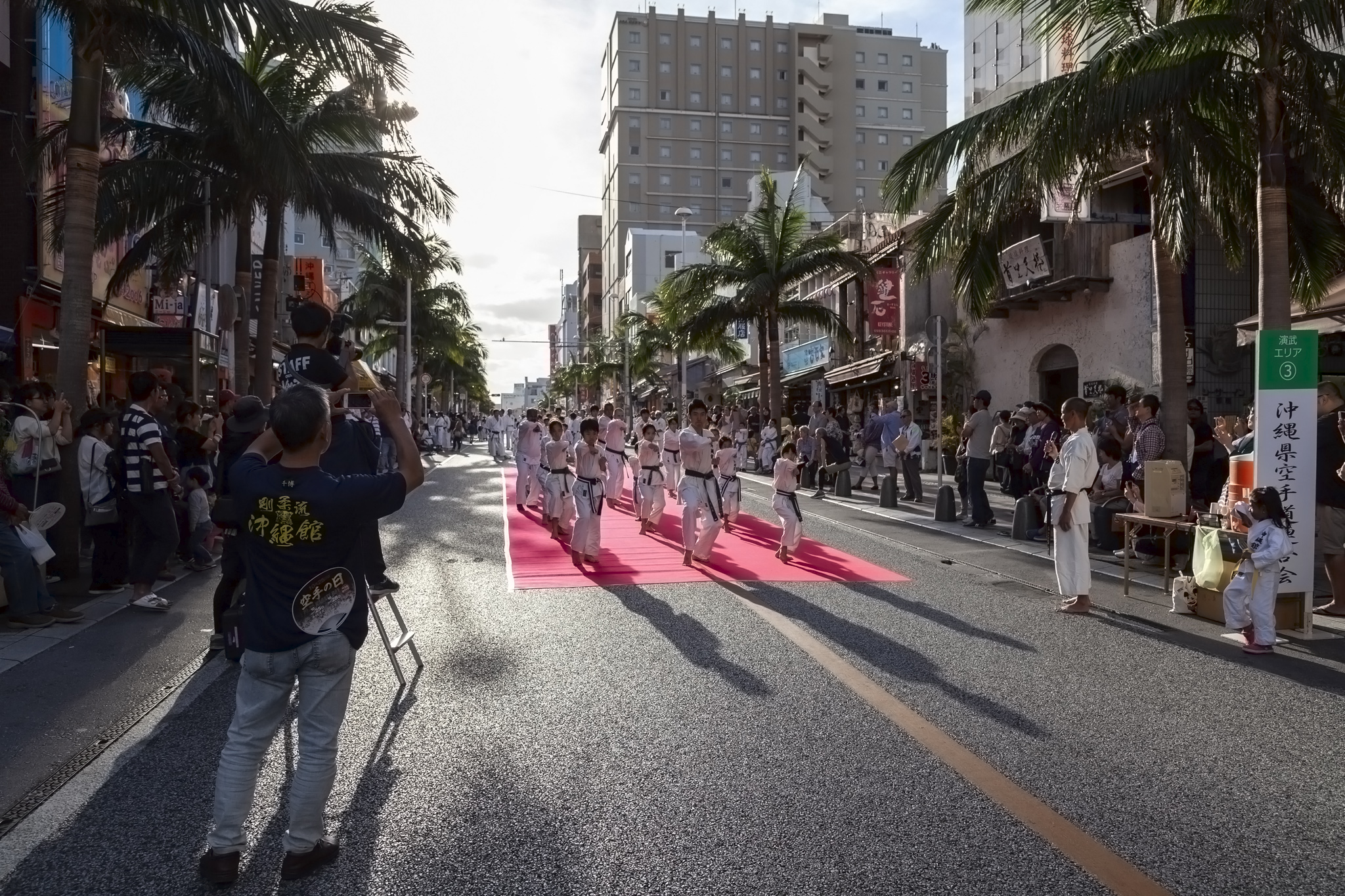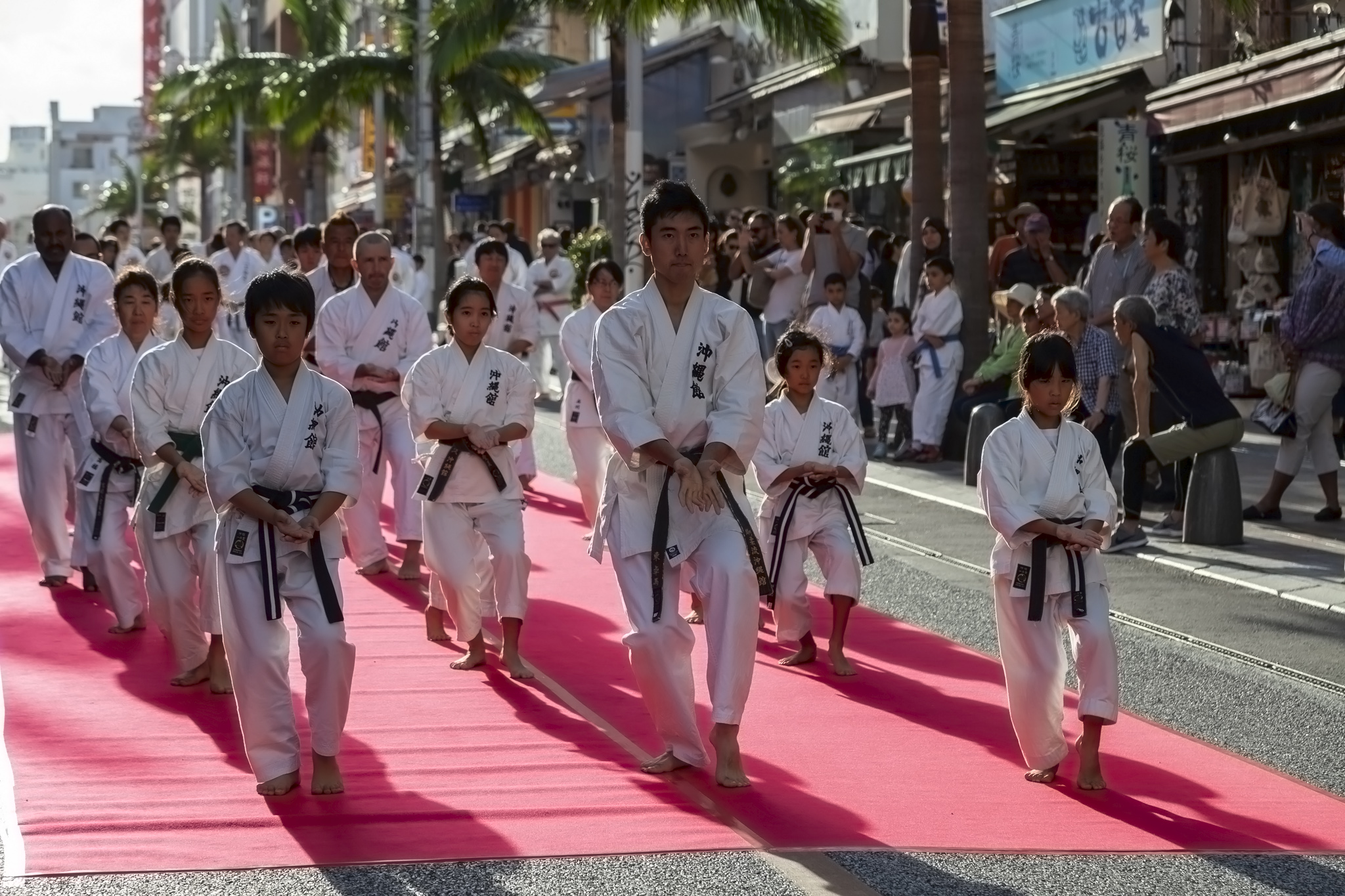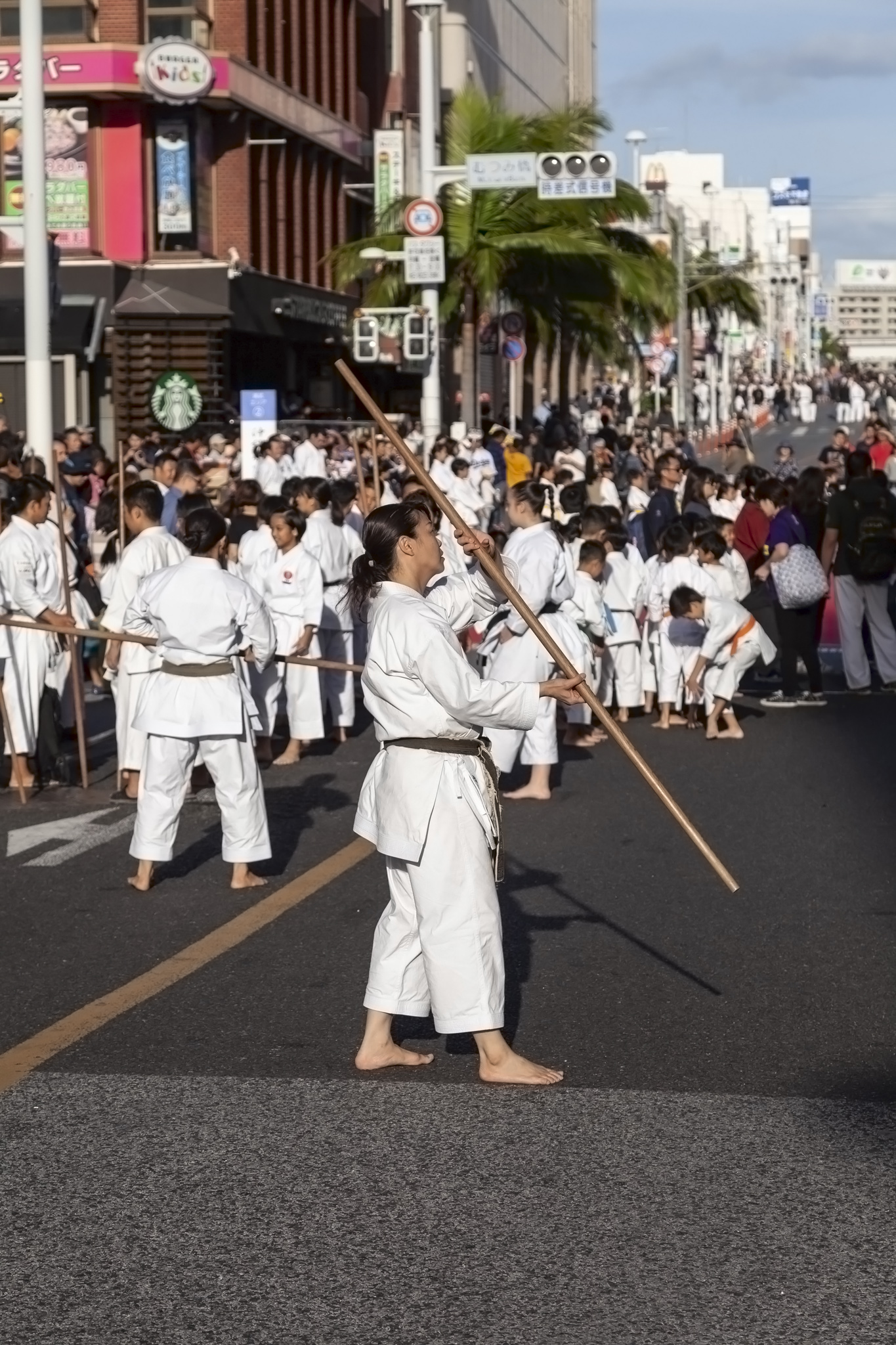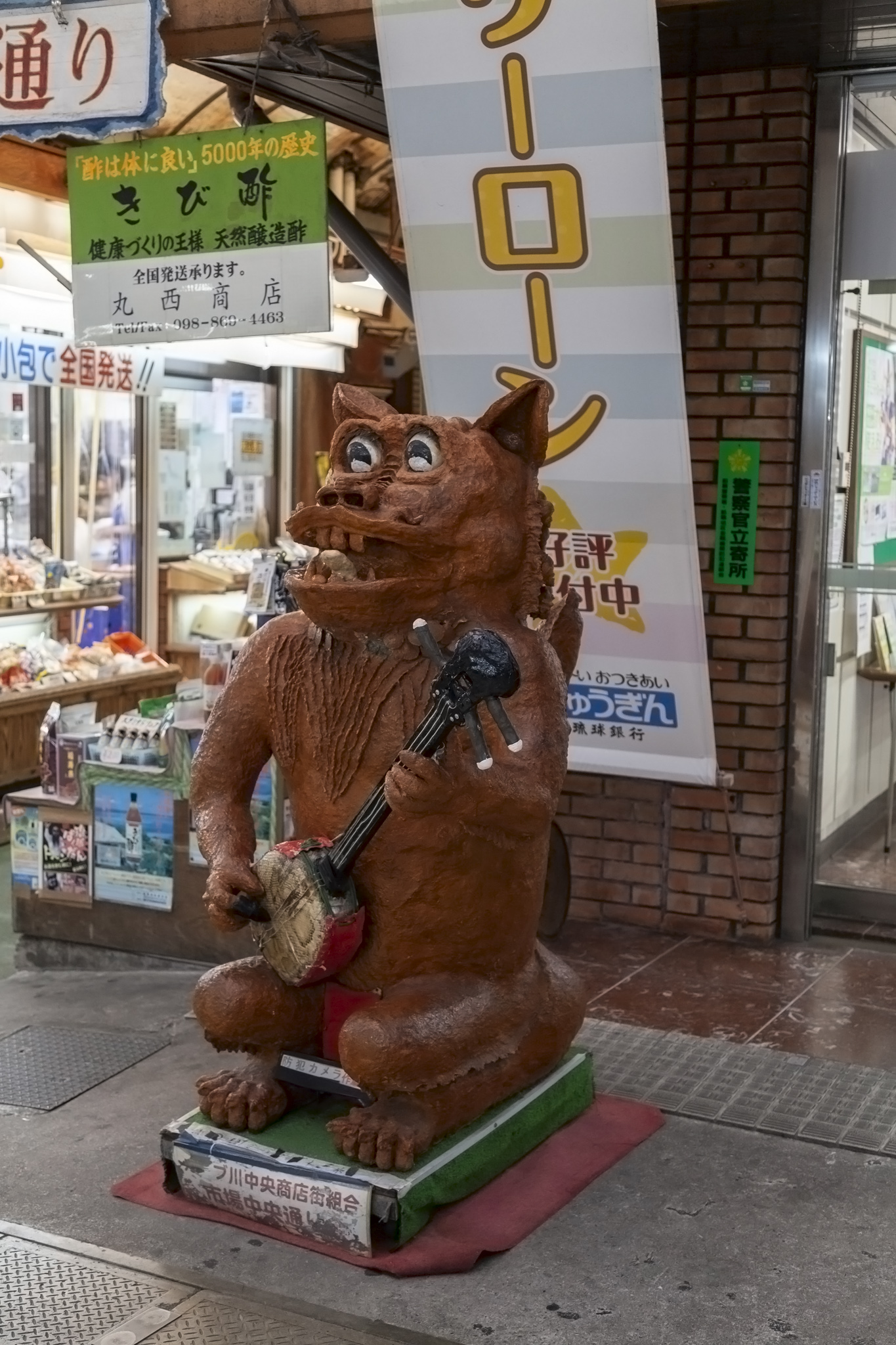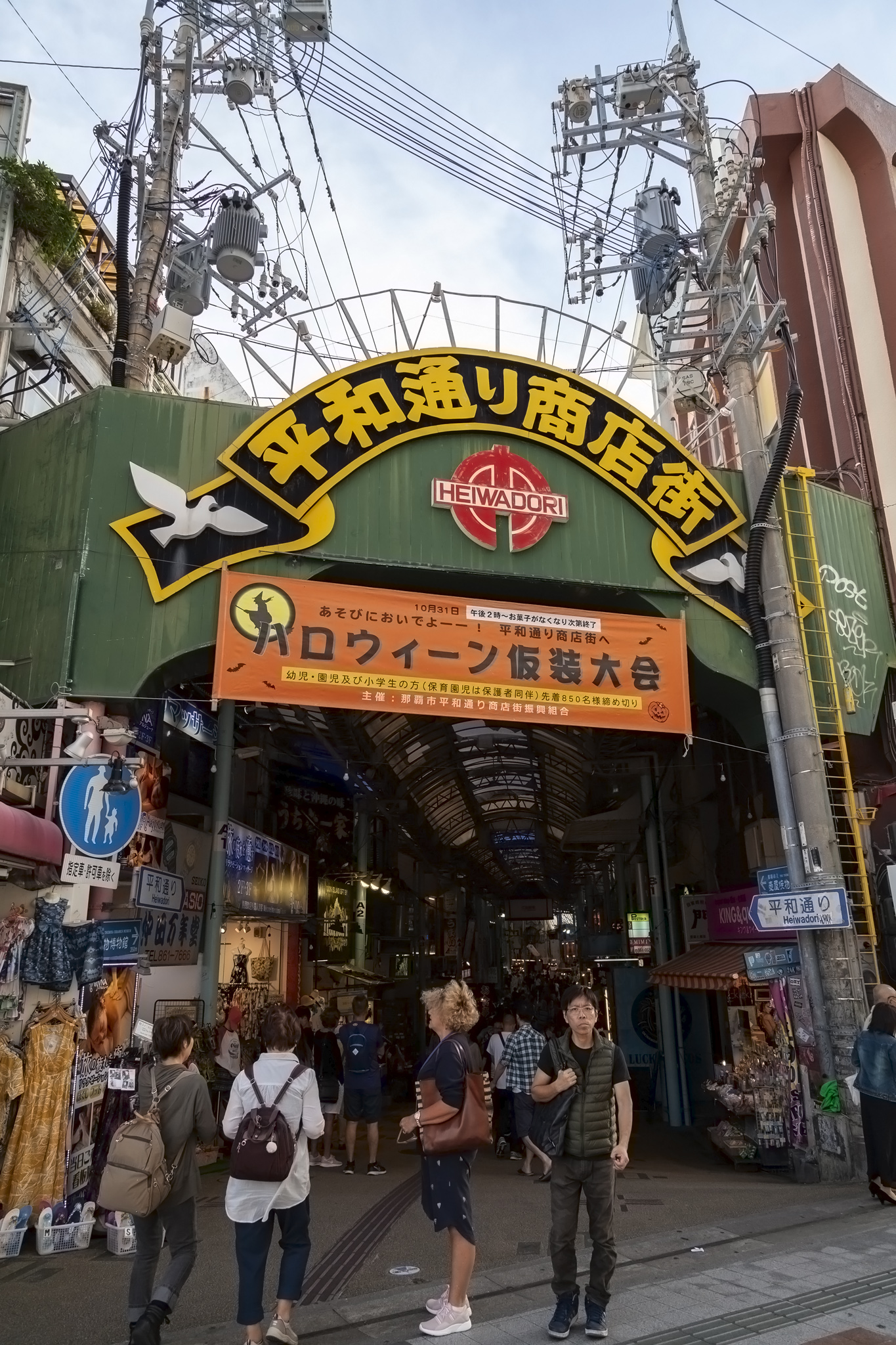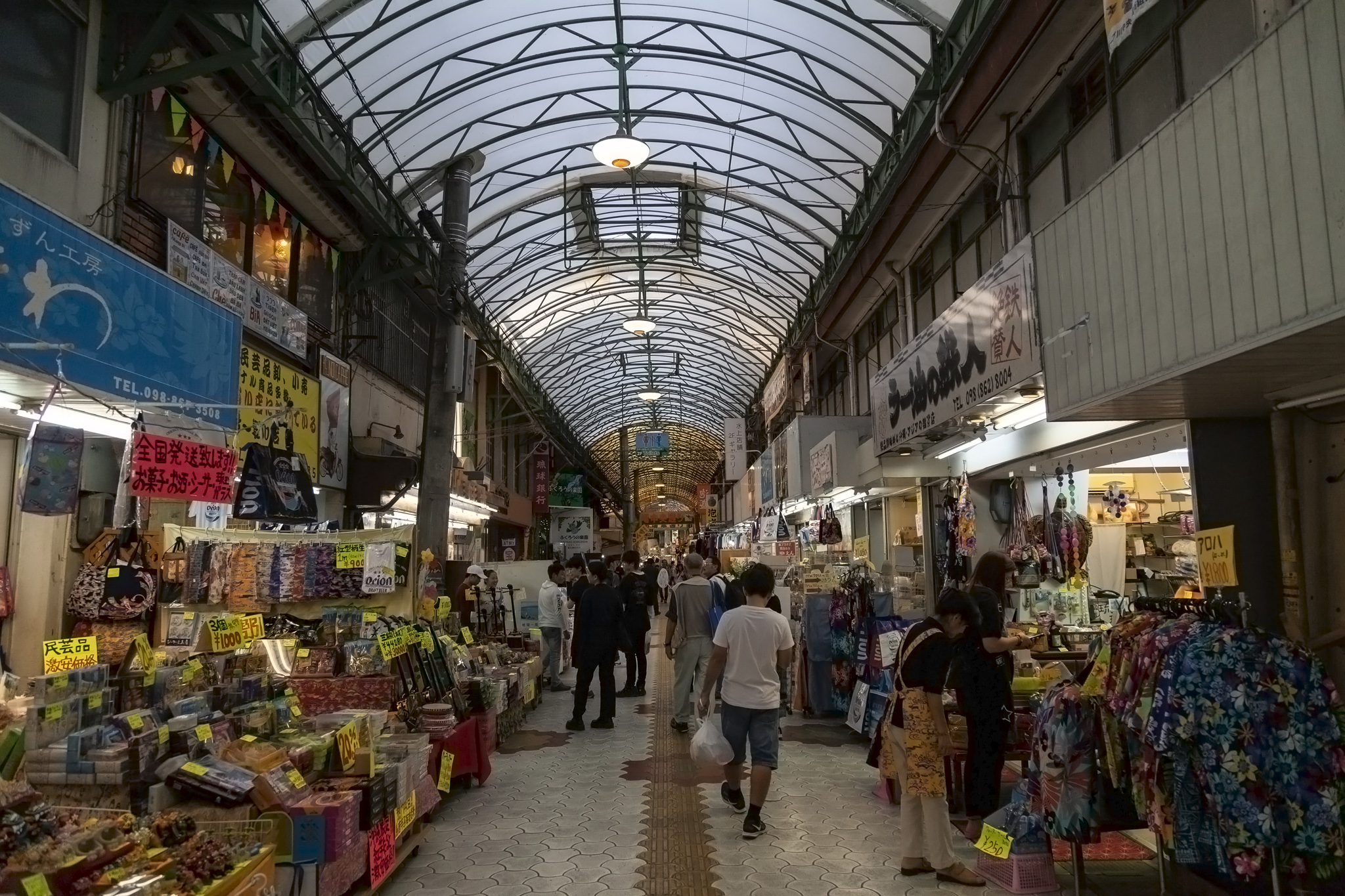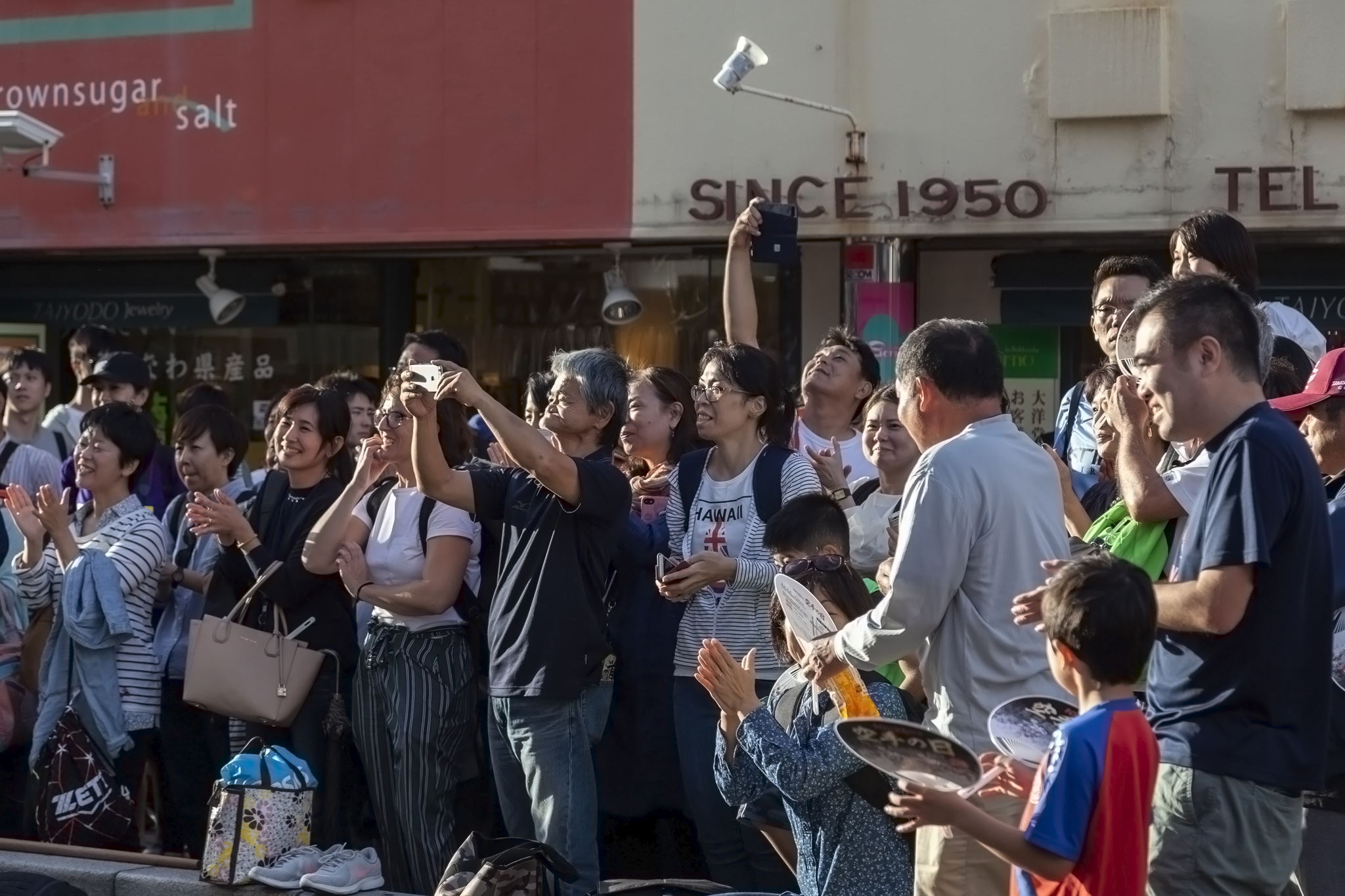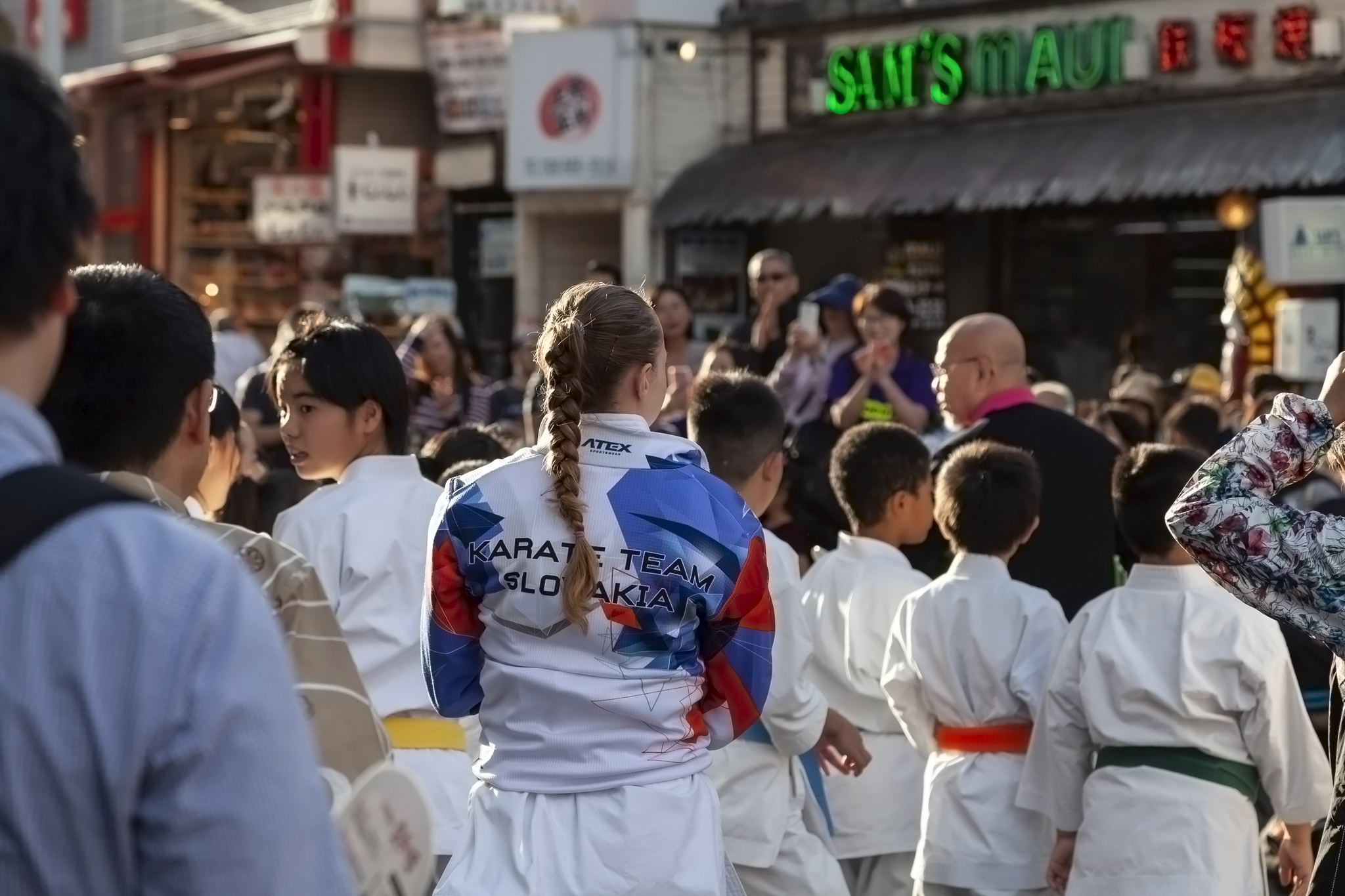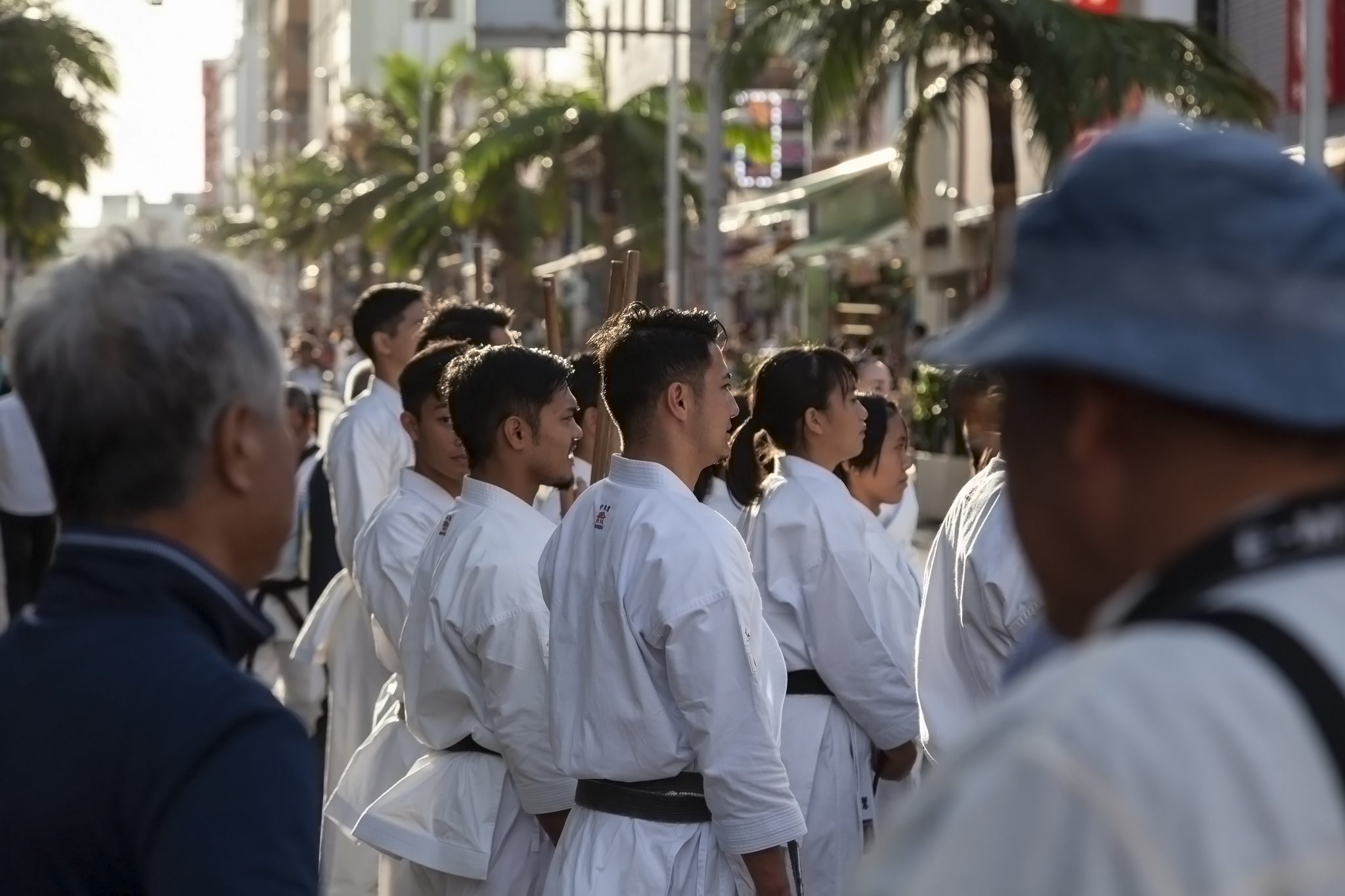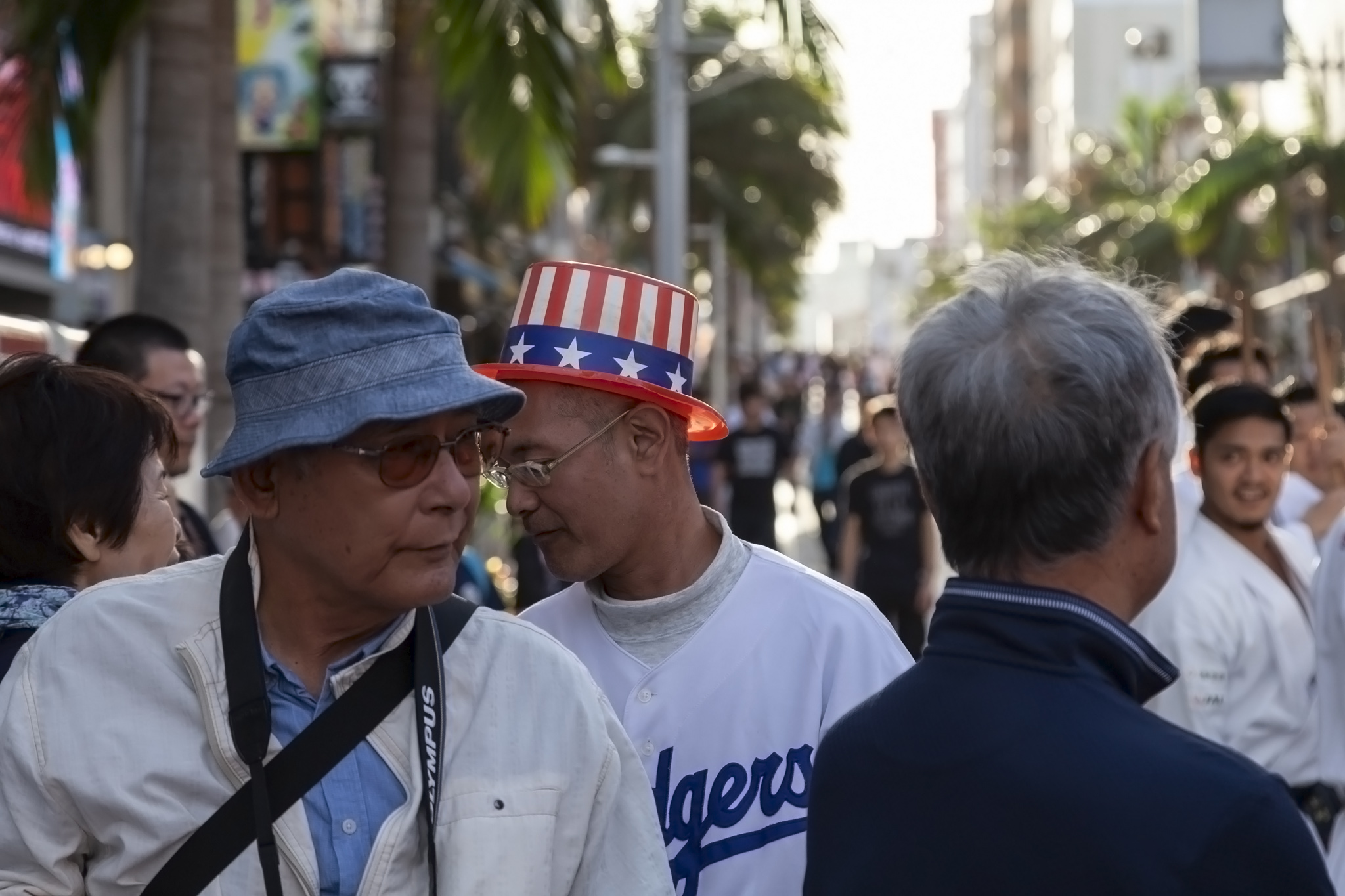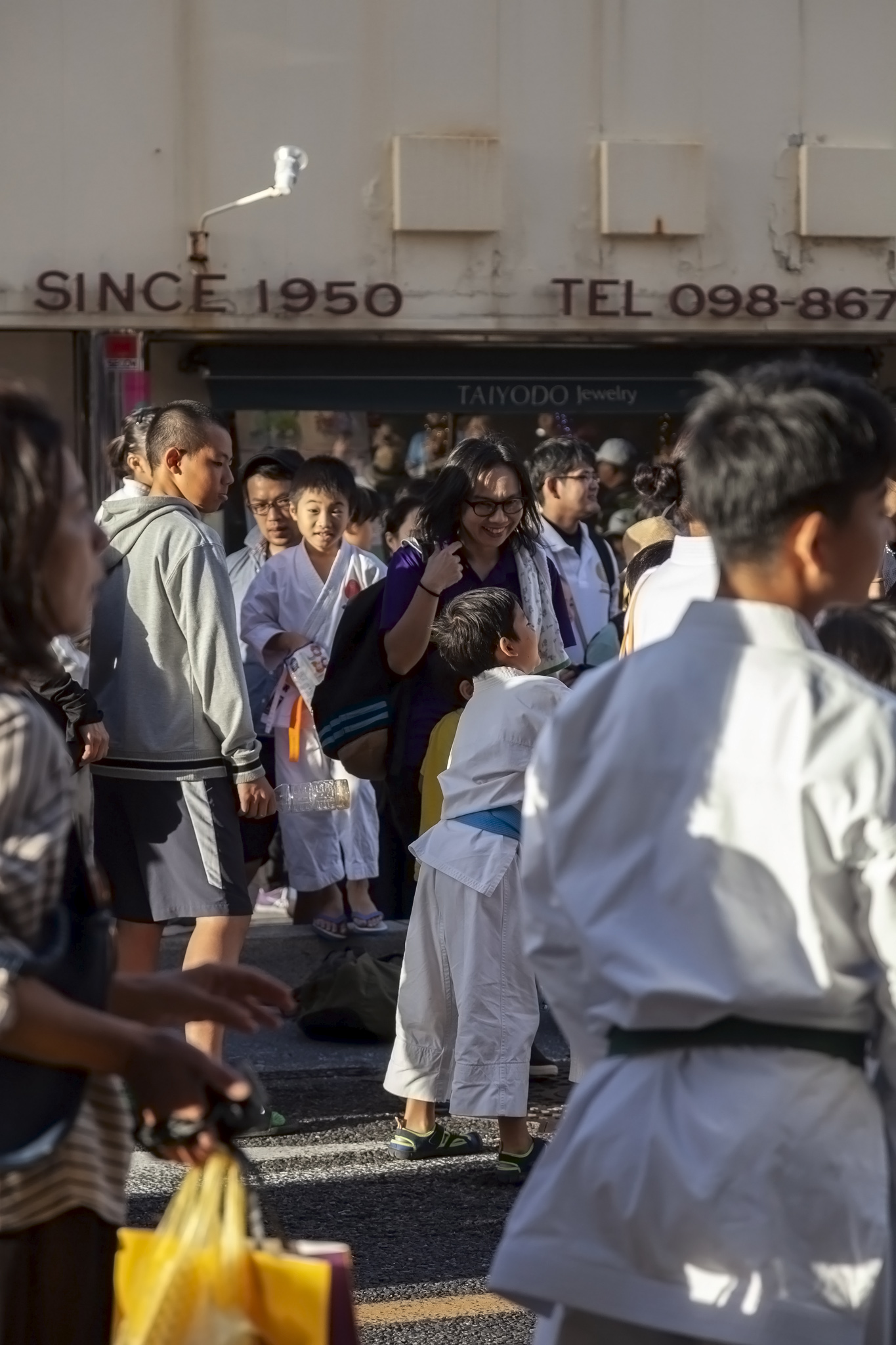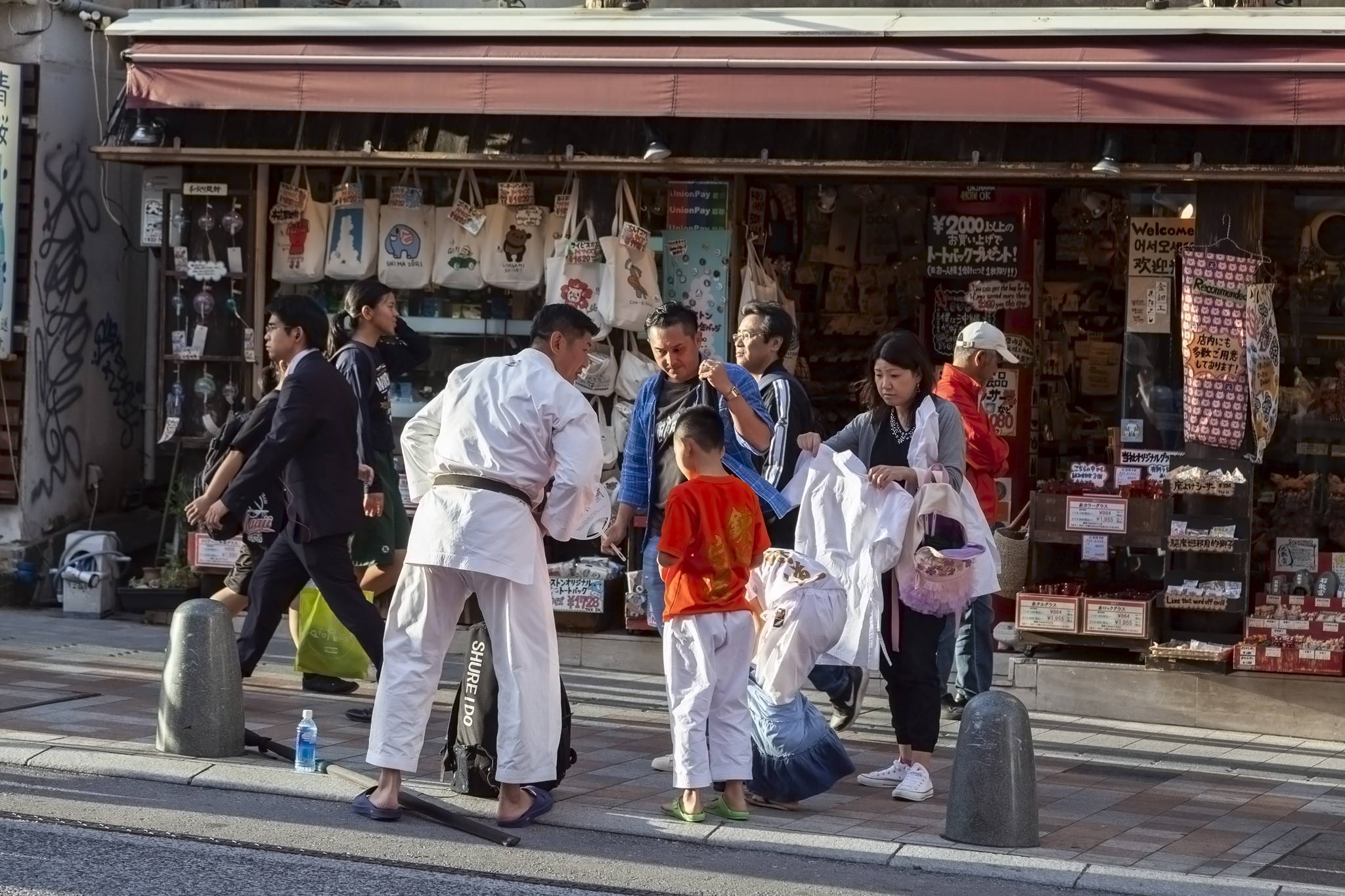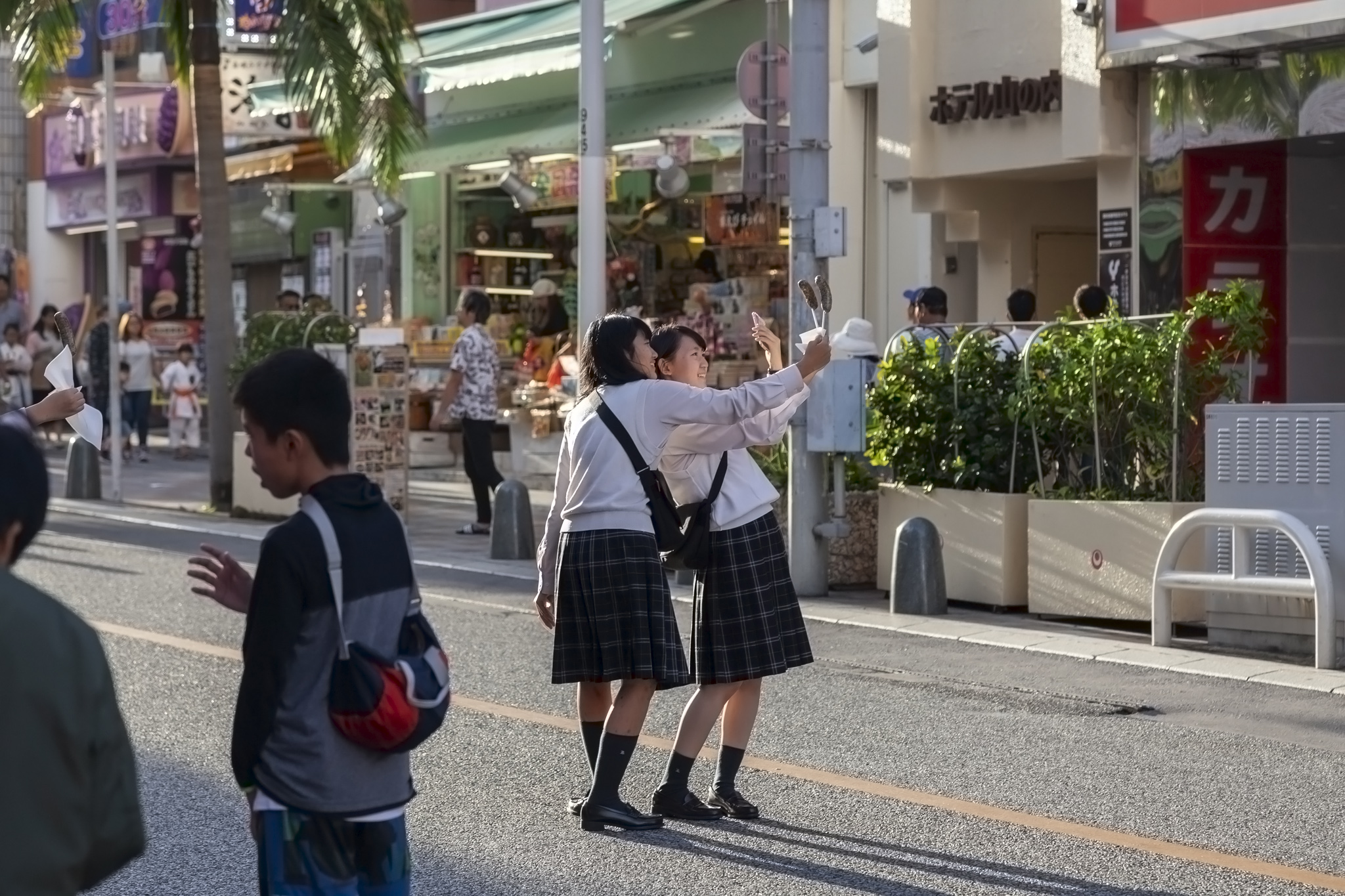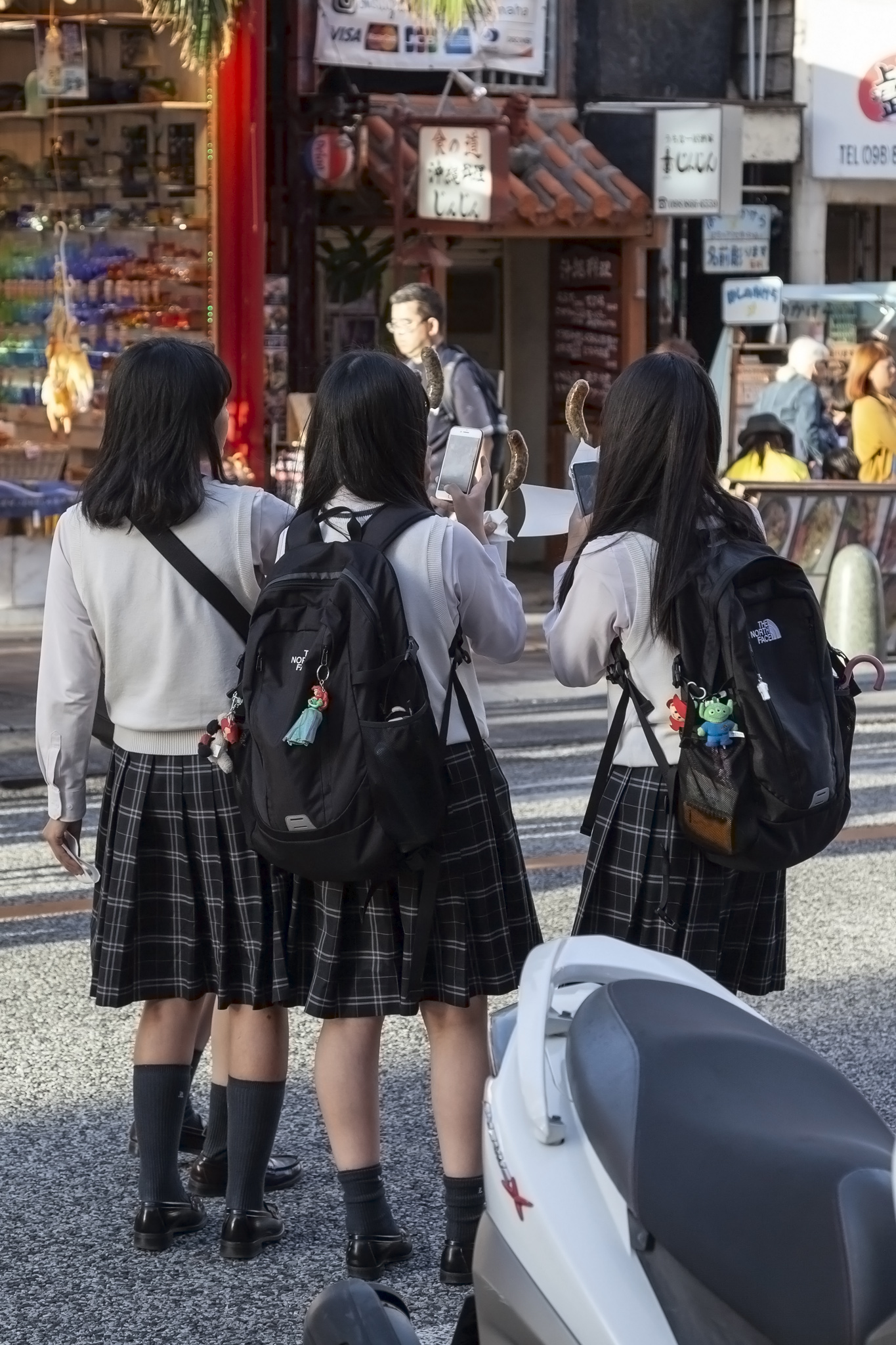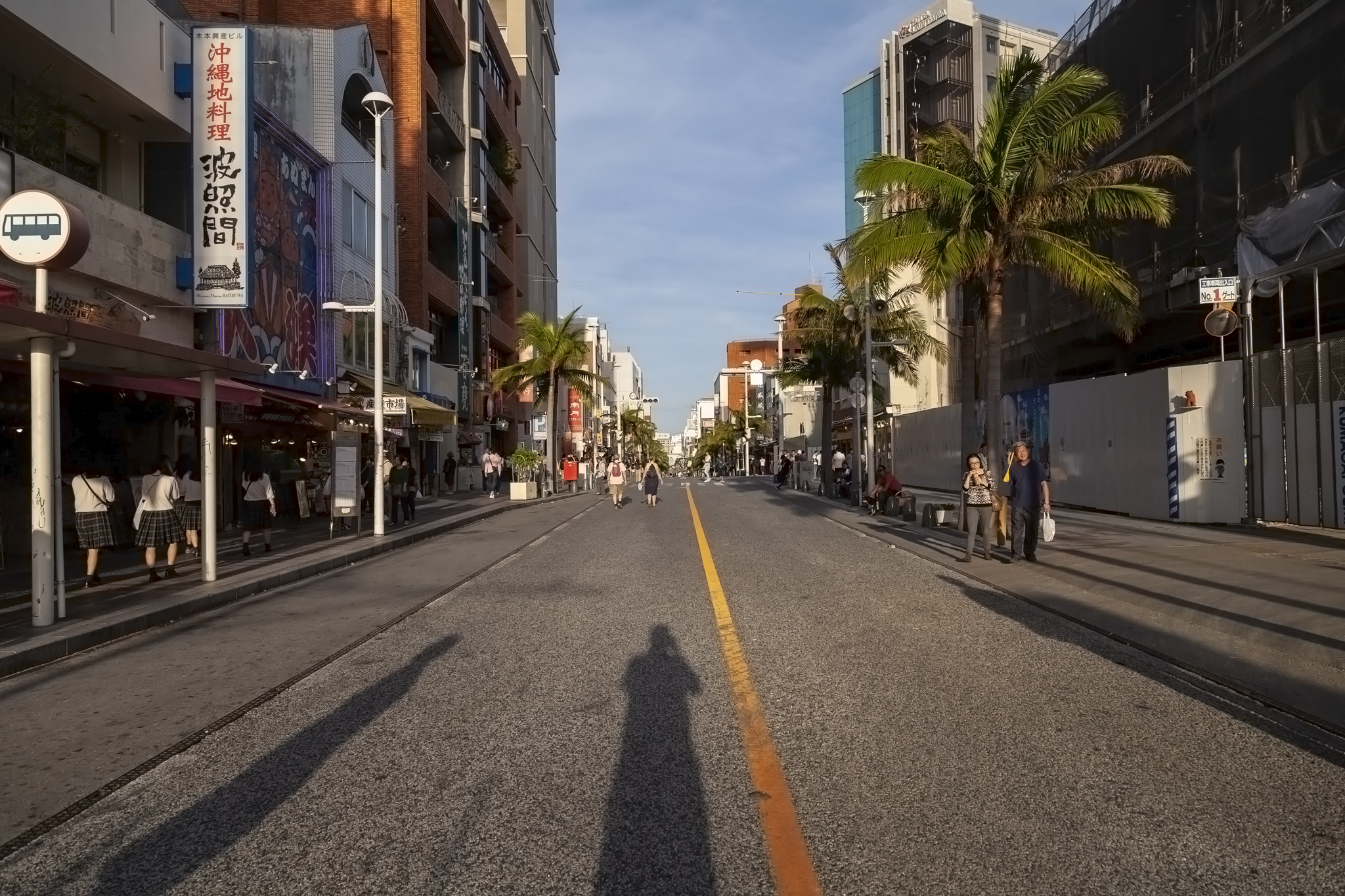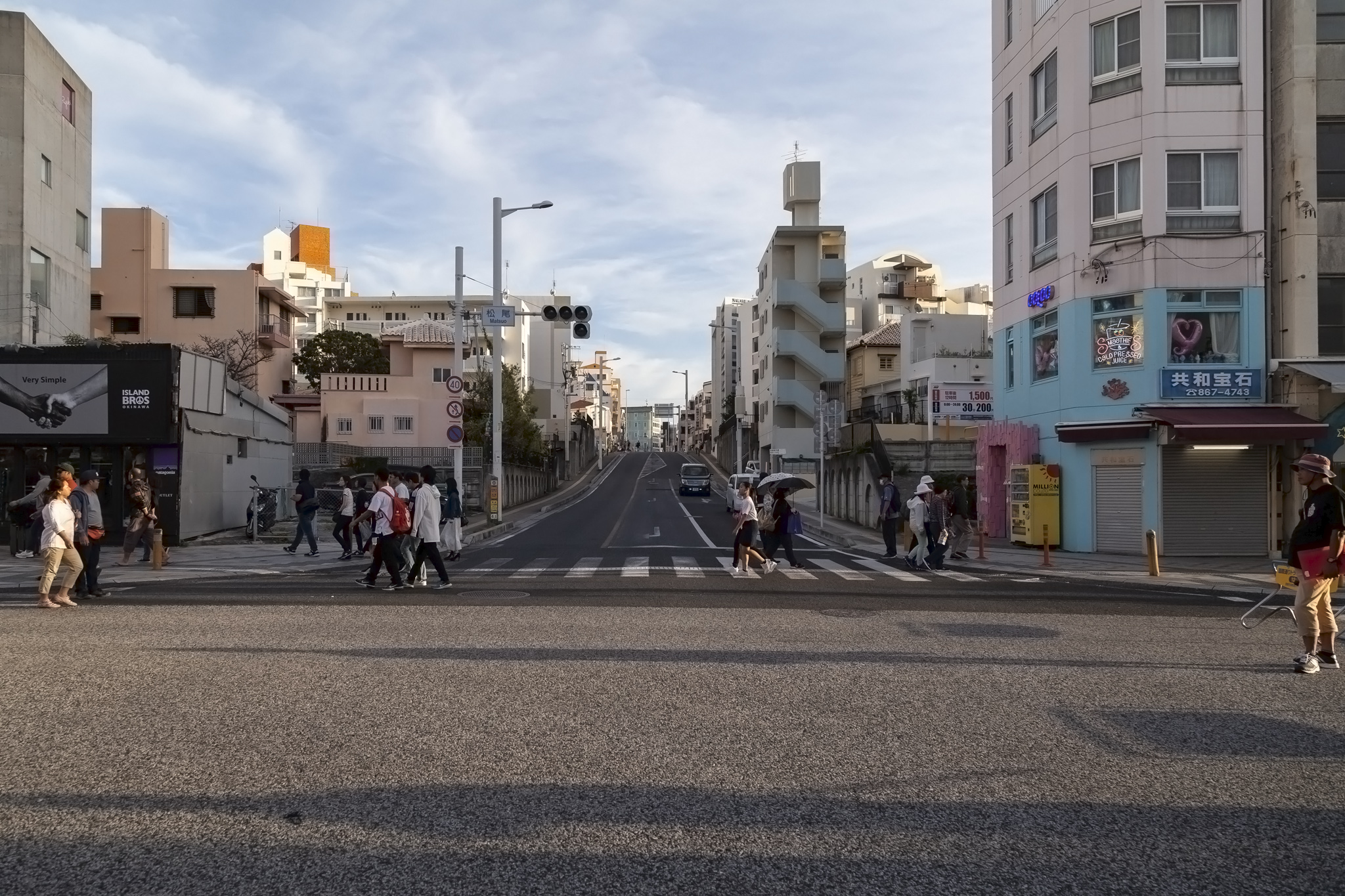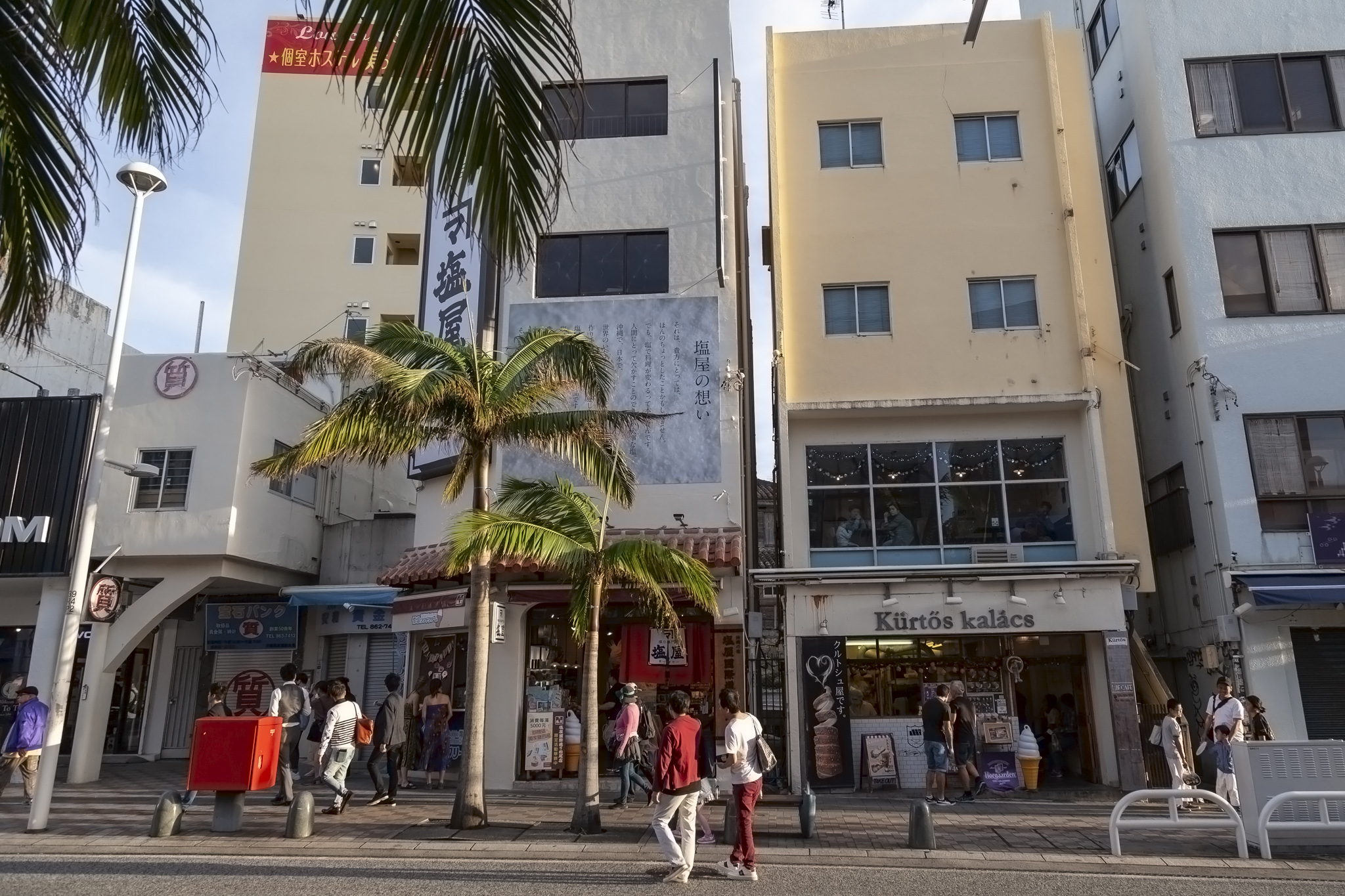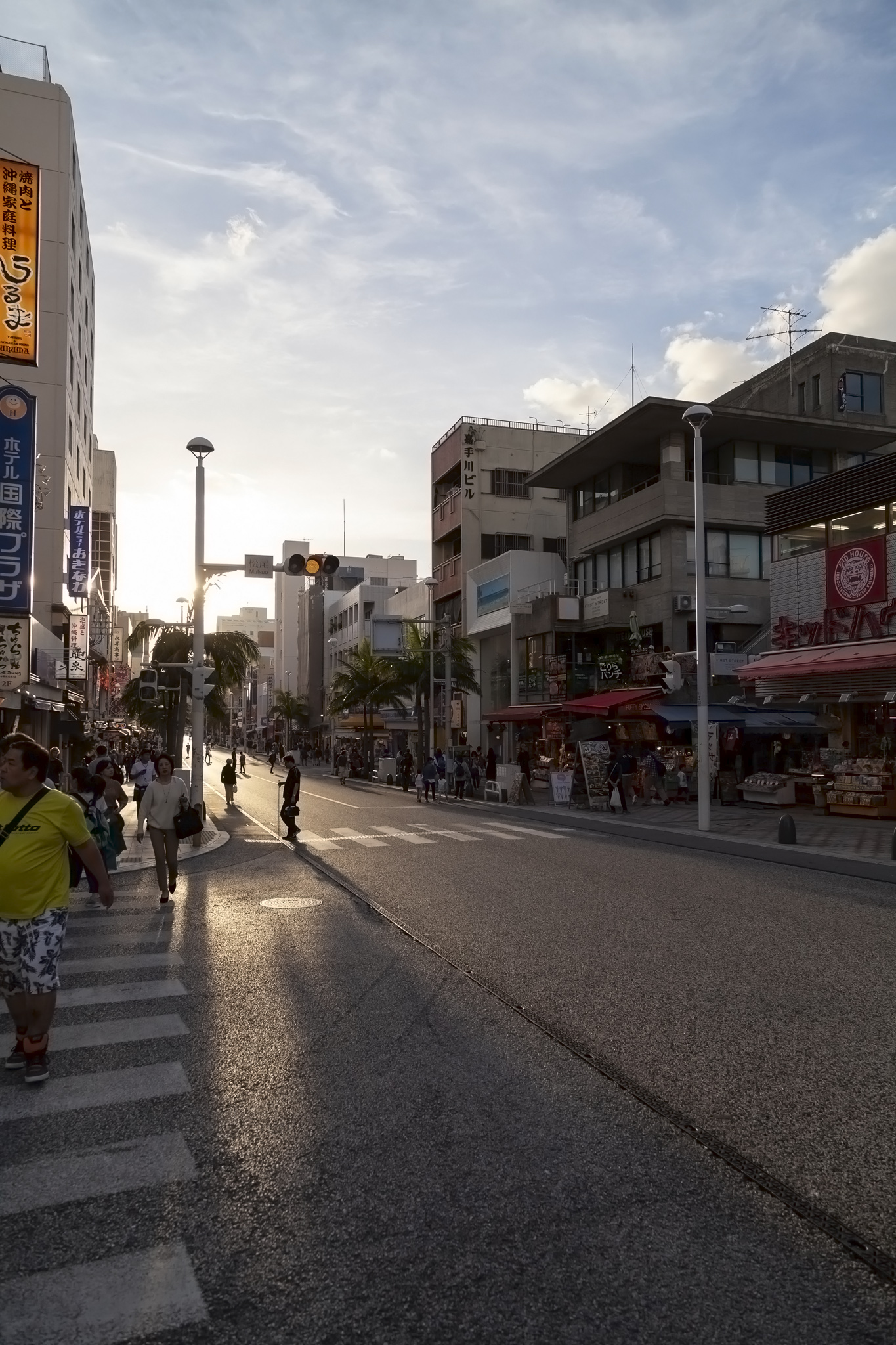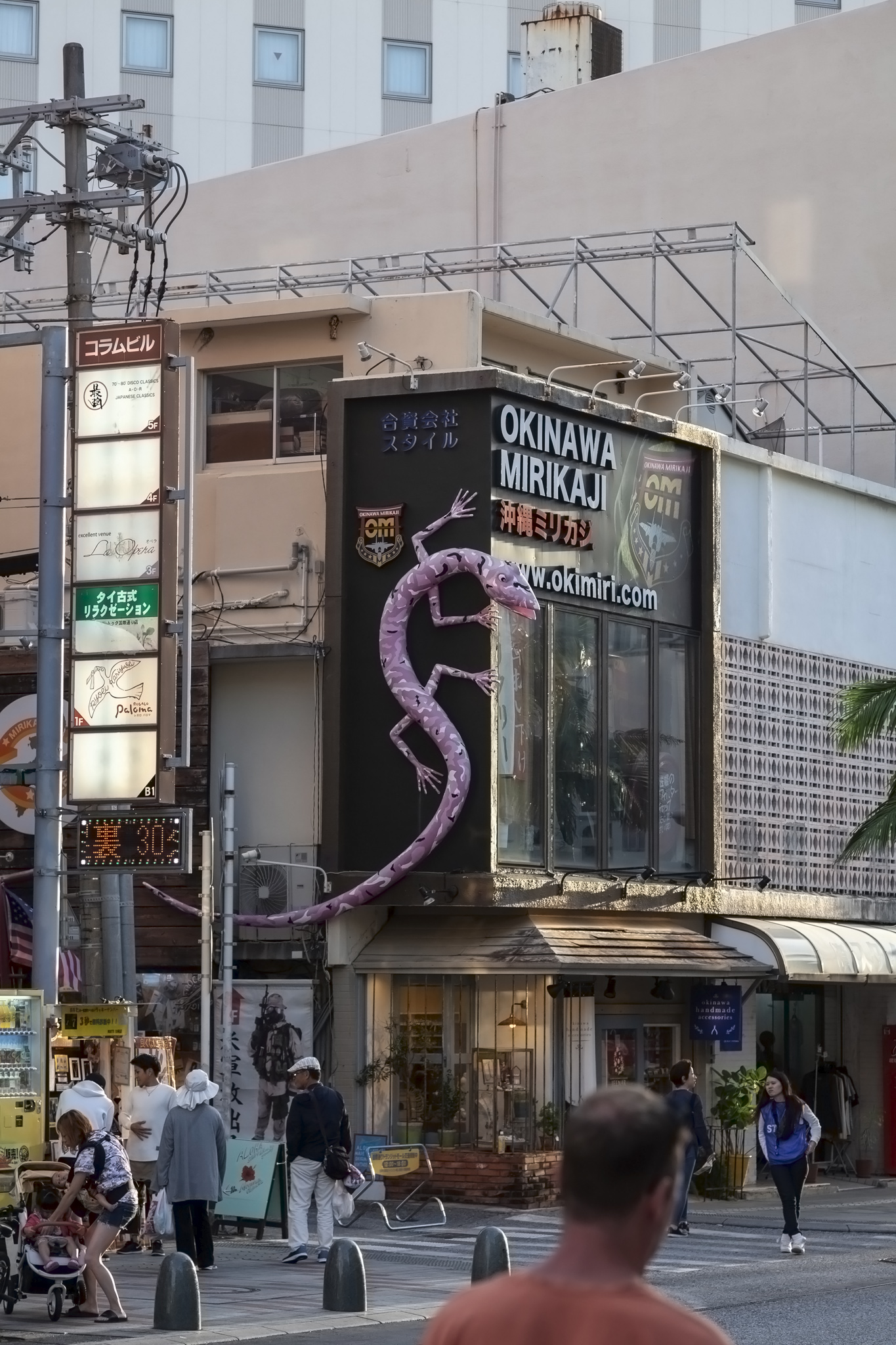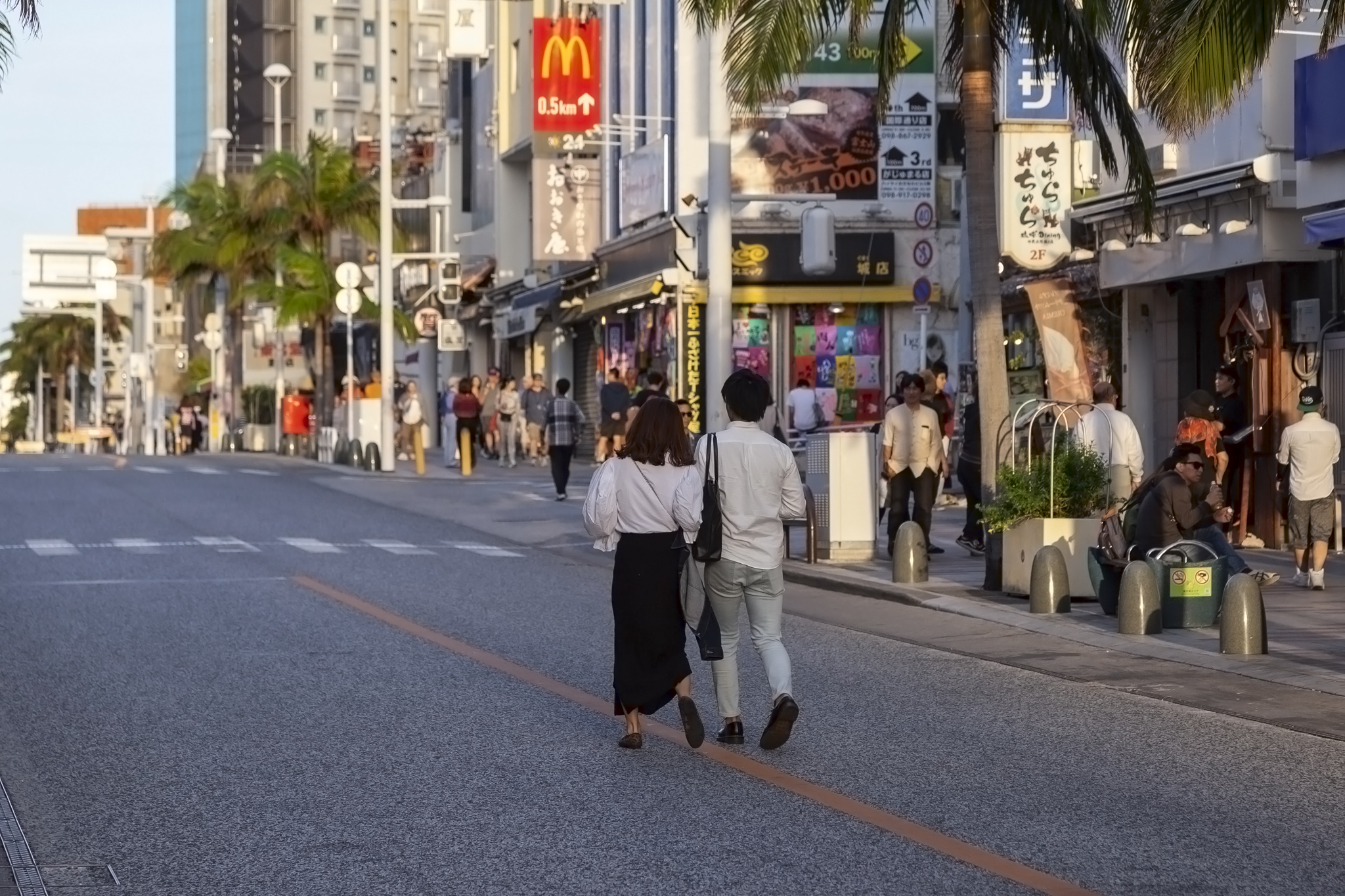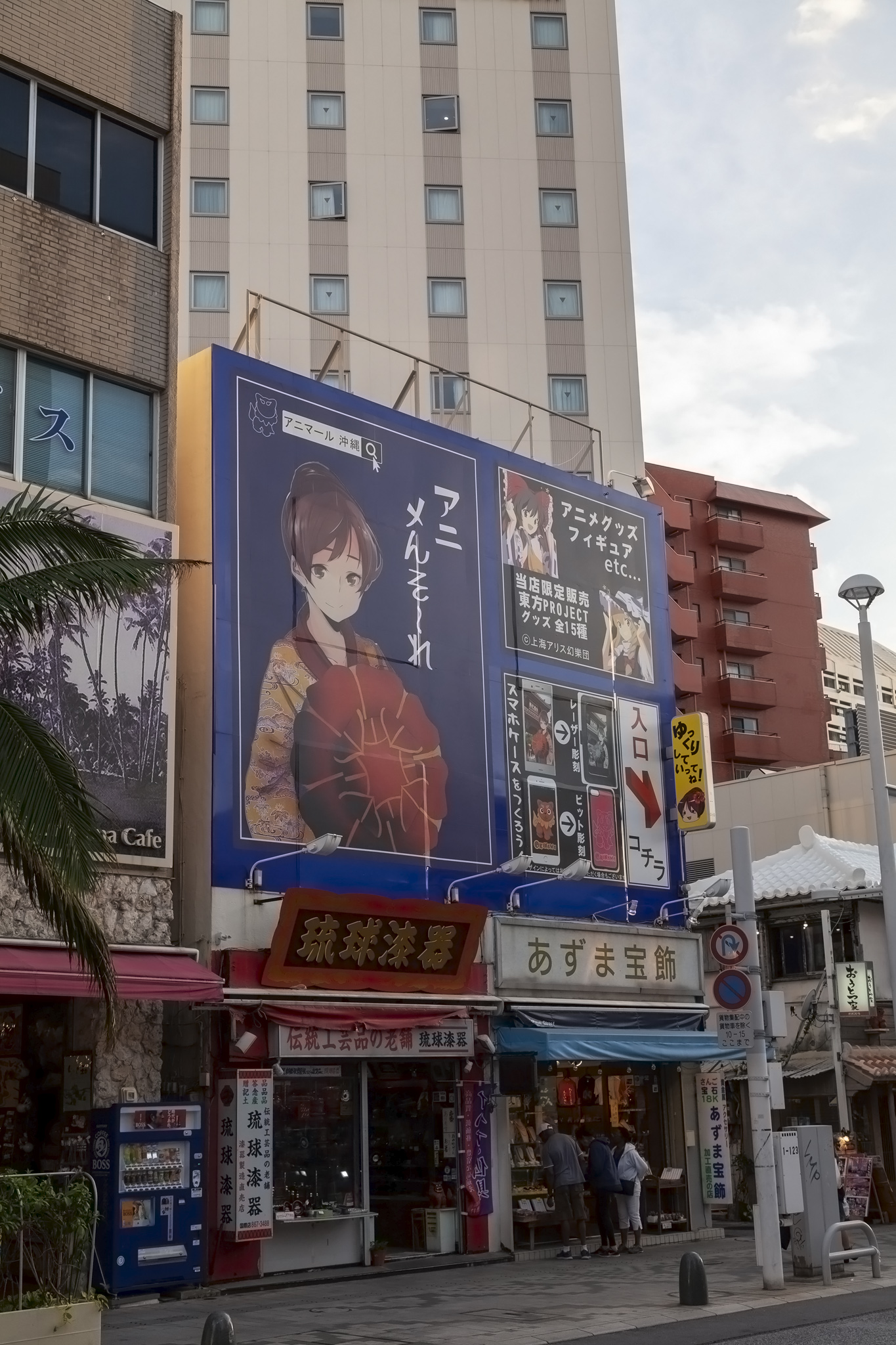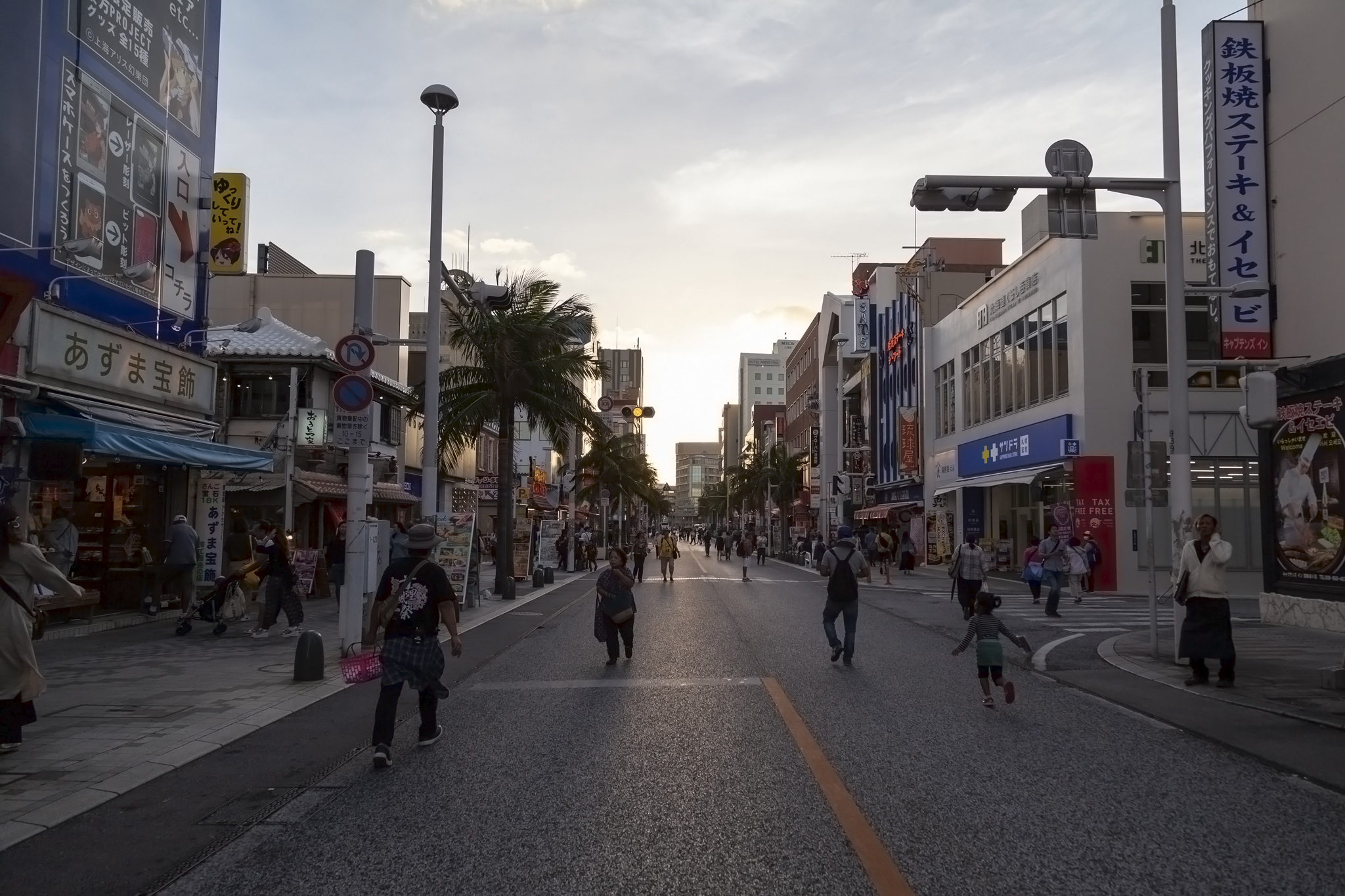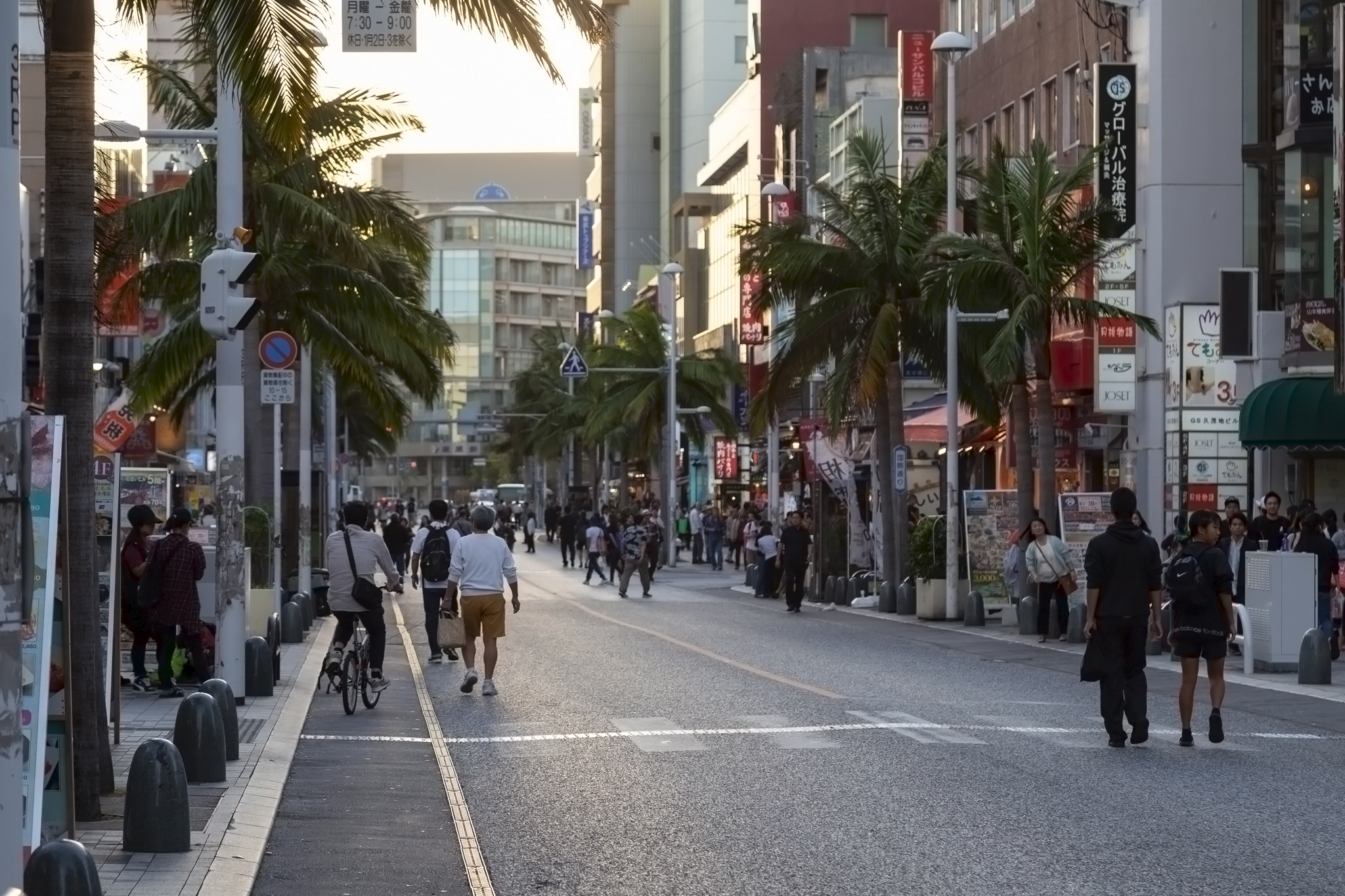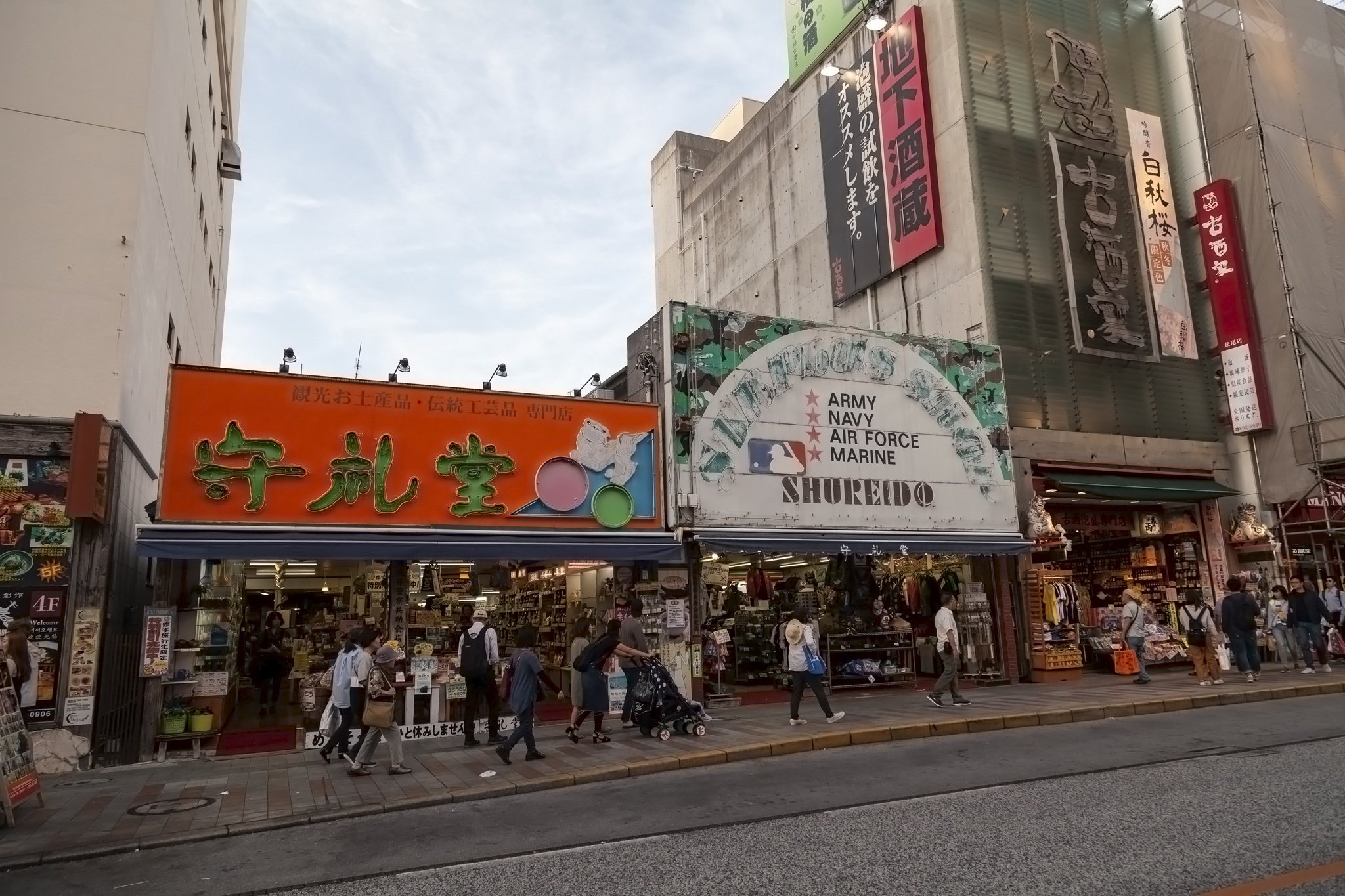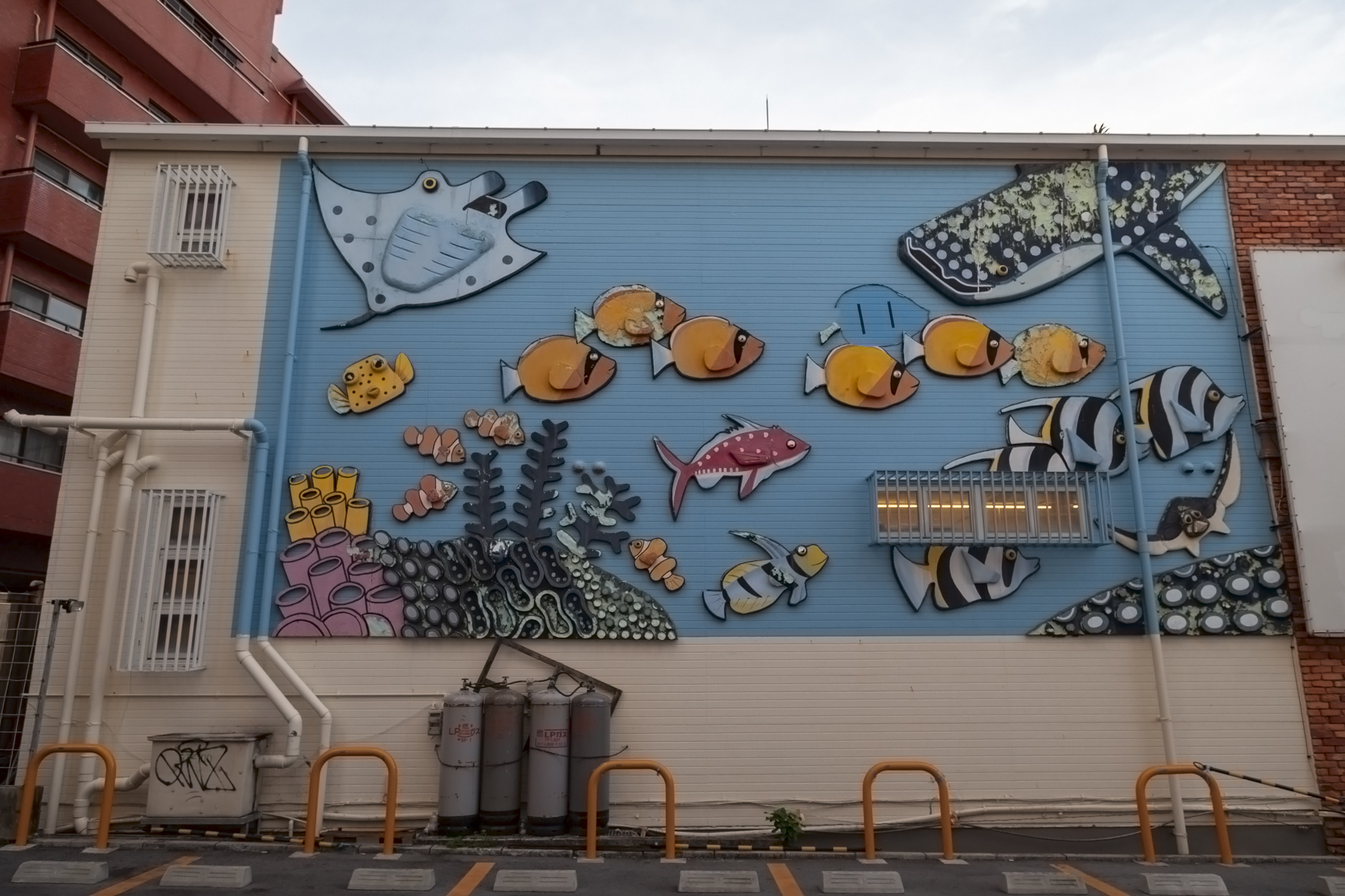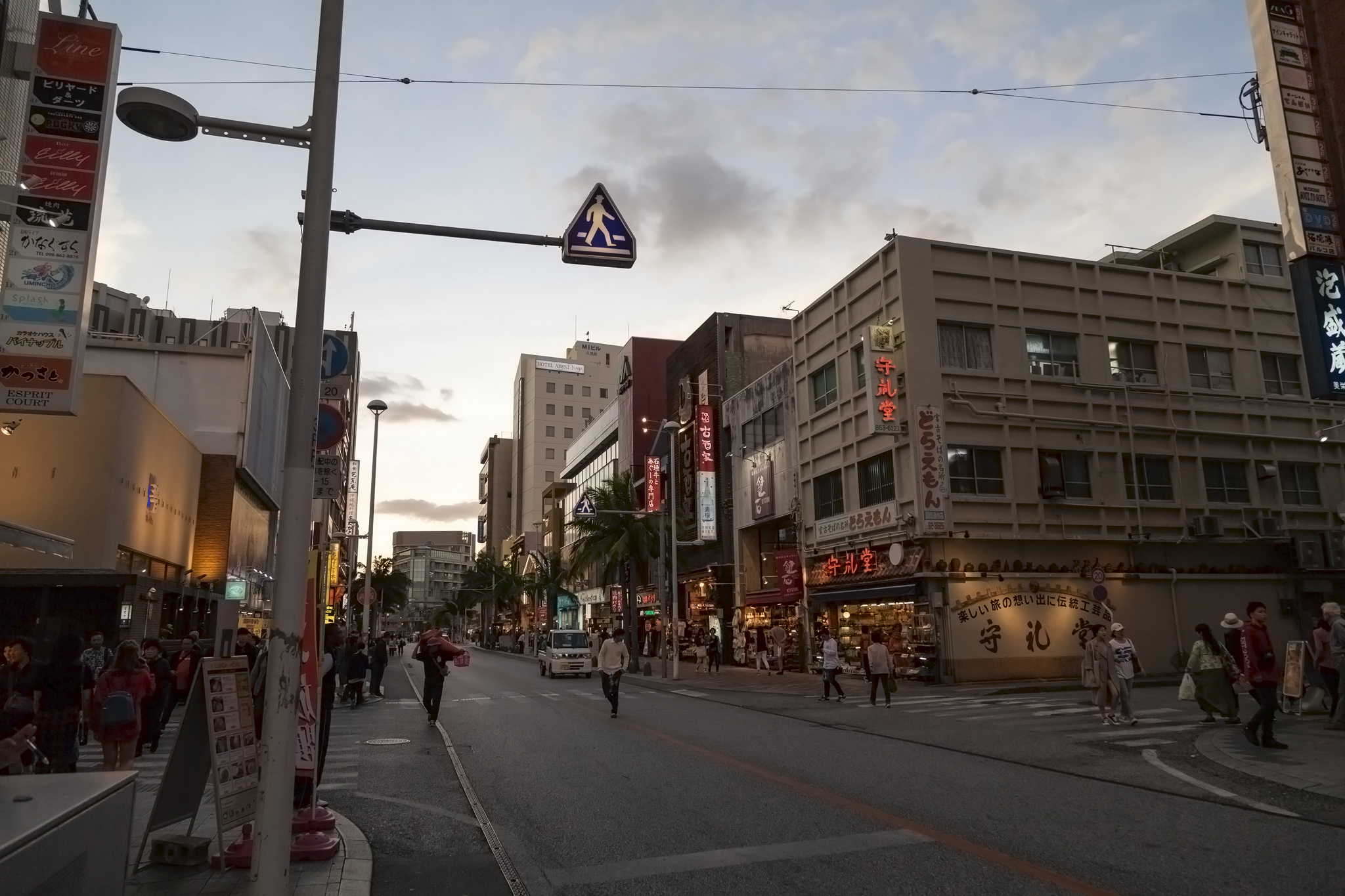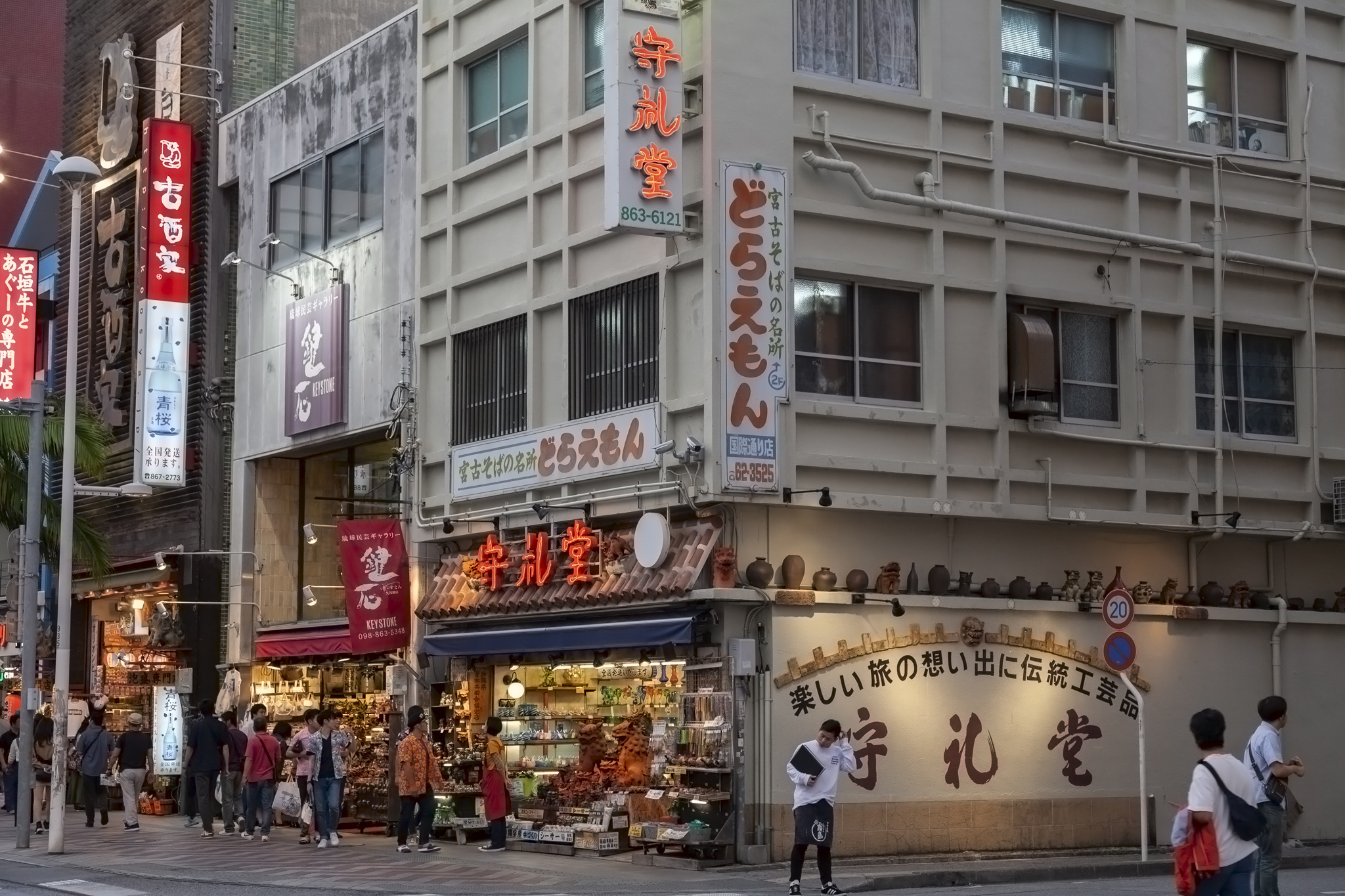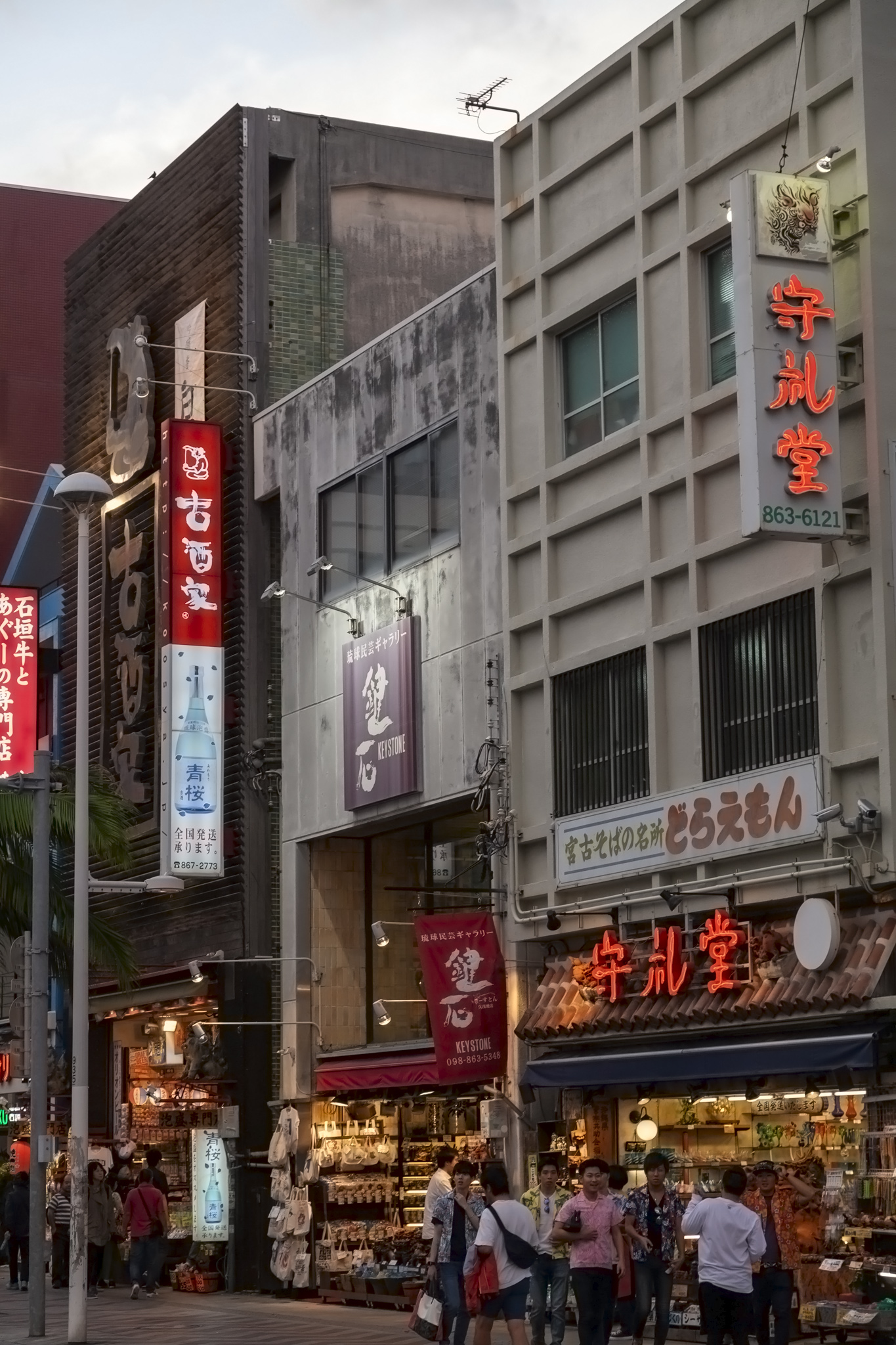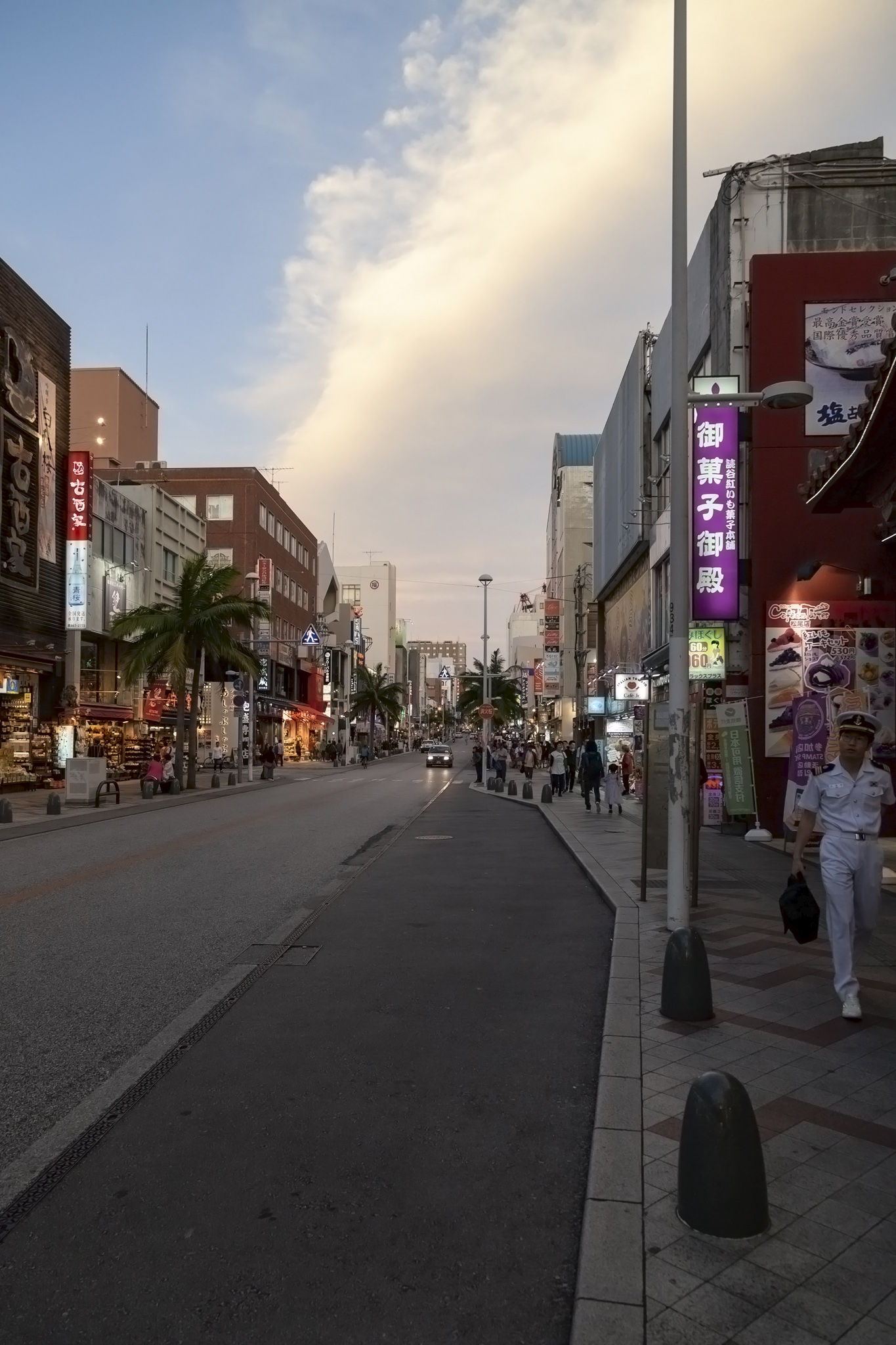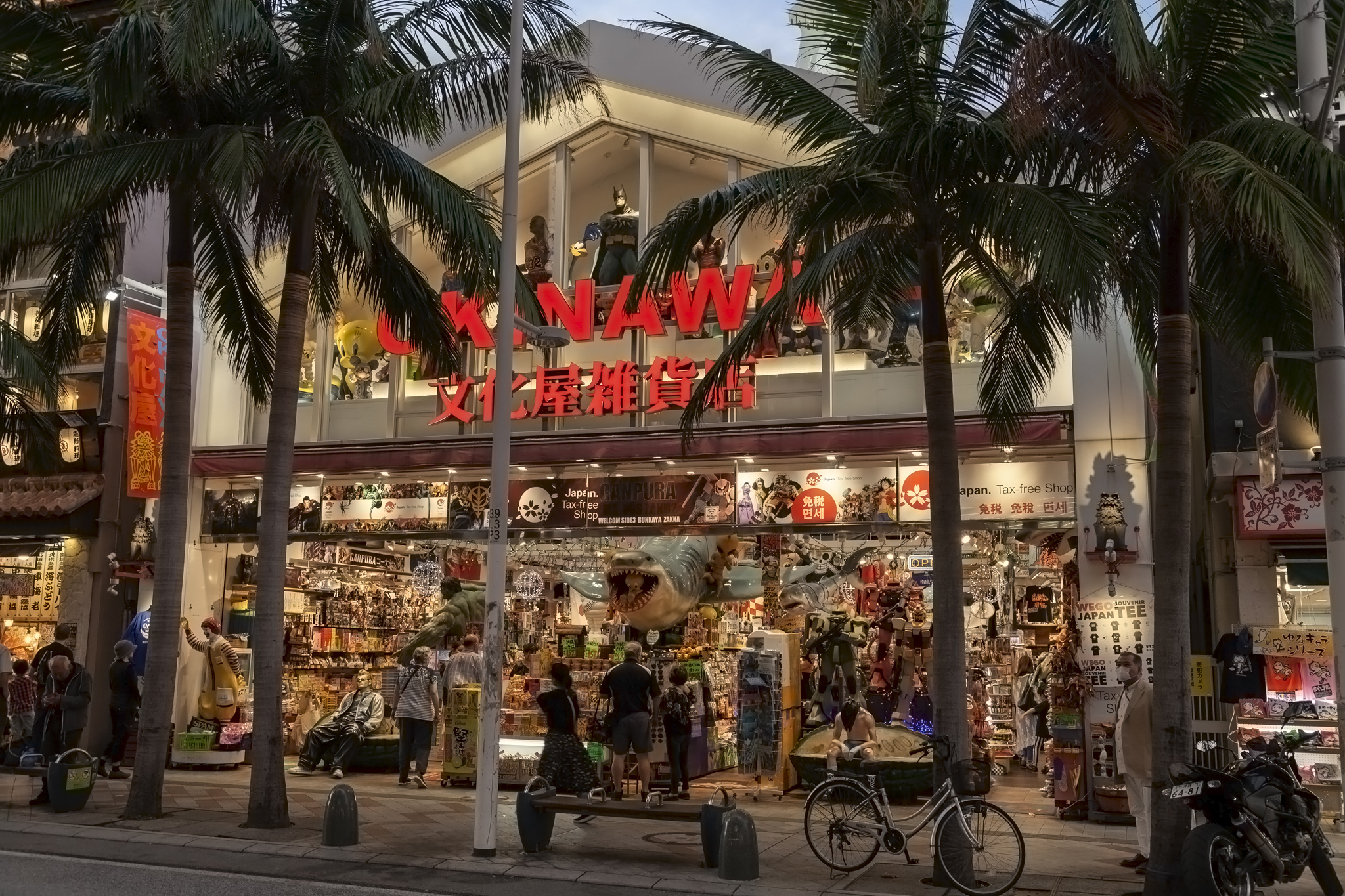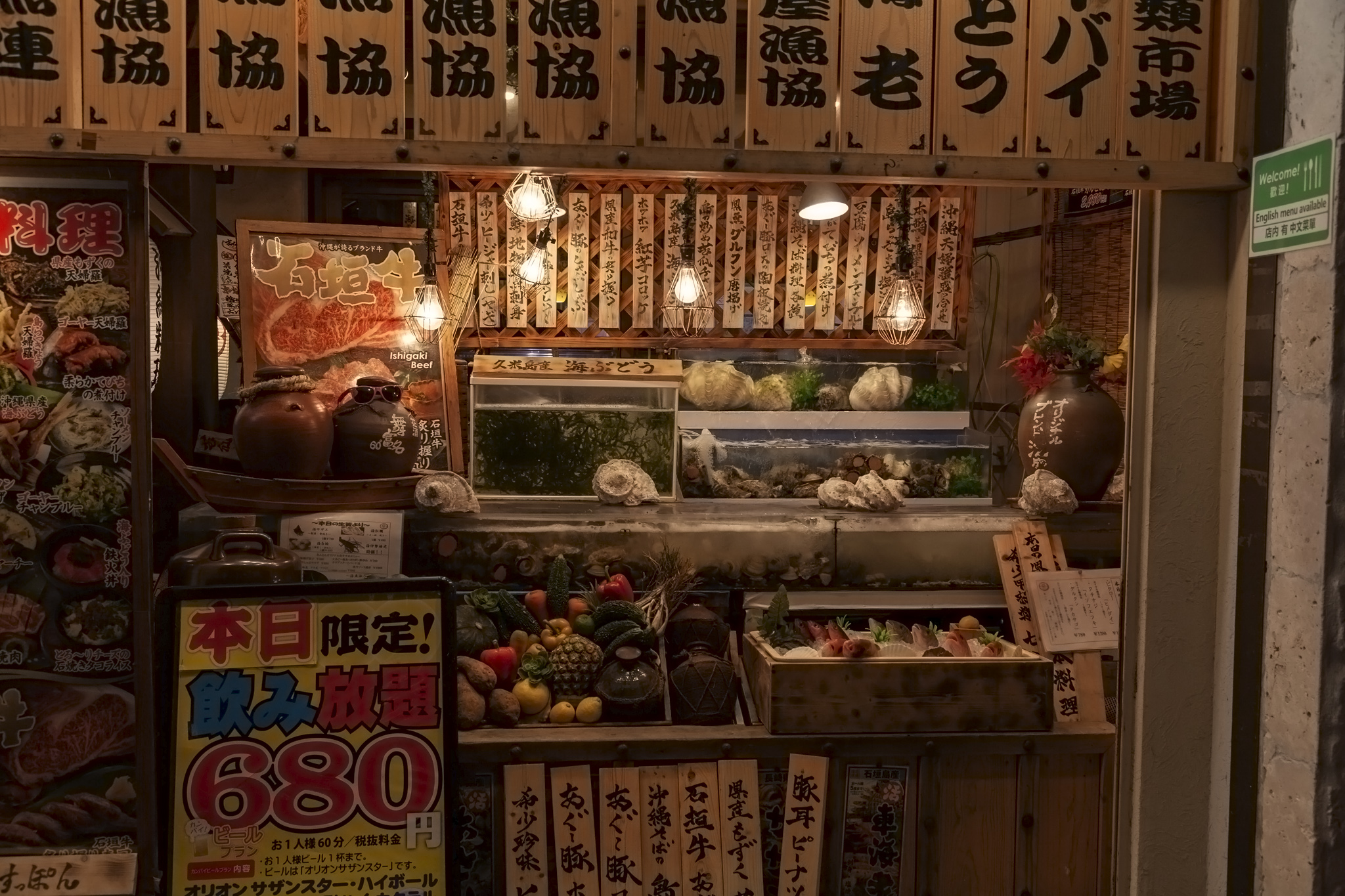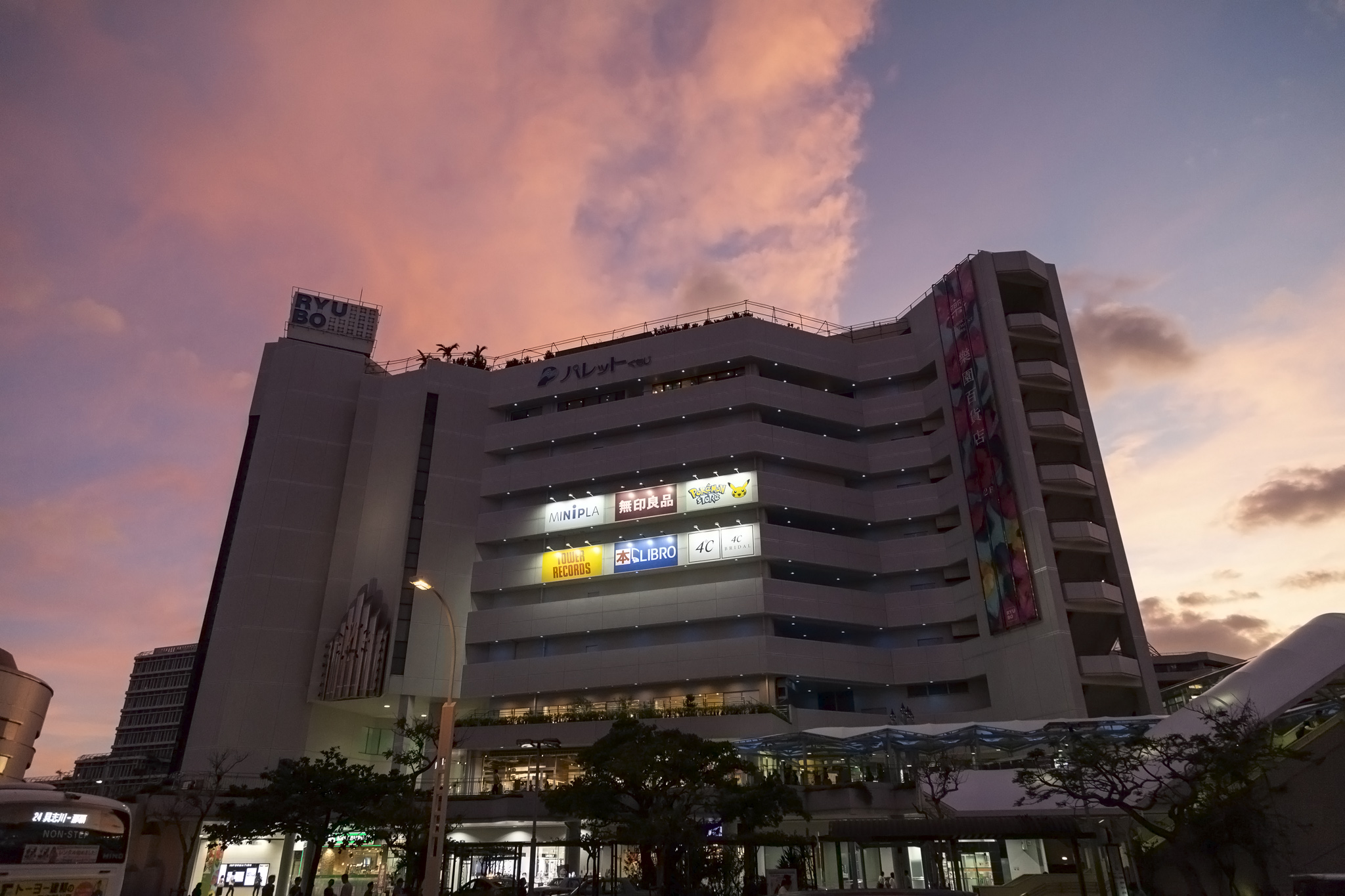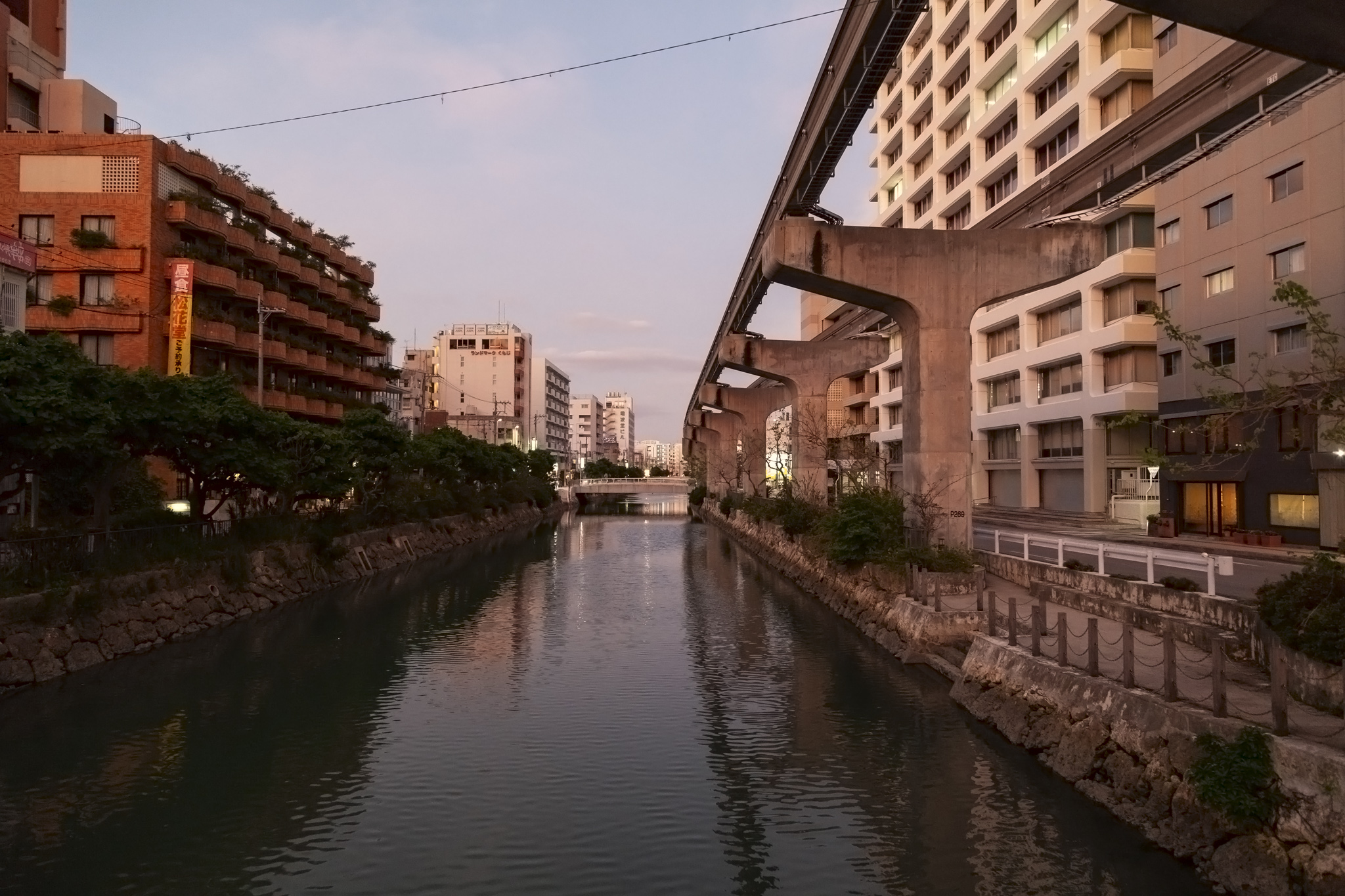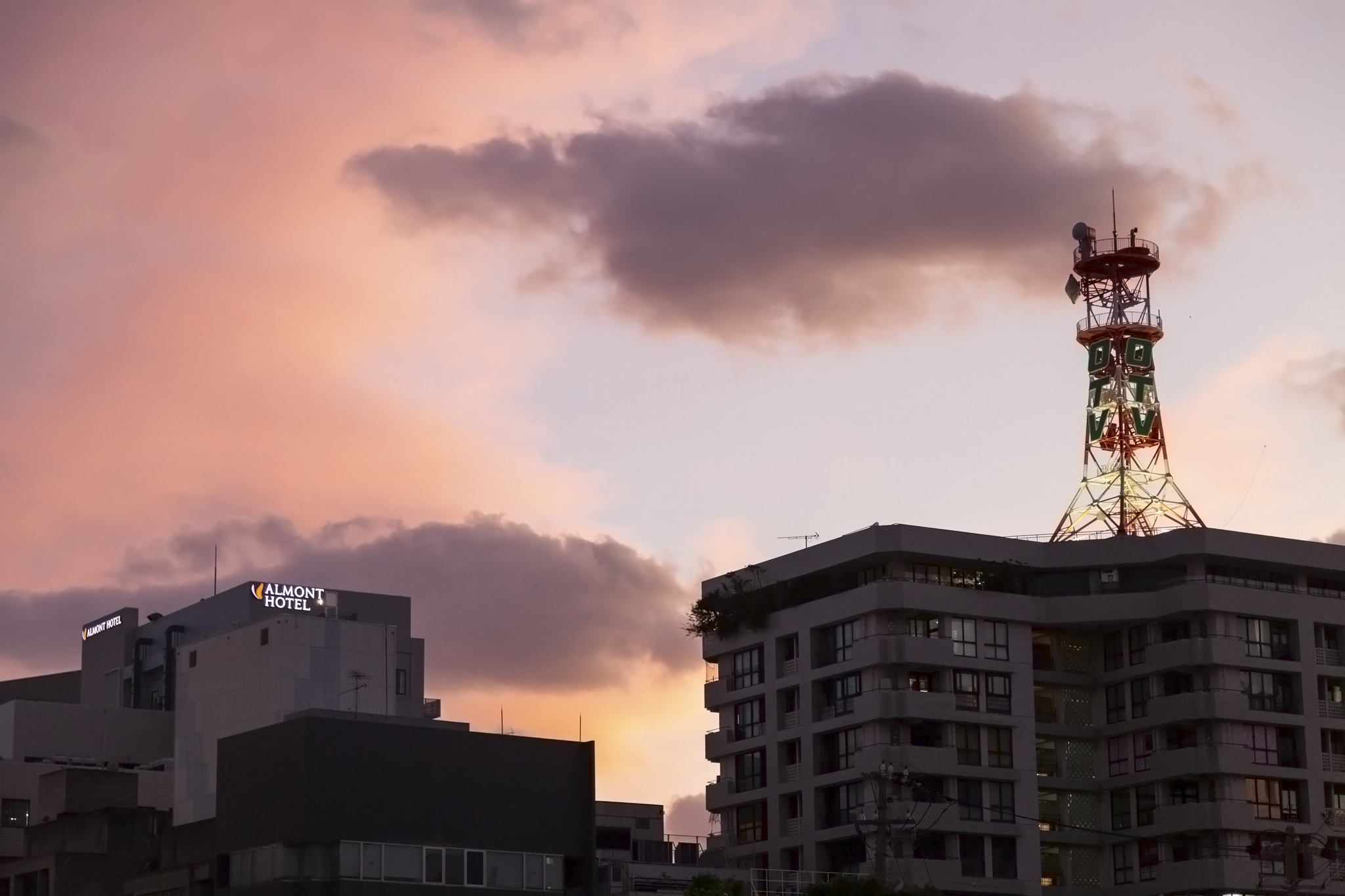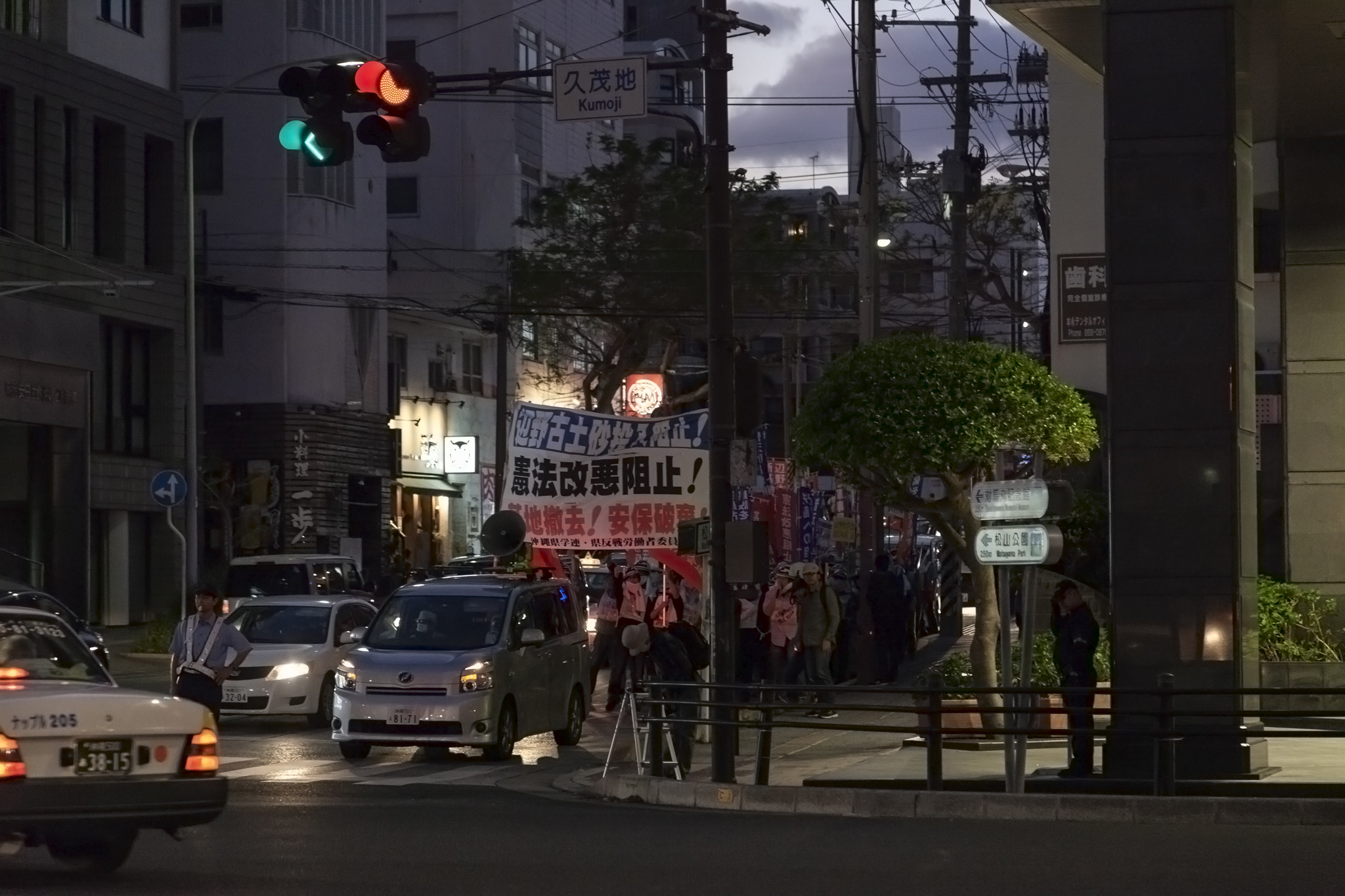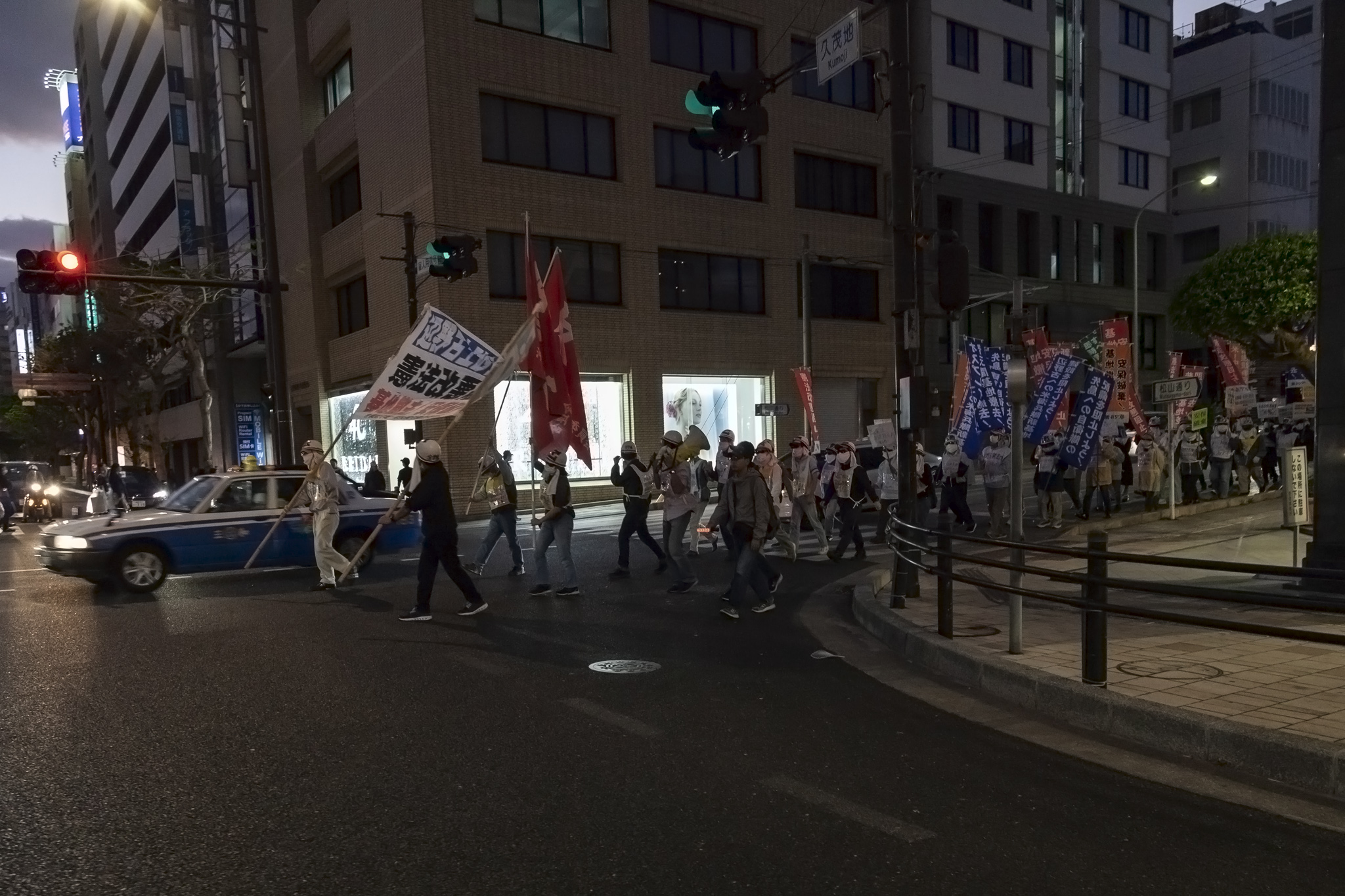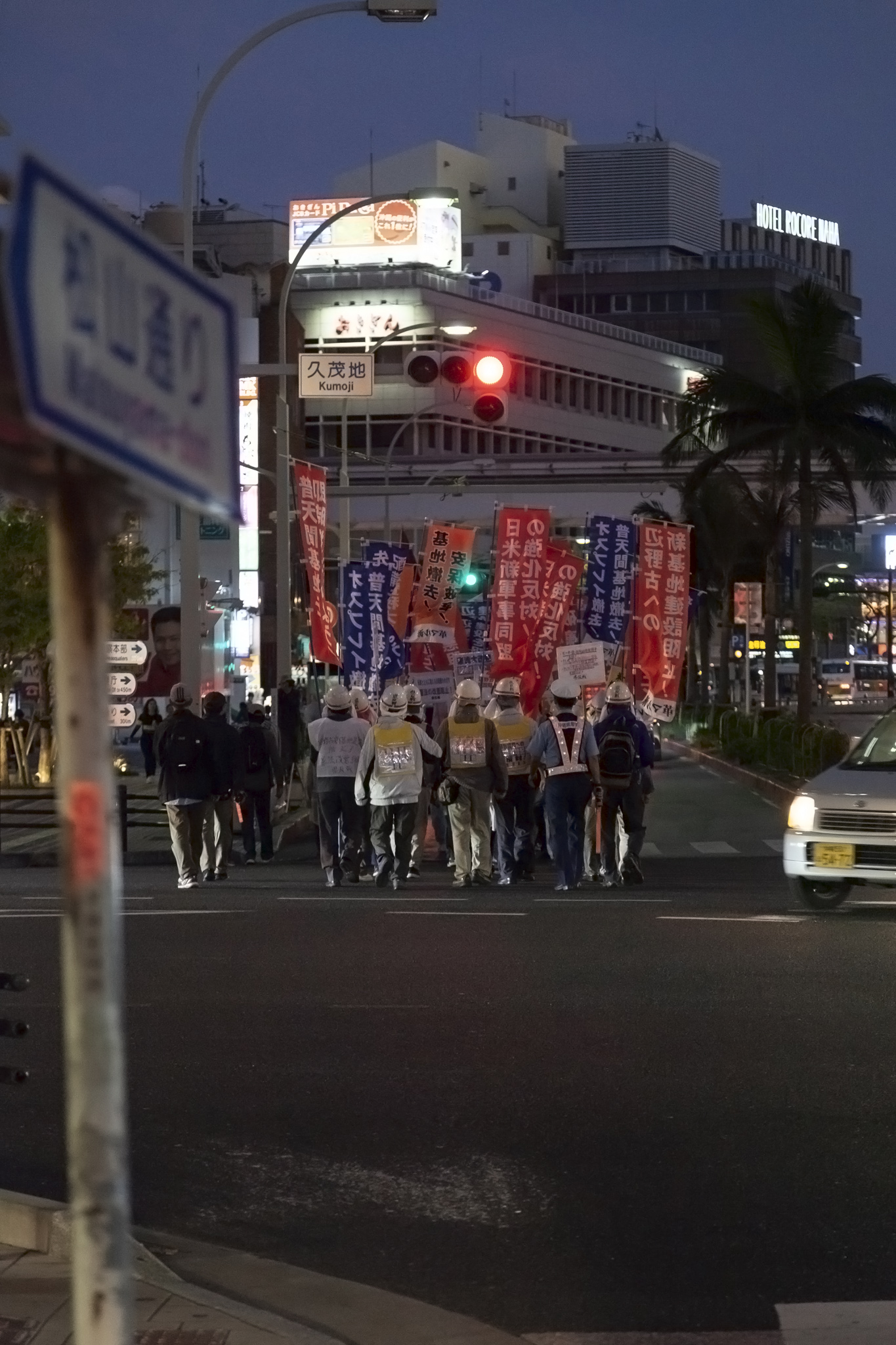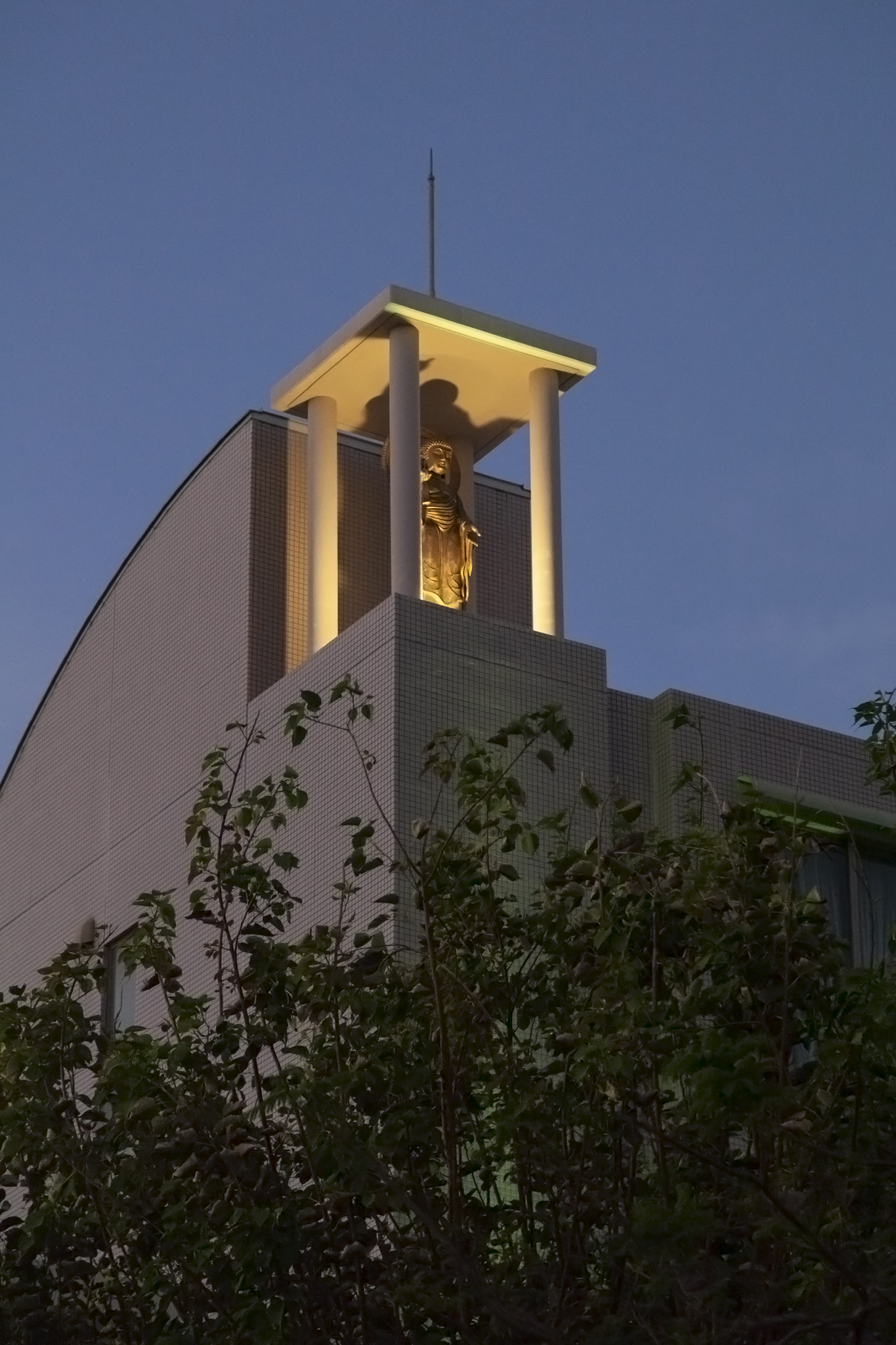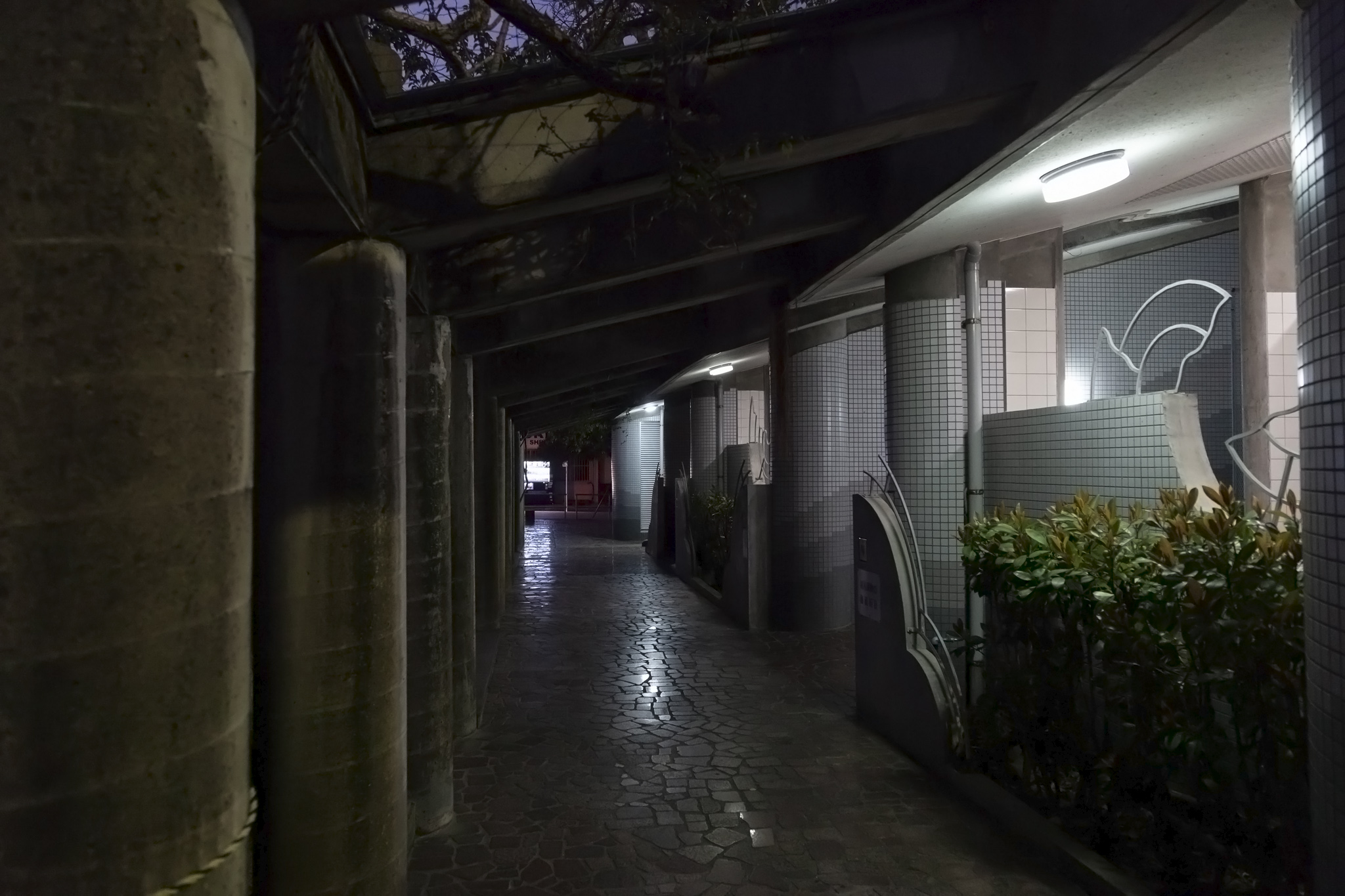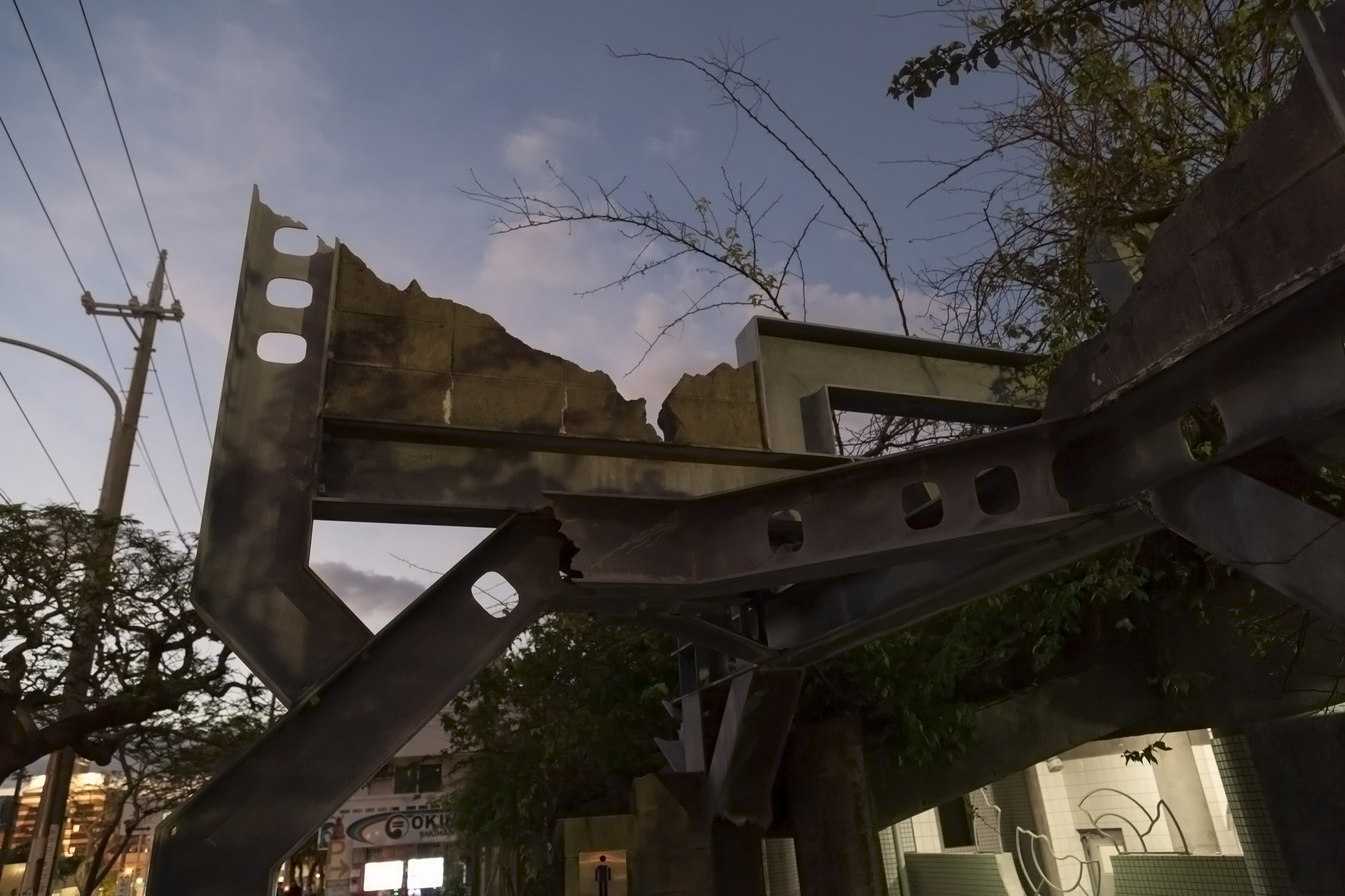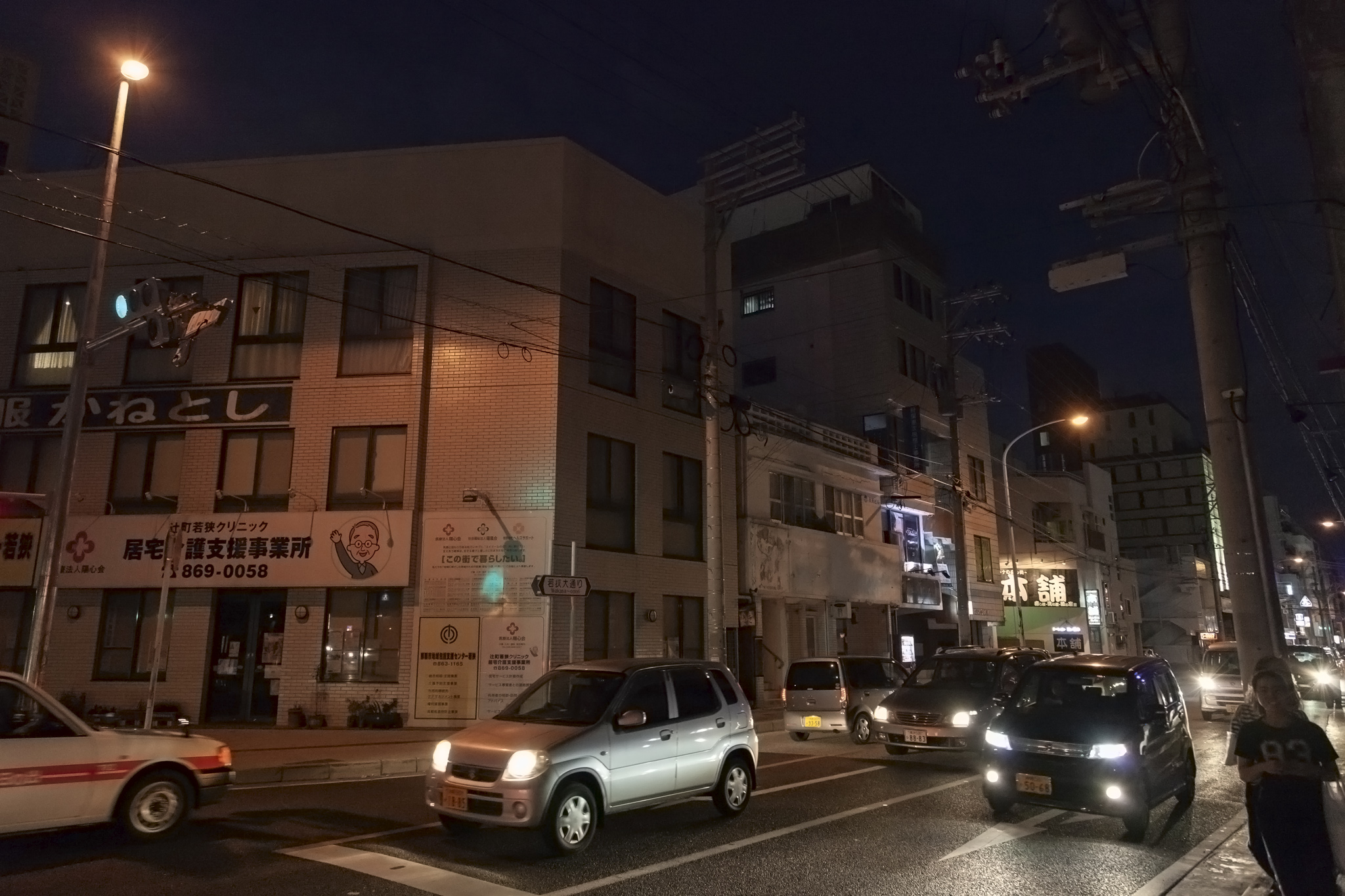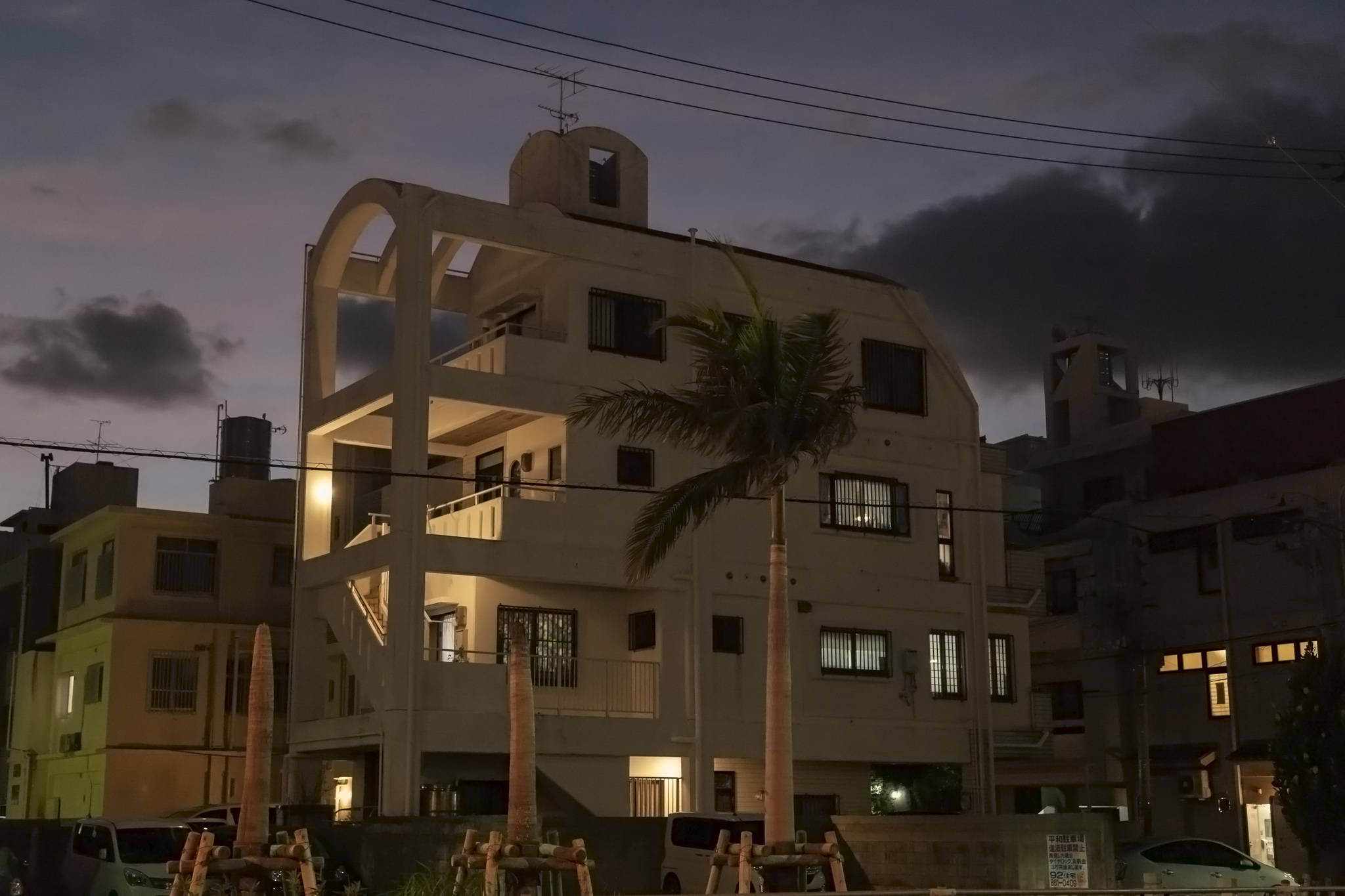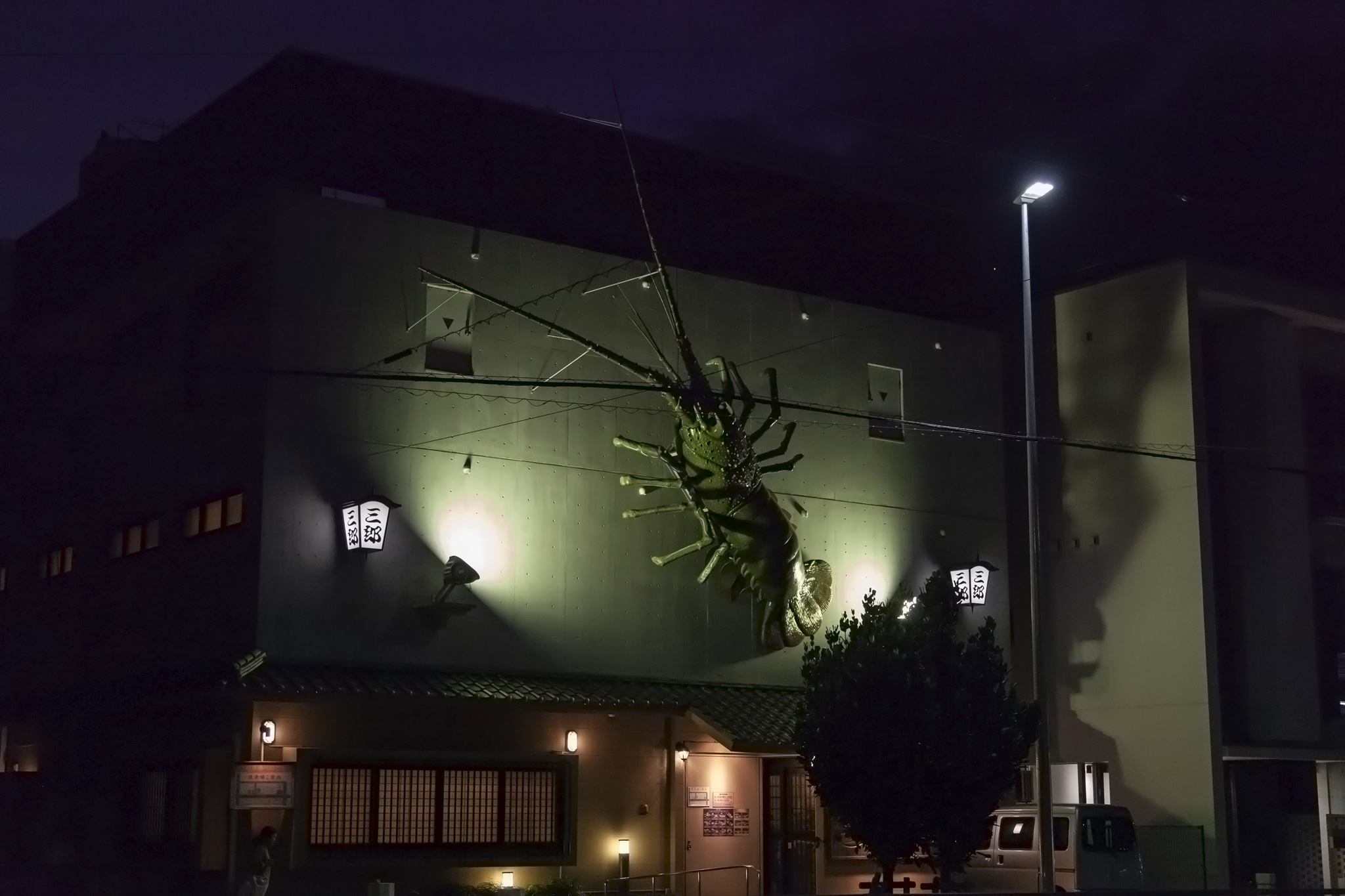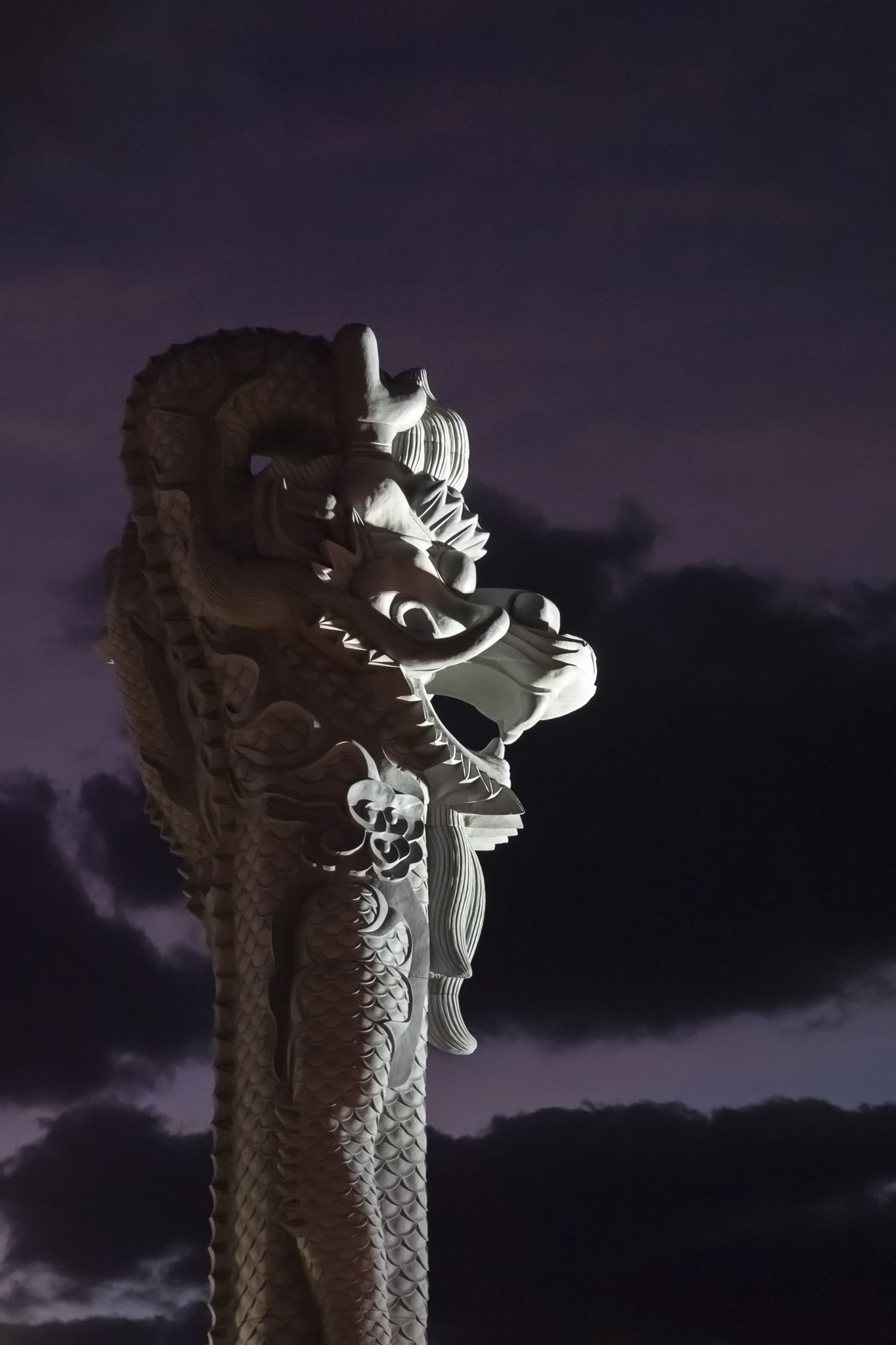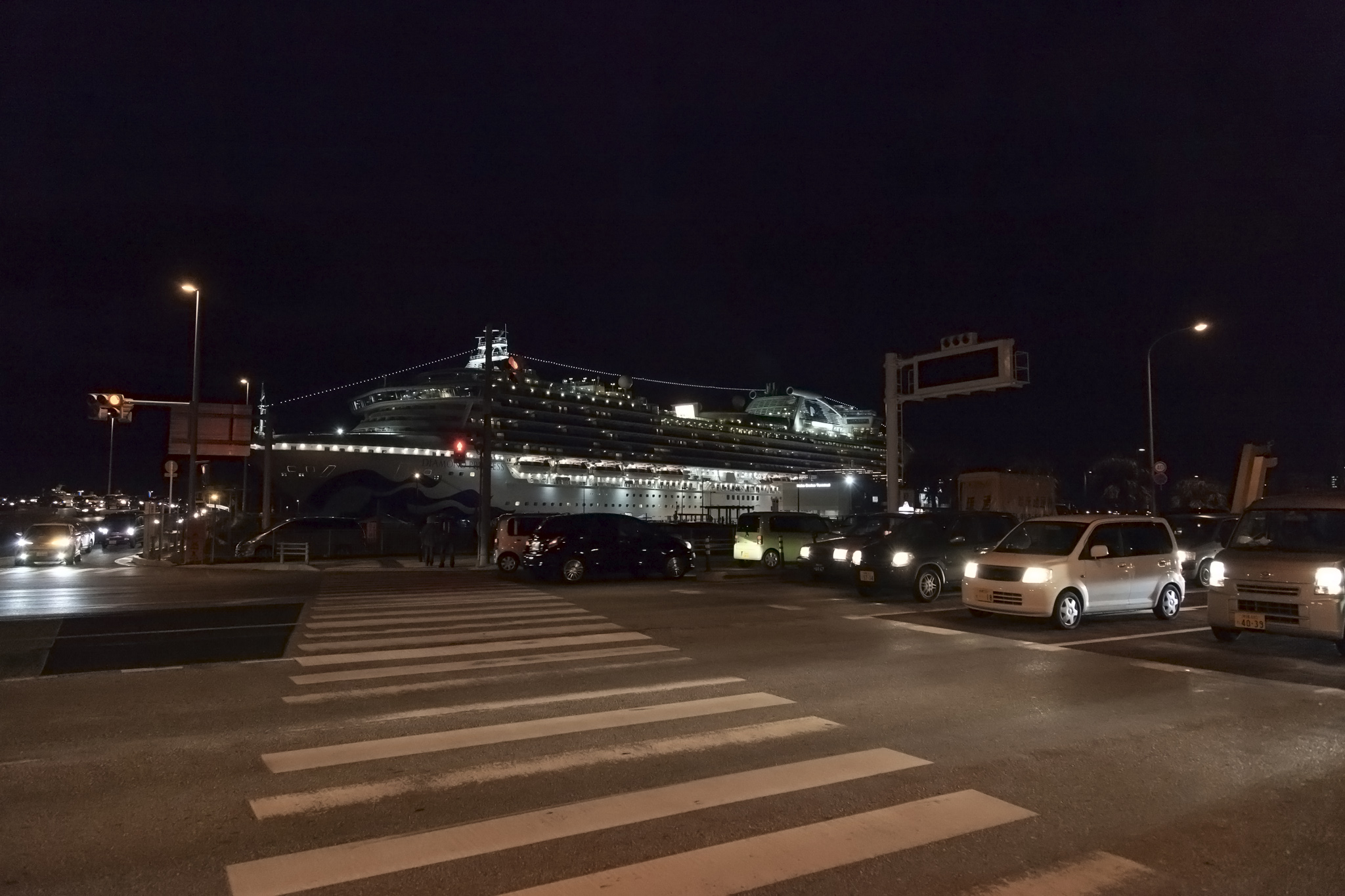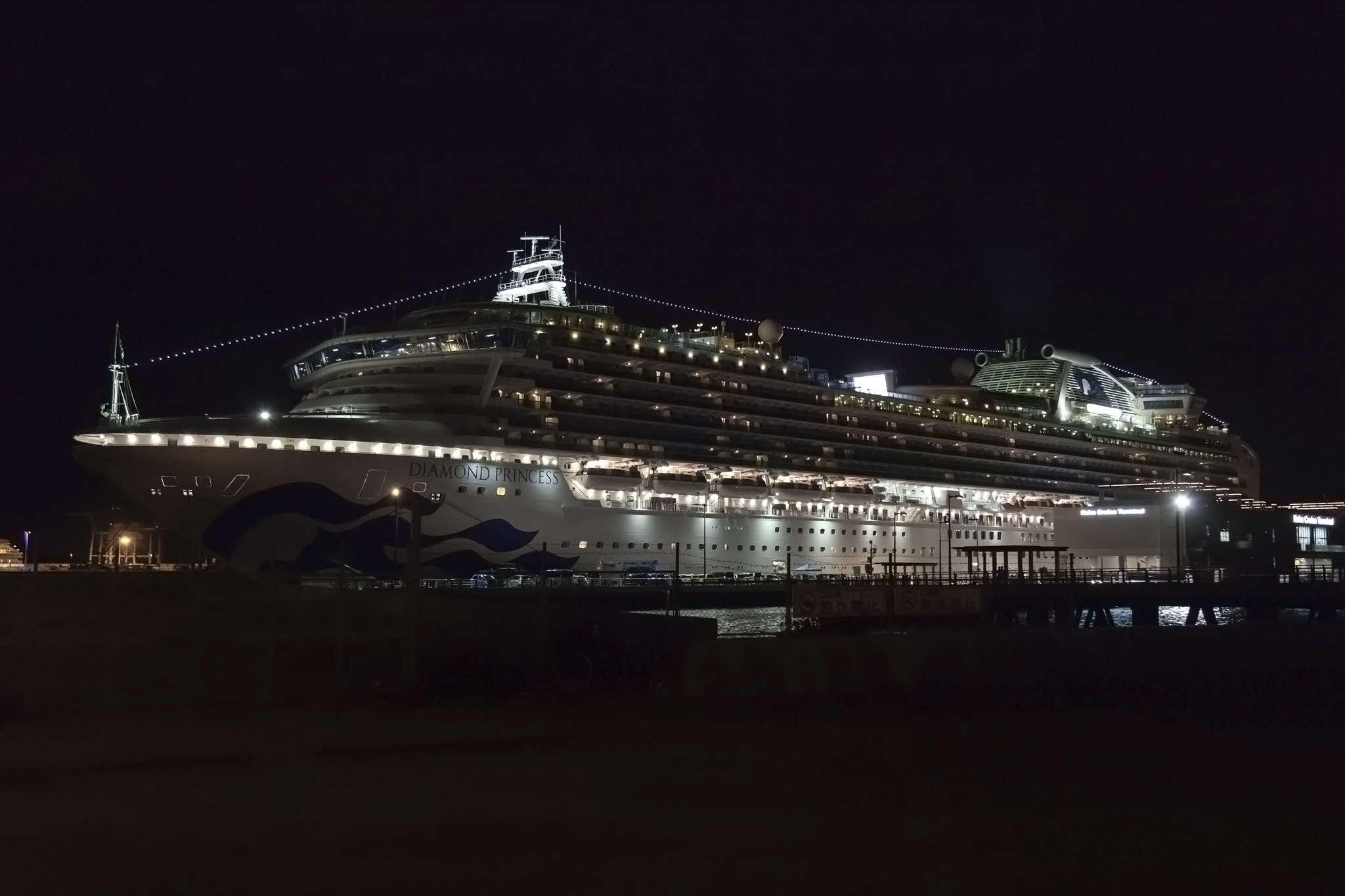We generally like taking excursions when we’re travelling abroad on cruises because we like to discover the cultural and historical elements of a particular port city or its environs rather than waste the opportunity to learn or see something of interest in favour of aimless wandering or just shopping or eating. Generally. On this cruise around Asia aboard Diamond Princess we’d veered a little into the aimless wandering groove on several stops, on some occasions to see whether it would suit us more while we’re getting older and wiser and more used to travelling, but on others, like Naha on Okinawa, because we’d been here before and because we’d simply not seen anything that jumped out at us from the available trips. In fact, to date, the island of Okinawa shares the honour of places we’ve cruised to and never done an excursion with the island of Guernsey. Guernsey, at least, has a lot of historical areas to explore on your own. Okinawa – certainly around Naha – doesn’t. What Naha does have, though, is Kokusaidori Street which stretches across the centre of the downtown area for around two kilometres and is lined with all the sorts of shops and sights you’d probably expect to see in any Japanese city. We’d explored Kokusaidori Street a decade earlier on our first trip to Naha and wanted to revisit the place and refresh the memory so once we’d finally been allowed through Japanese immigration we strolled off in its general direction with an obligatory glance back and photograph of our beautiful cruise ship to start.
Upon leaving the dock there is an obvious, wide, straightish road heading into the city that we followed. Two dragon statues marked the start of it and we passed by them, knowing that staying on the road we were on would bring us to Kokusaidori Street in about 15-20 minutes.
Or it would have taken us 15-20 minutes if I hadn’t been distracted by the appearance of a block of greenery on our left that demanded a quick exploring. This turned out to be Matsuyama Park and we didn’t know it at the time but it continued on the other side of the street too and looks like it’s worthy of a nose around if you’re passing by; we certainly will if we return to Okinawa on a future cruise. The park contained an artificial pond and several statues and monuments, though to what we couldn’t tell. One sign did seem to indicate that the original hospital of Naha may have been in the area. With some schools for younger children and some playgrounds in the area I kept my camera away for the most part. The other thing of note in this park was a large gathering of people in similar attire with placards and bullhorns. They didn’t look the friendliest bunch in the world so we steered clear of this group too and decided against any inadvertent antagonisation by keeping the camera firmly down. As it turned out this wouldn’t be the last time we saw them.
Leaving the park we continued approximately southeast along the road we’d been walking on with the only landmark of any note being when we crossed over one of the tributaries feeding into the Kokuba River, alongside which were the elevated concrete rail pillars we remembered fondly from our previous visit to the city.
This then brought us to the large four-way road junction with its diagonal pedestrian crossing markings that signified the start of Kokusaidori Street and it was here that we encountered a wonderful surprise: the street was entirely closed off to traffic so we would be free to wander along its length and cross over to view shops at leisure. We didn’t know if this was just something they did on a Sunday (it was a Sunday when we were there) but it meant there was a gentle pace to exploring that could be shared by both locals and tourists alike.
It was great to see some people really making an effort and enjoying the pleasant temperature of the late afternoon on Naha’s main shopping street.
We then discovered the reason that Kokusaidori Street had been closed off. Our visit to the city of Naha had coincided with a large, public martial arts demonstration. Within many of the city blocks there were one or two red carpeted areas on which either a demonstration of moves was taking place or had already done so by the time we arrived. Groups were either engaged in their moves or milling about awaiting their turn. People in white martial arts outfits ranged in age from the youngest of children to the oldest of men and women. We saw some with sticks and some with other weaponry but the vast majority were unarmed. Some signs on poles along the street seemed to indicate that karate was the main martial art on show although I can’t say for certain that every person demonstrating to the onlookers was definitely performing just that skill.
The sun getting lower in the sky made for some lovely long shadows along the street.
We’d been making our way slowly along Kokusaidori Street in a roughly easterly direction all this time as we’d been entertained by the martial artists along its length when we spotted something very familiar to us. During our first visit to Naha we’d very much enjoyed finding an indoor market area and had picked up some souvenirs at the time. Guarded by an odd-looking sculpture of a creature playing a musical instrument we saw the arched entrance of the market again and decided to pop in for a look to see if anything would entice us to part with our wallet of yen.
Emerging back into the noticeably fading light but without any goodies we endeavoured instead to head back down Kokusaidori Street and check out some of the many shops we’d passed on the way up. The martial arts demonstrations had come to an end at this time and we could see some of the children being warmly congratulated by proud parents while adult practitioneers seemed to be drifting away in groups too.
It was strange to see so many Japanese schoolchildren around with it being a Sunday but not quite so strange as seeing a few of the schoolgirls taking photos of their sausages on sticks in the middle of the emptying road.
We ducked into several shops and started to spend our money. We like trying to use local currency when we’re travelling because it gives us a chance to pick up small change and keep it as a memory of our trips. Importantly, though, if you are travelling to Japan then it really helps to have yen on you because while it’s a very advanced country technologically in many ways we’ve found that the use of credit cards is not as widespread as you might expect; many businesses will only accept cash so if you’re looking to spend in Japan then keep that in mind. You can read more about this tip and others by looking at mistakes to avoid when planning a trip to Japan.
As we got closer to the junction that would mark the end of Kokusaidori Street and the point at which we would be turning back towards the direction of the cruise ship the low sunlight that had been creating such lovely long shadows along the concrete disappeared behind distant parts of the city and with that darkening of the evening the lights of the buildings became more prominent.
Dusk cast the evening sky over Naha City into gorgeous shades of pinks, purples, and dusty blues.
Now, you may remember me mentioning the group of people we’d stumbled upon who’d been preparing placards in Matsuyama Park when we’d paid that area of greenery a visit on our way towards Kokusaidori Street. On our walk back towards Diamond Princess we encountered that same group only this time they were in full protest mode. Slowly marching down the road they were accompanied by vehicles travelling at the same pace and one person inside one of those to which was attached a huge megaphone was yelling slogans to the sound of heavy drumming. Our grasp of Japanese is as close to zero as makes no difference so quite what this group were upset at was and still remains a complete mystery.
The remainder of the walk towards the cruise port took place in suddenly very dark conditions. It’s quite weird to look back now and see just how quickly the sky turned from twilight to pitch black. A few buildings were eyecatching enough in the dim conditions to photograph and the most interesting places included a building with a giant lobster on its exterior wall and public toilets with twisted industrial decorations outside.
Eventually we reached the dragon sculpture marker that signalled we’d reached the end of the urban part of Naha and the start of the port area but with this being night and with Diamond Princess being lit up and impossible to miss we didn’t really need any help identifying the location.
This then was our last moment at a port of call on our second cruise aboard Diamond Princess ten years apart. Following our departure from Okinawa we would have two relaxing days at sea before our cruise would end where it started, in Yokohama, and where we would sadly have to leave Asia and head home.
